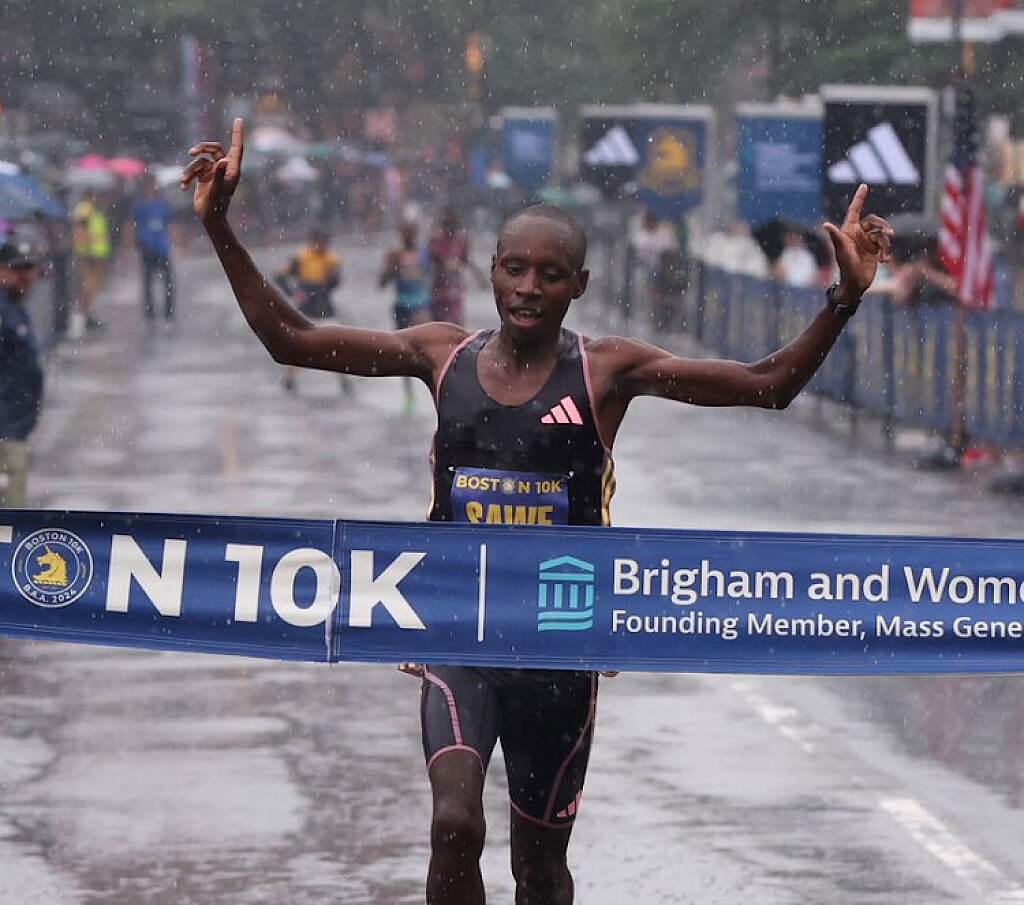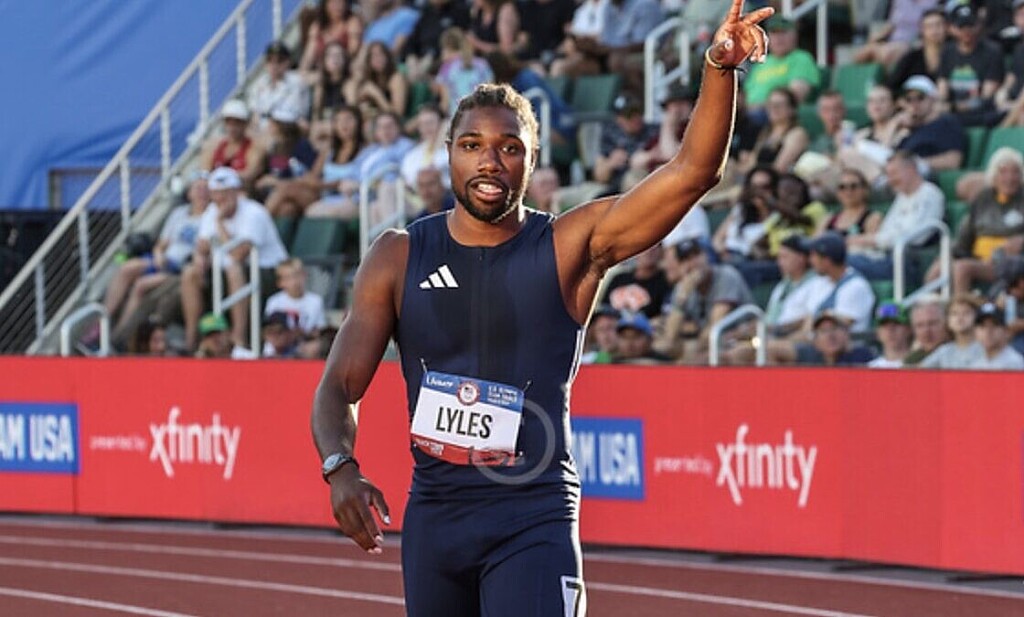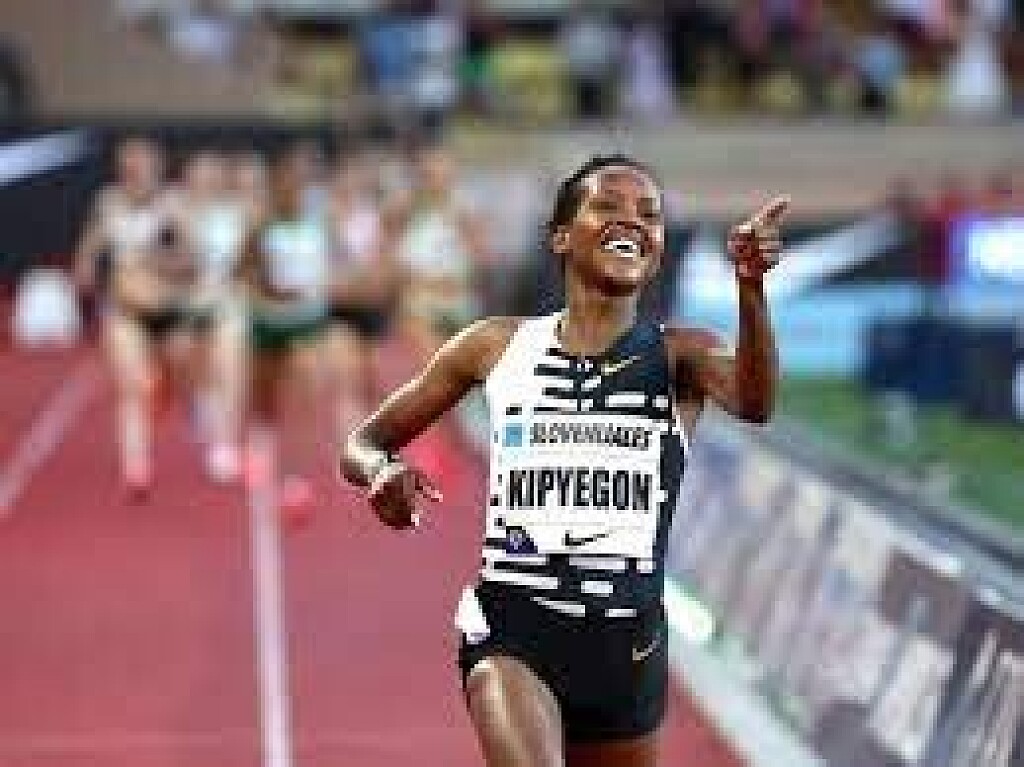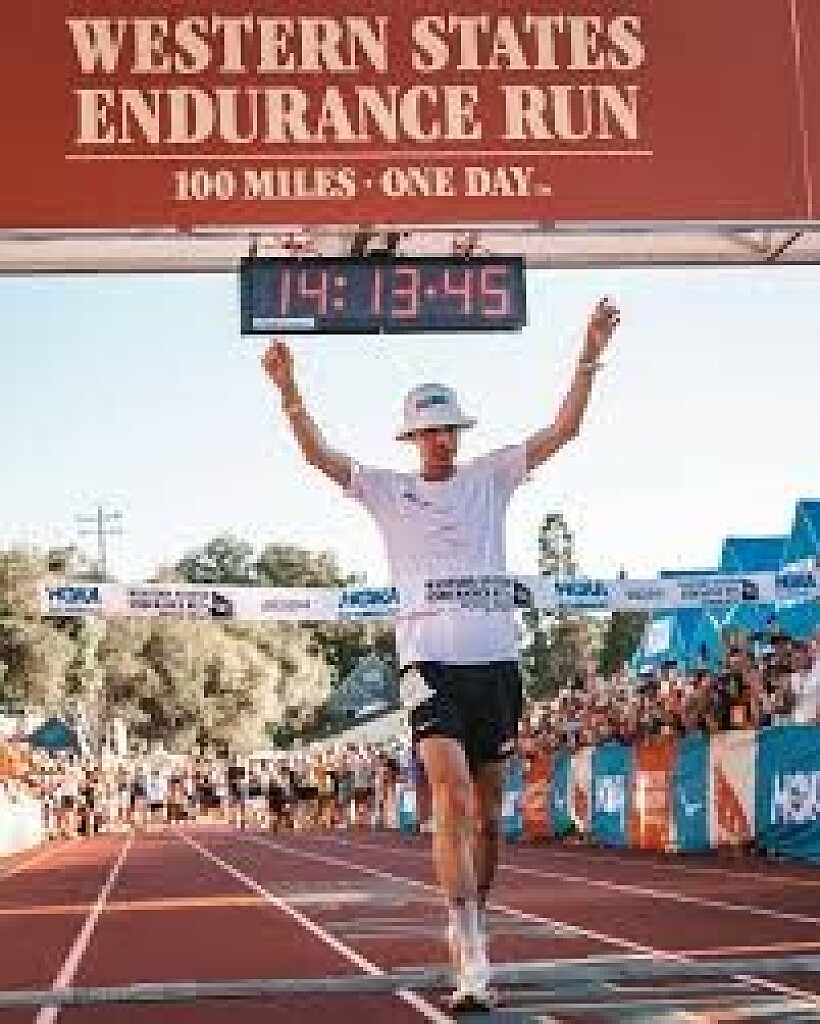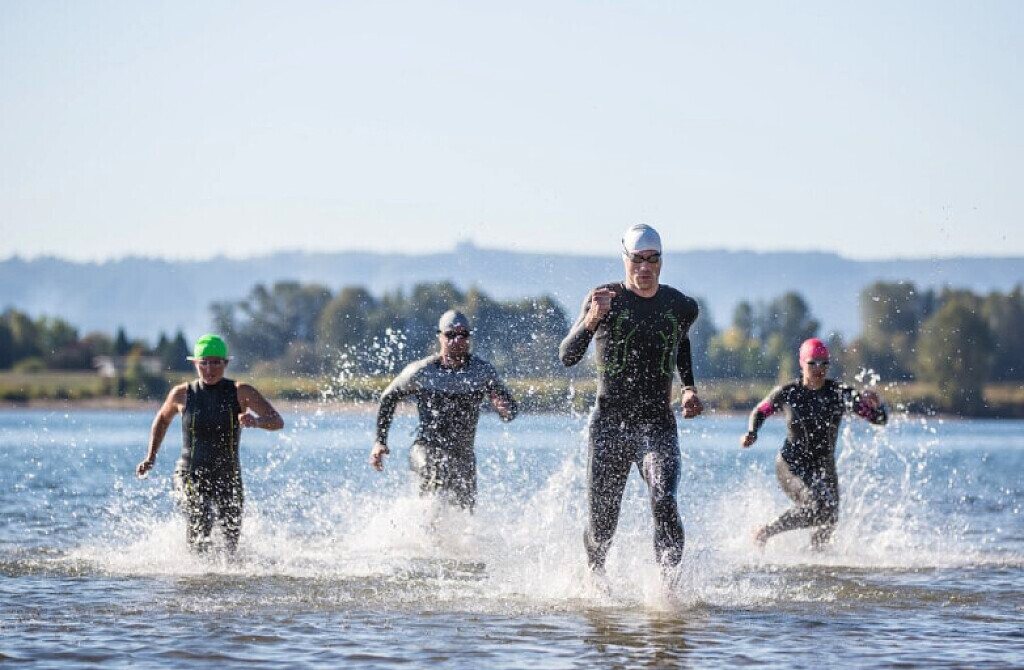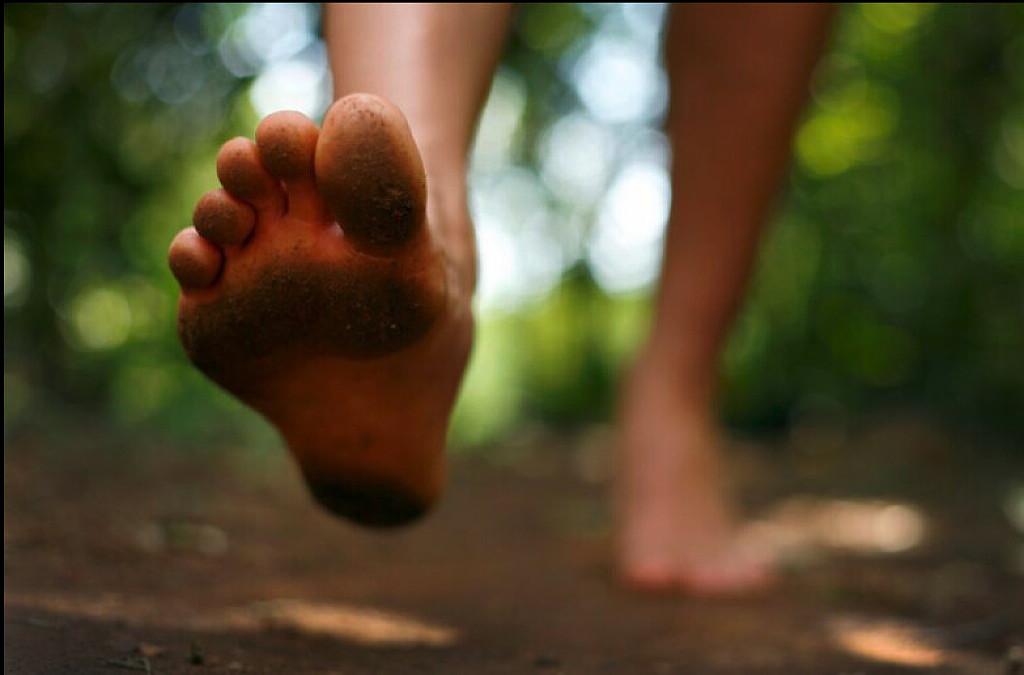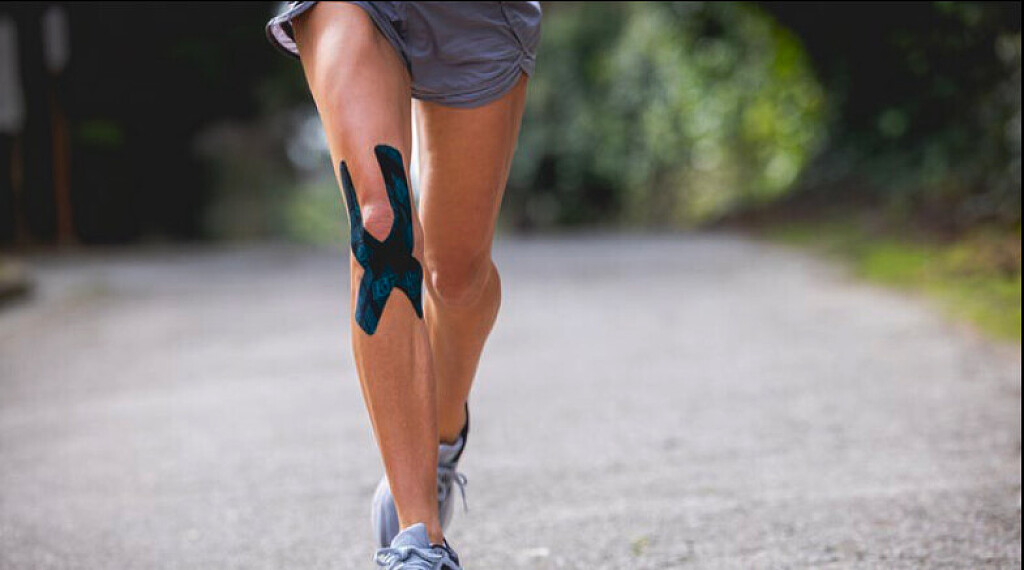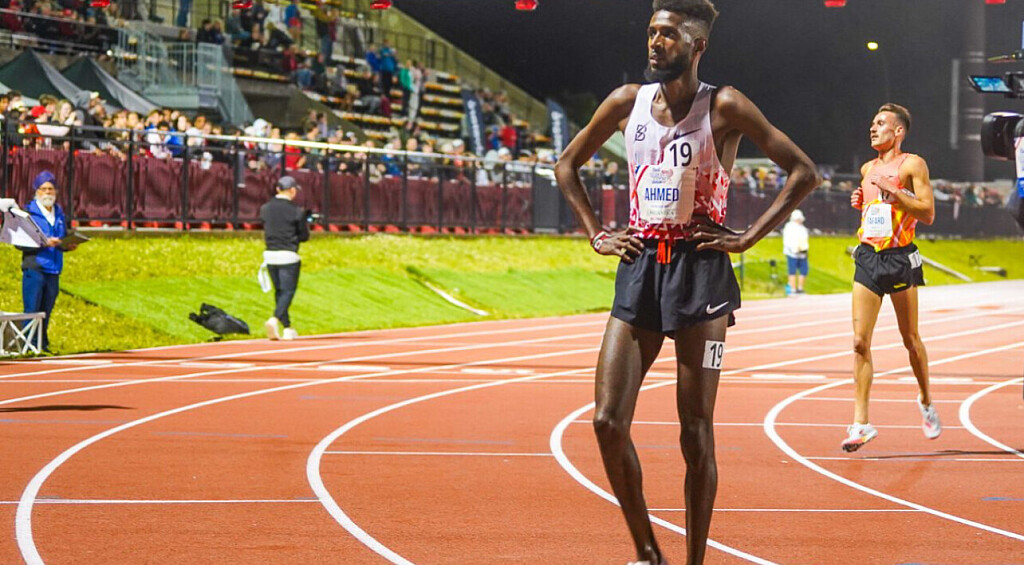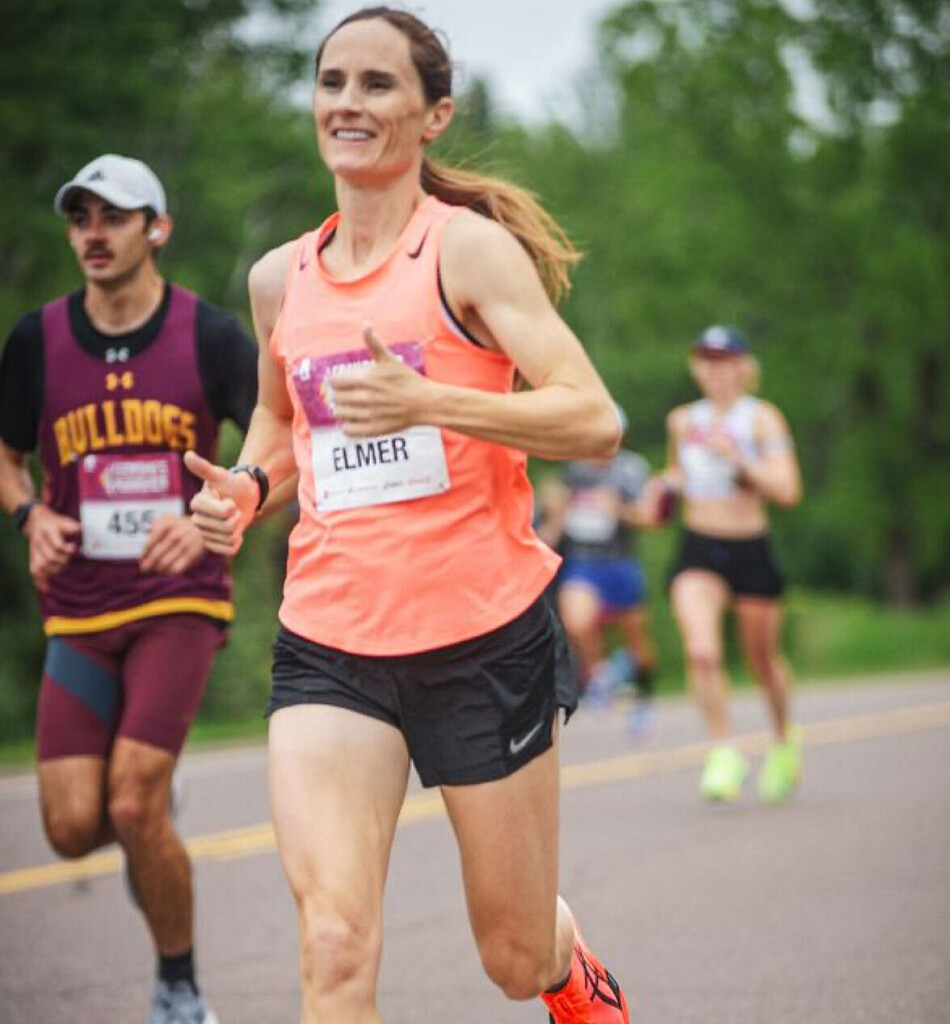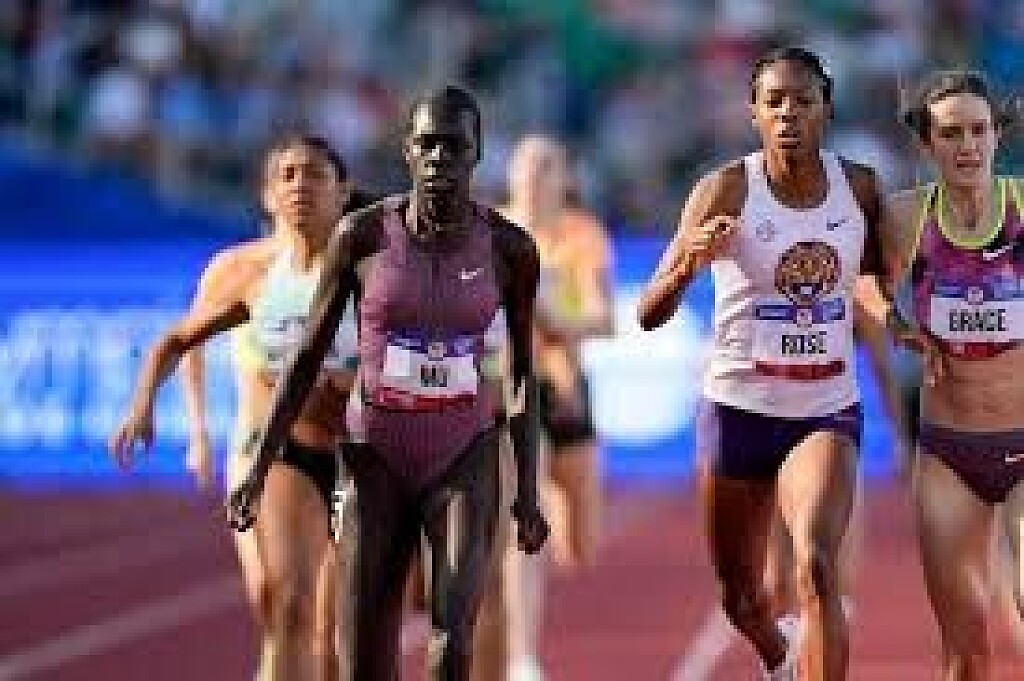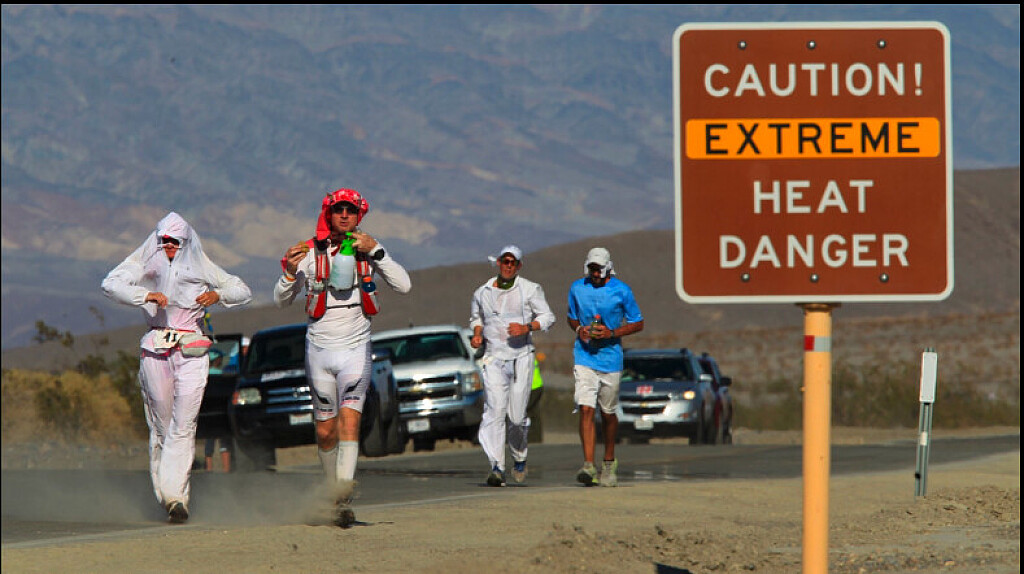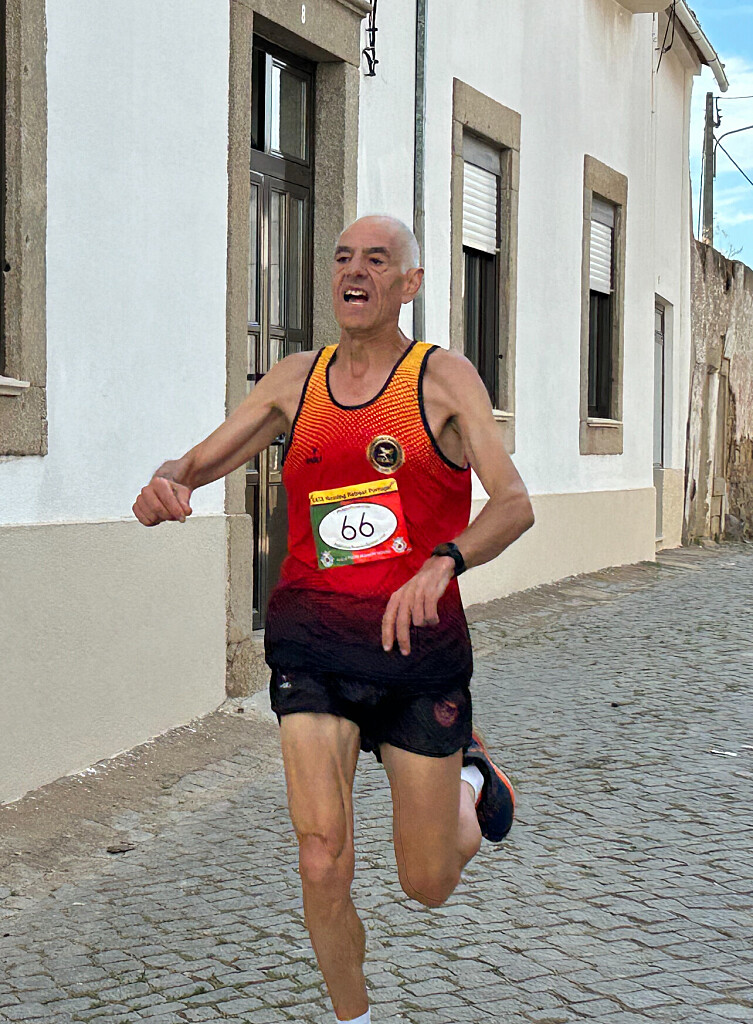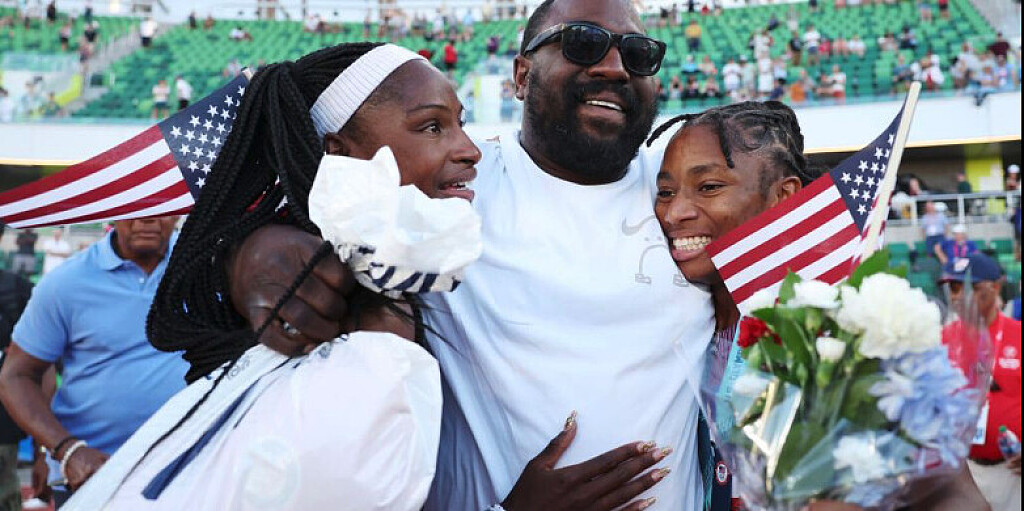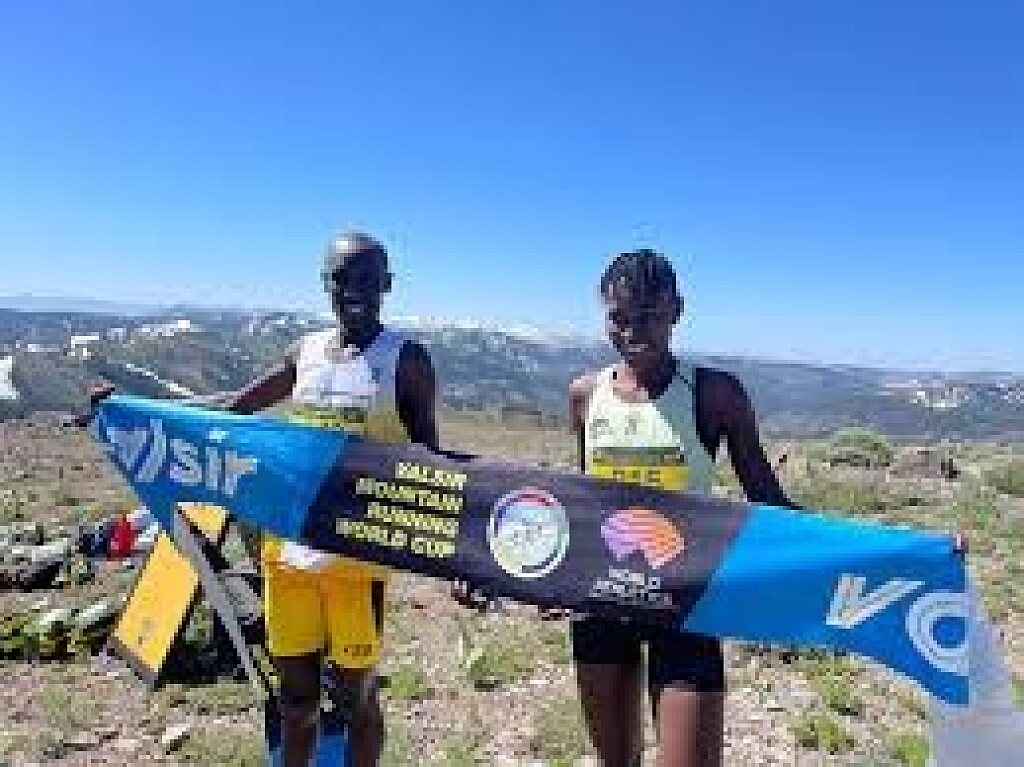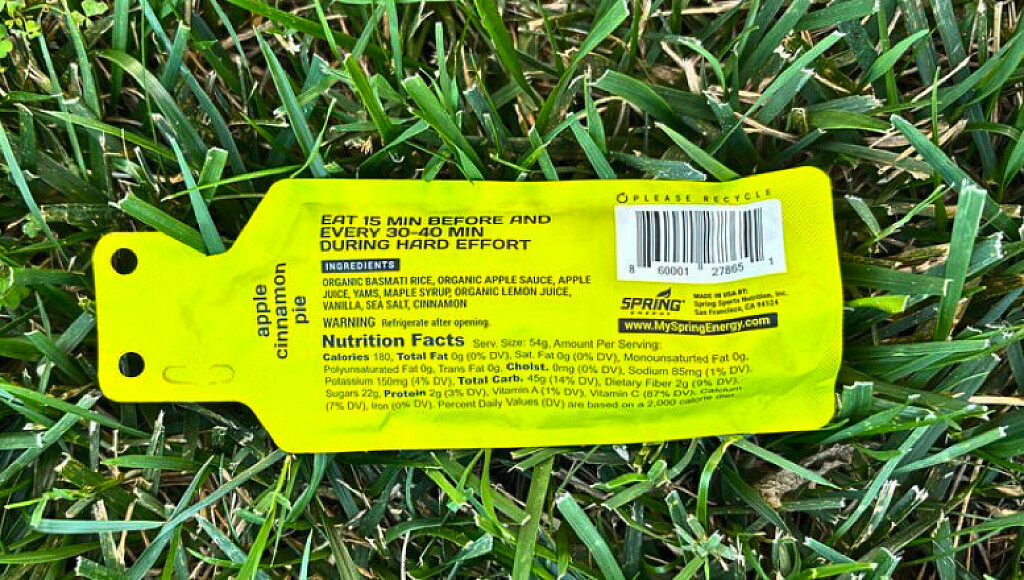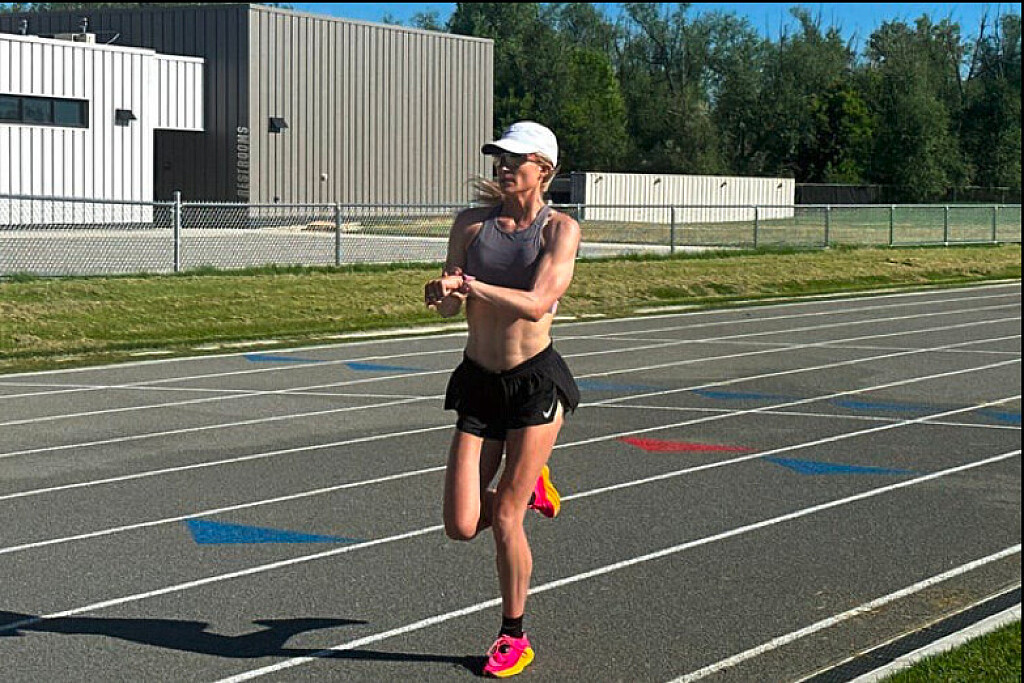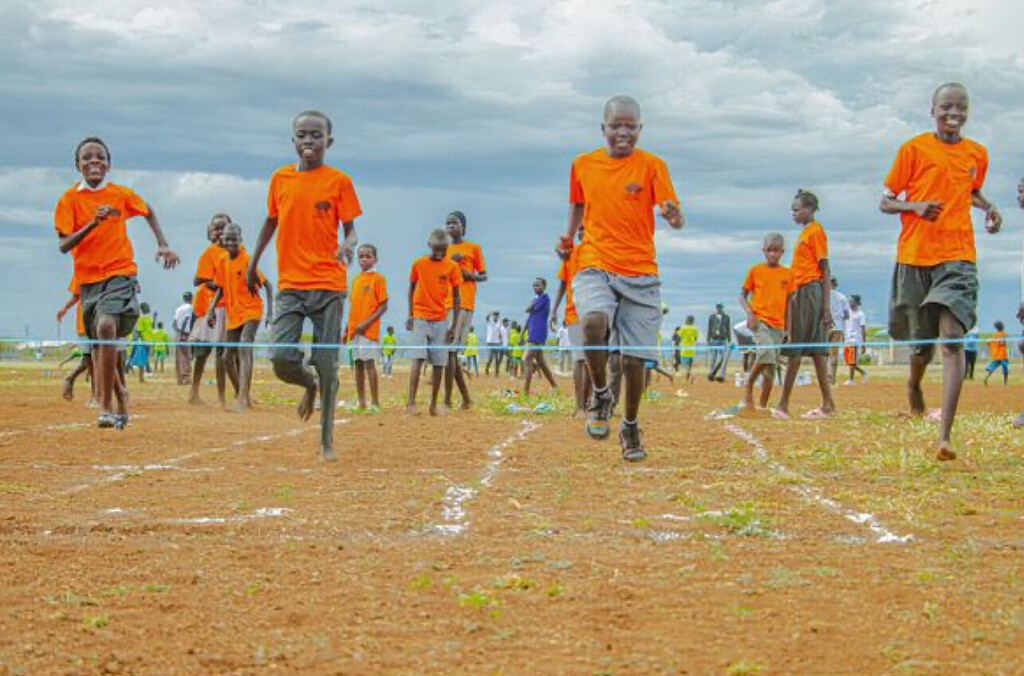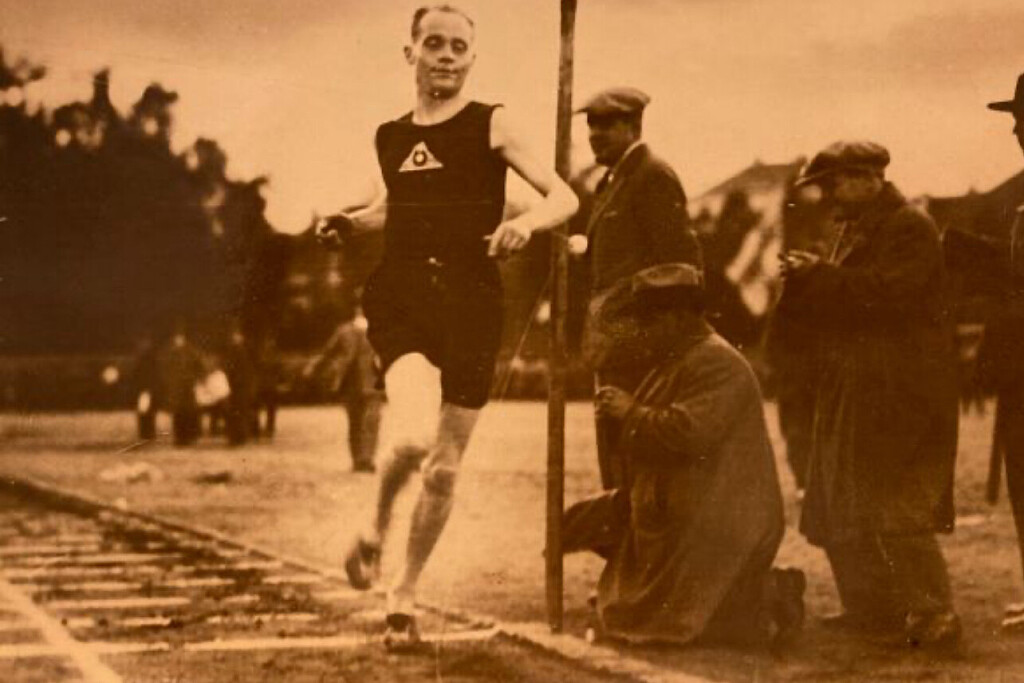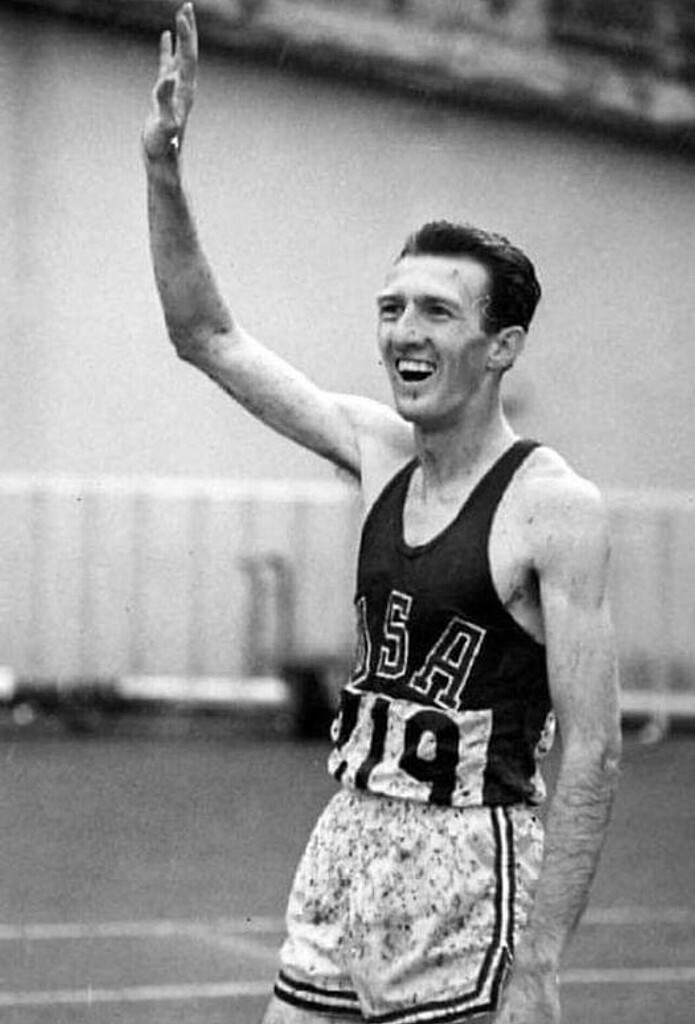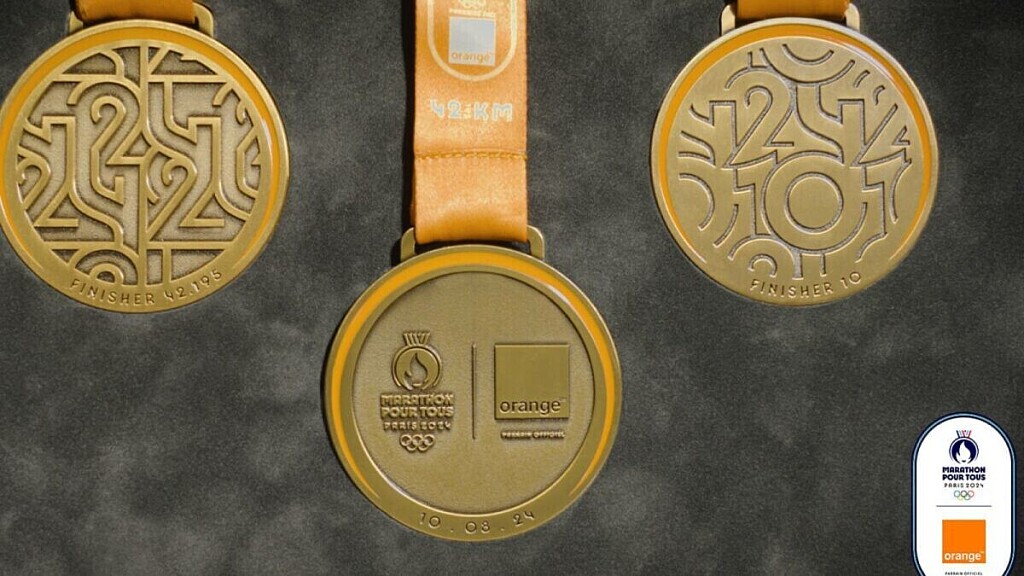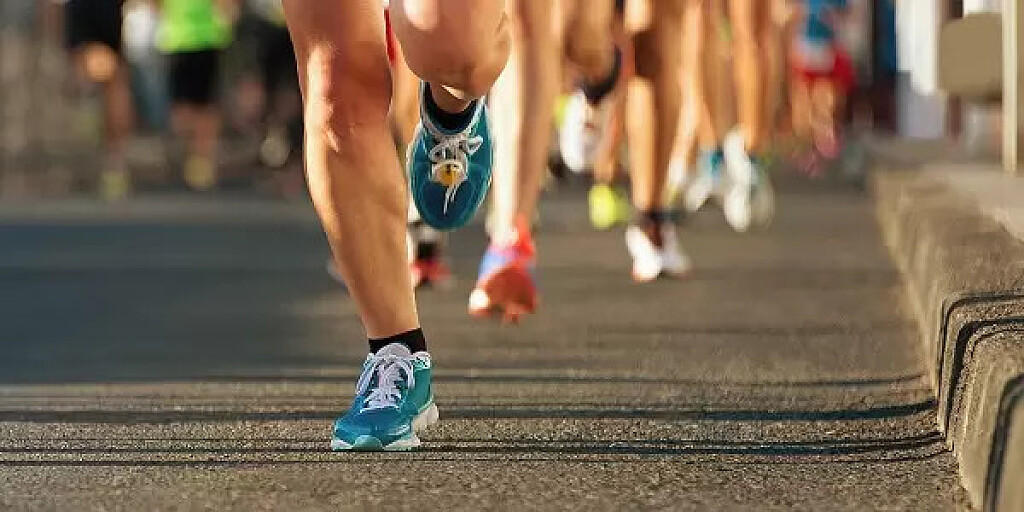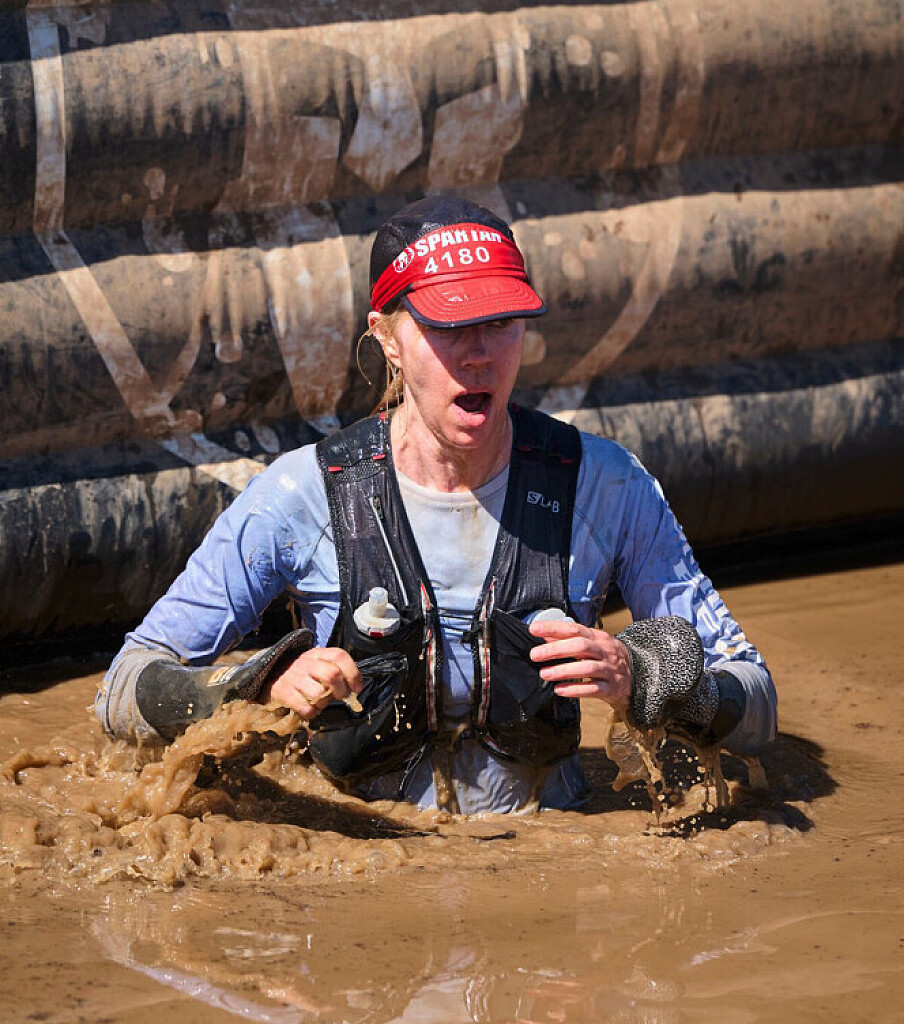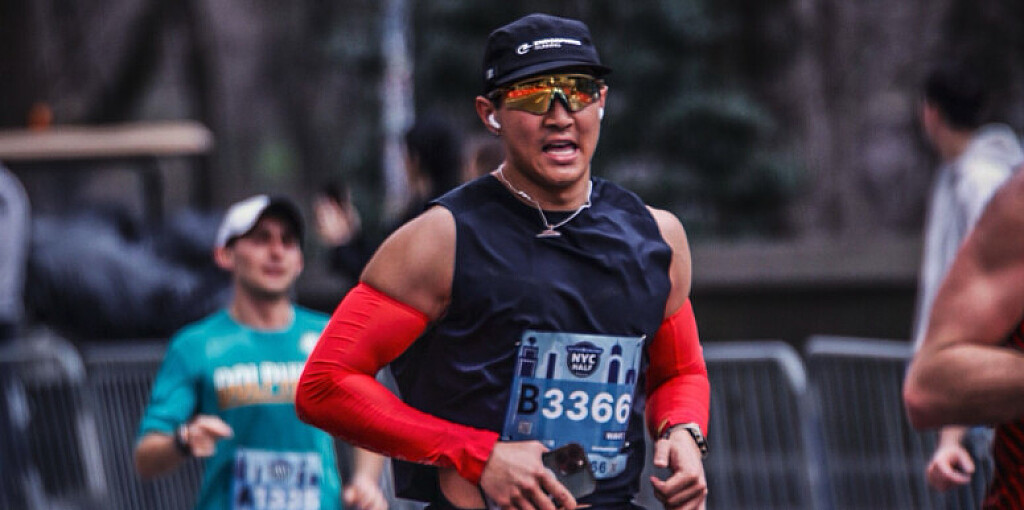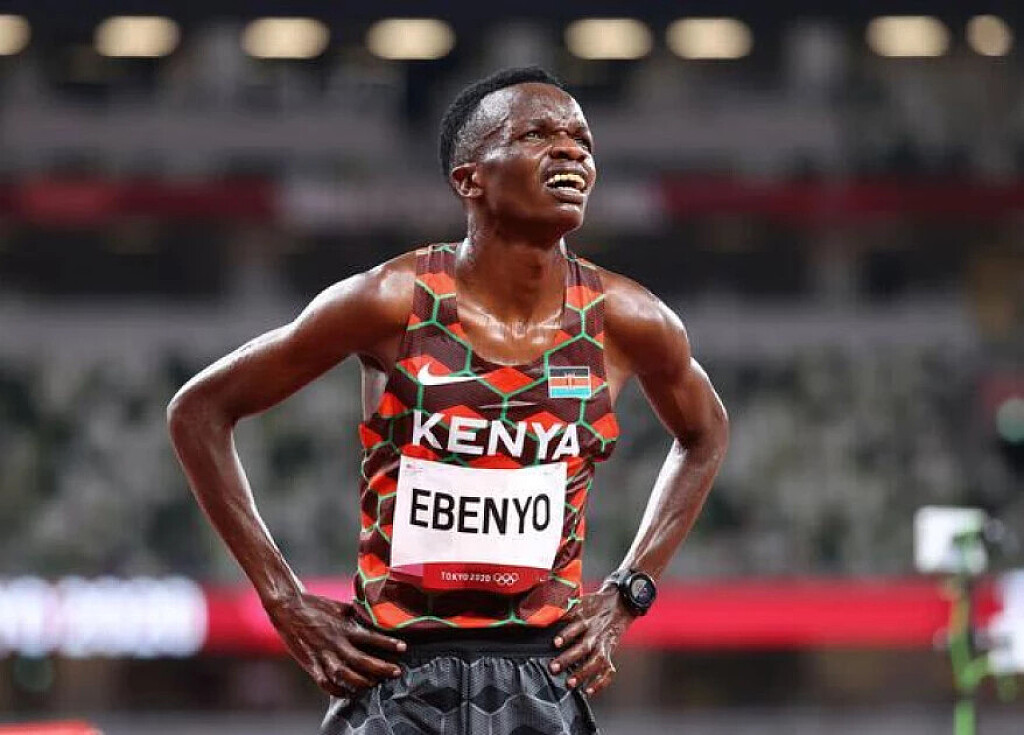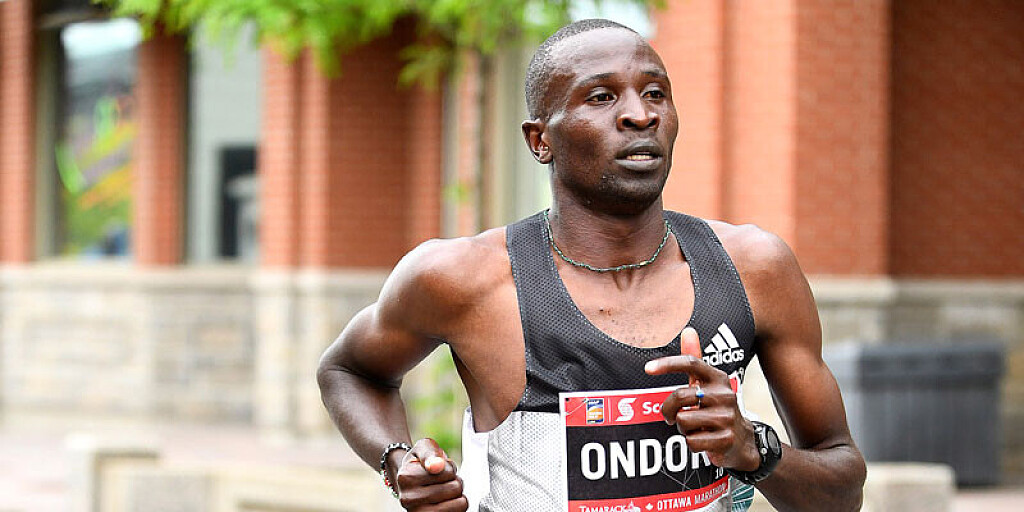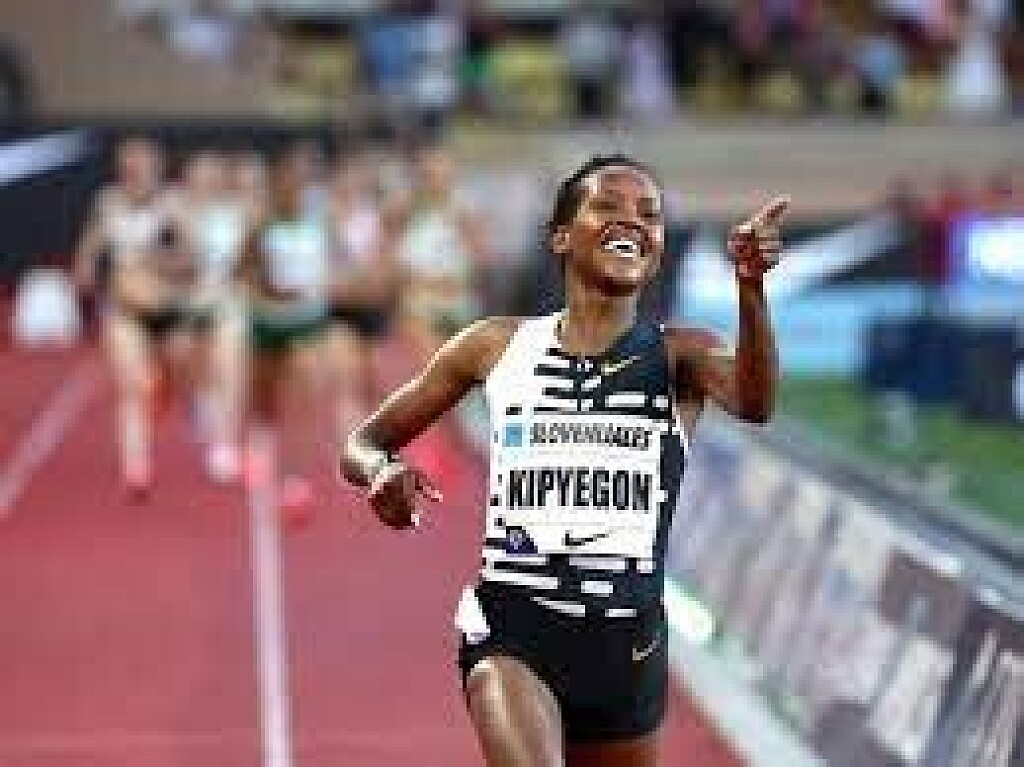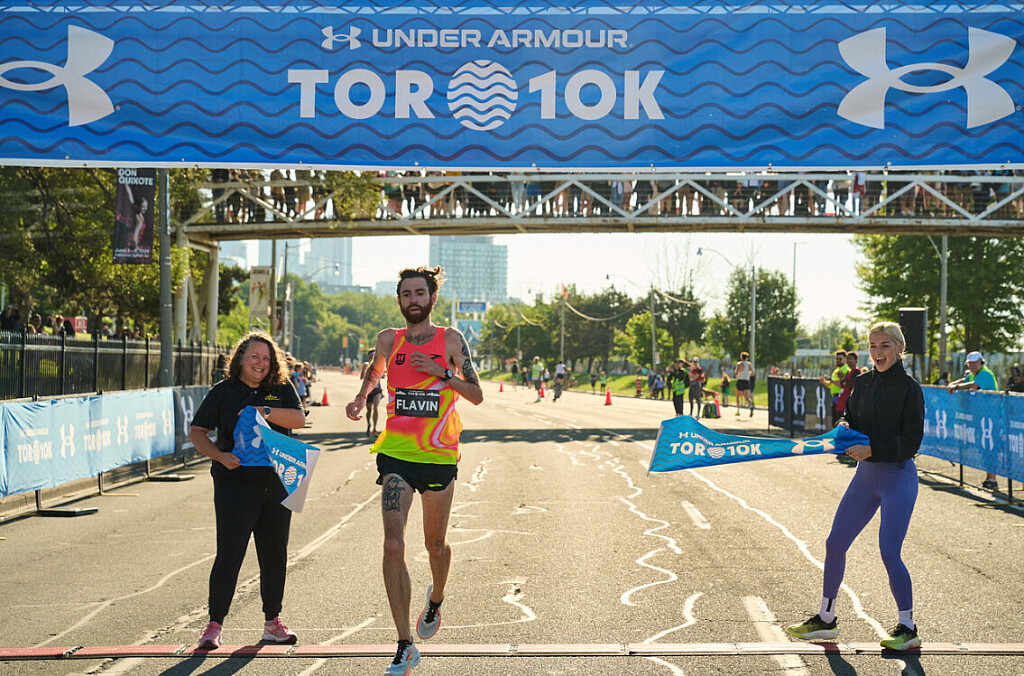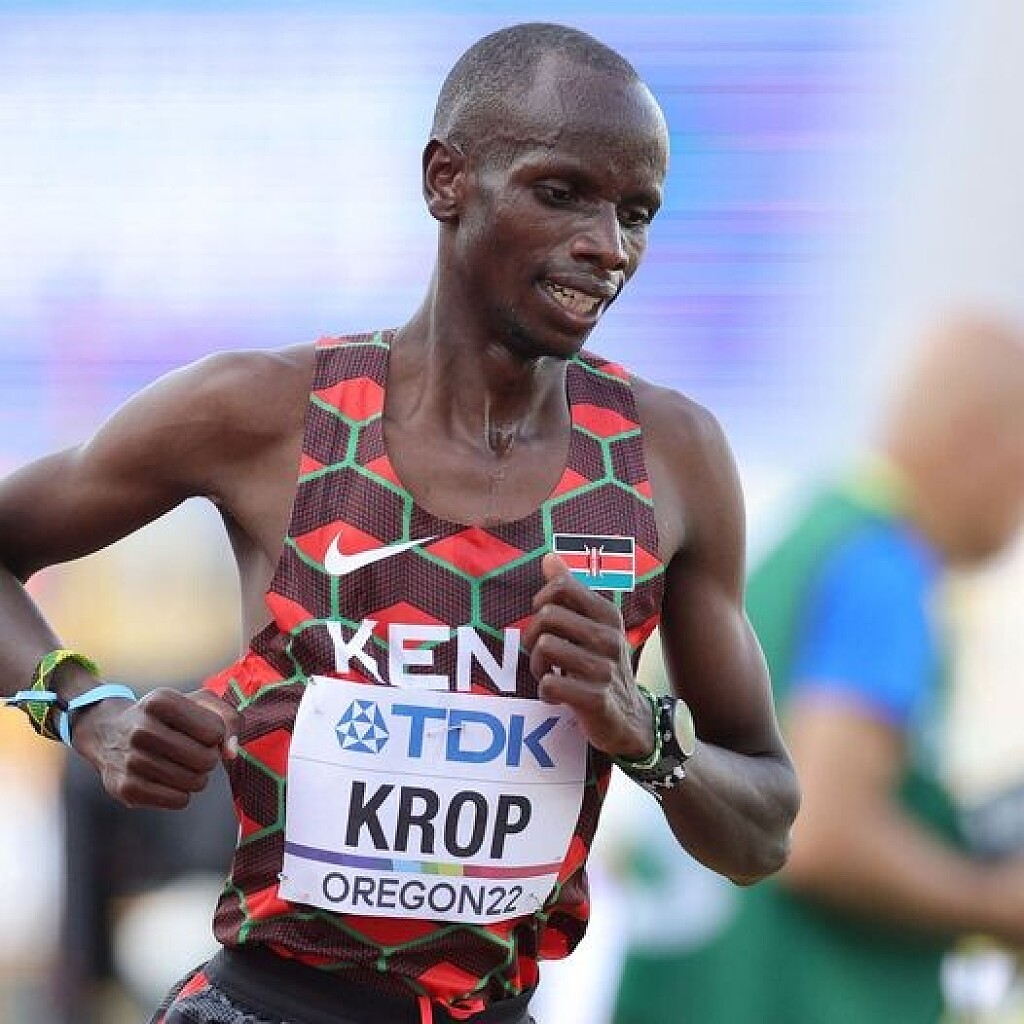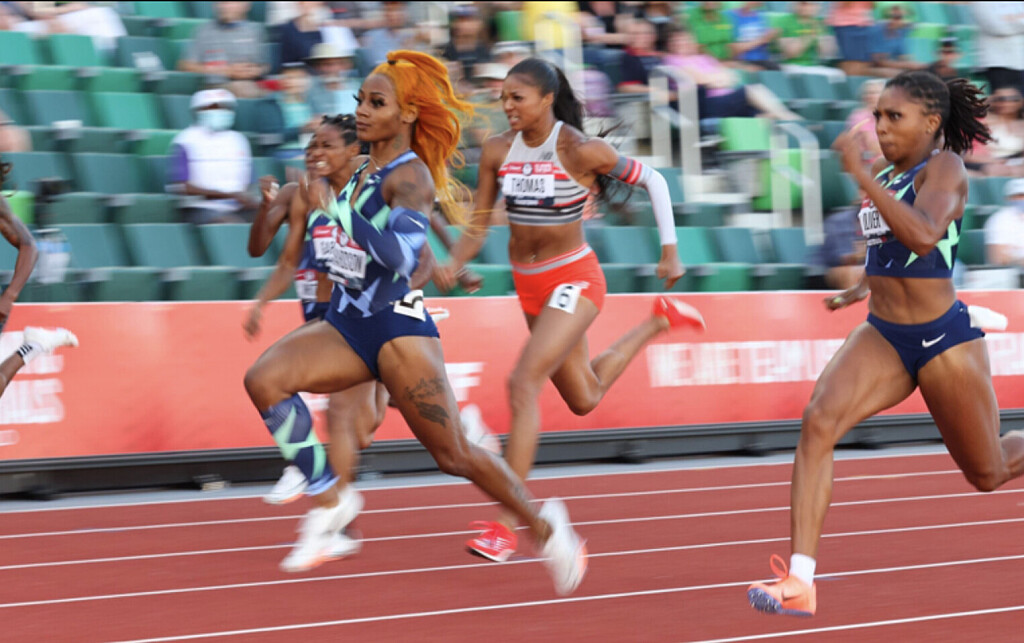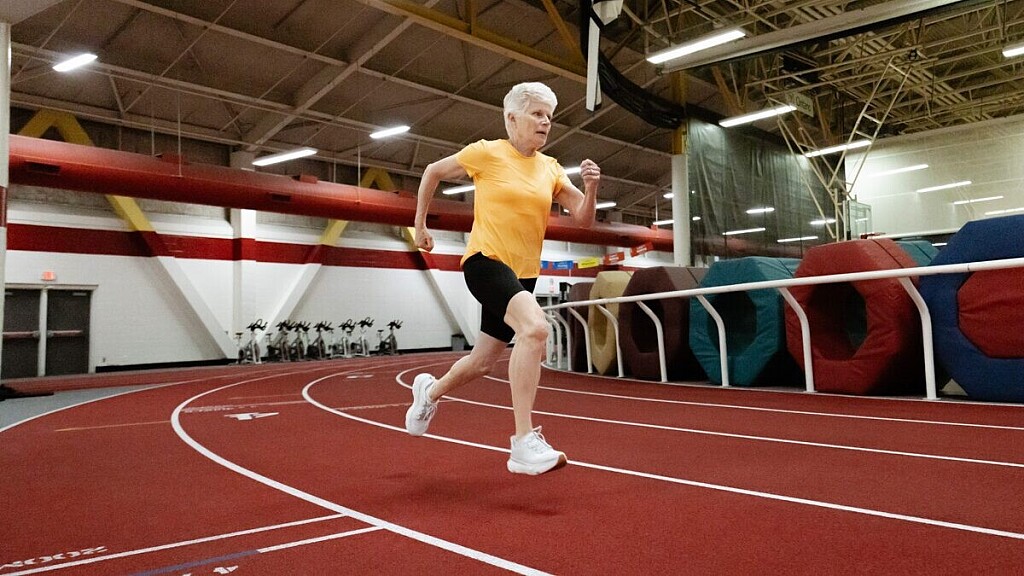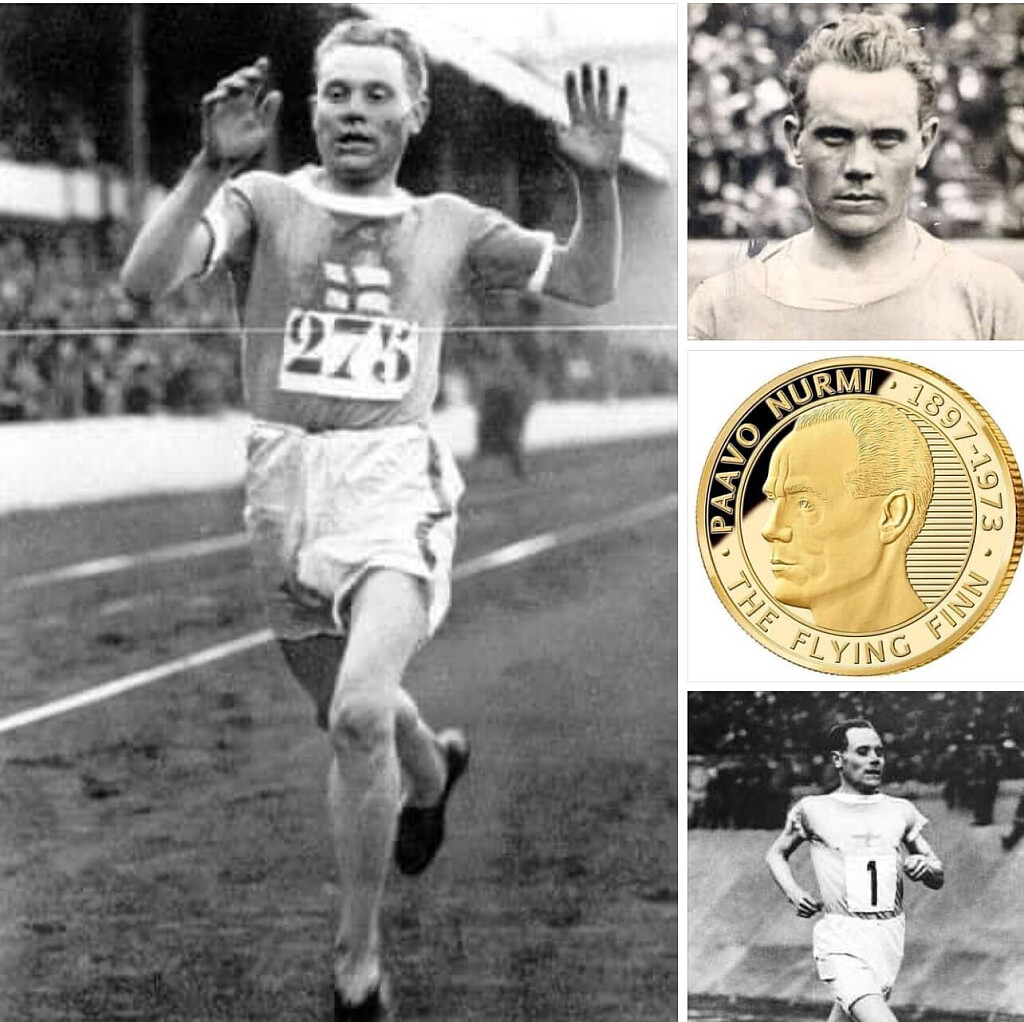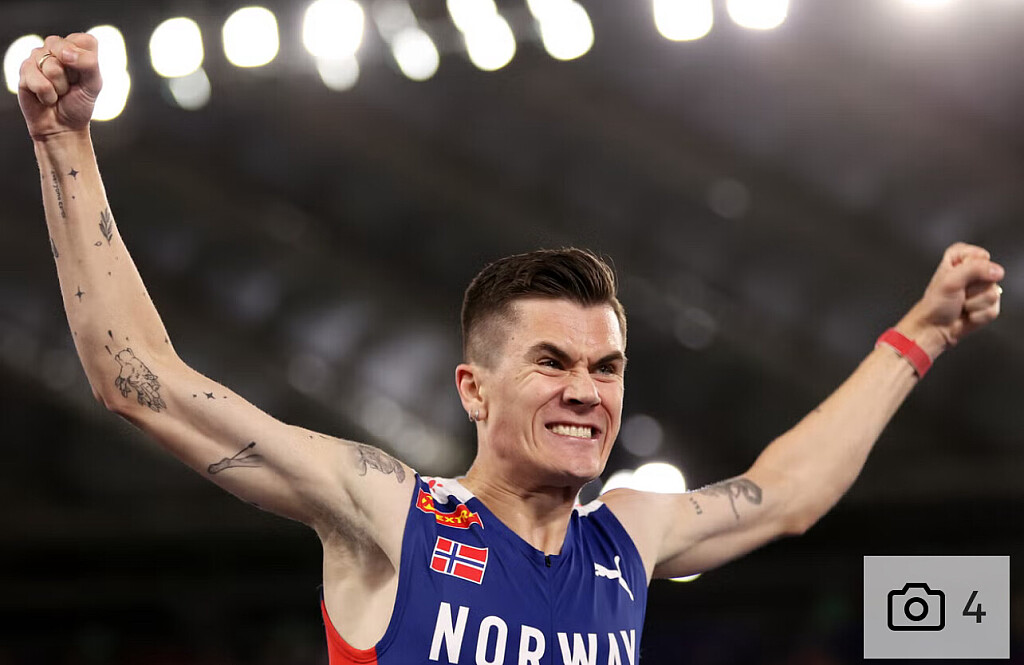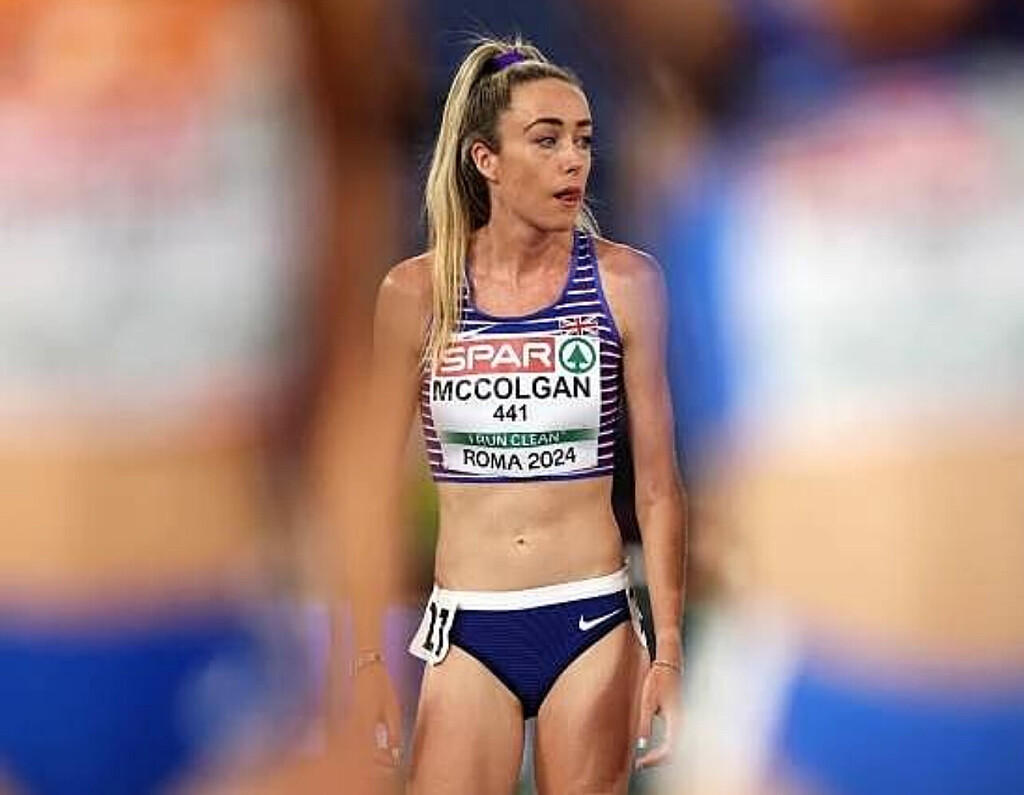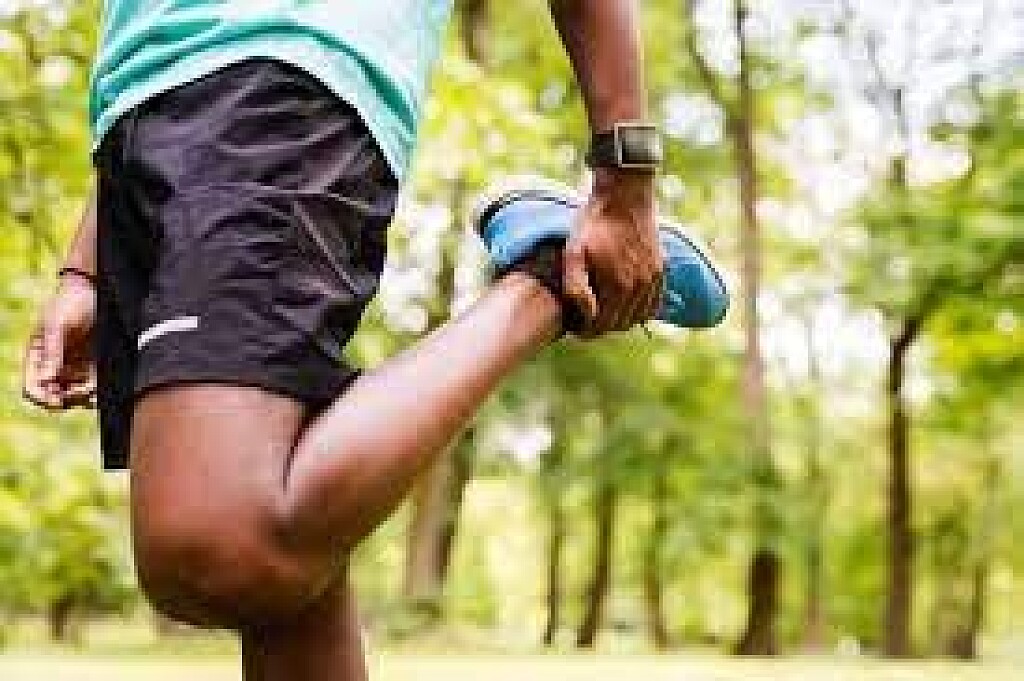Running News Daily
Running News Daily is edited by Bob Anderson. Send your news items to bob@mybestruns.com Advertising opportunities available. Train the Kenyan Way at KATA Kenya and Portugal owned and operated by Bob Anderson. Be sure to catch our movie A Long Run the movie KATA Running Camps and KATA Potato Farms - 31 now open in Kenya! https://kata.ke/
Index to Daily Posts · Sign Up For Updates · Run The World Feed
Sawe targets next year's Boston Marathon after ruling 10k
Prague Half Marathon champion Sabastian Sawe is setting his sights on the 42km race as he sets his target on next year's Boston Marathon on April 21.
This comes after the 29-year-old's impressive victory at the Boston 10K Road Race on Sunday, where he clocked 27:42.
Wesley Kiptoo (27:53) and World Half Marathon silver medallist Daniel Ebenyo (27:55) claimed second and third respectively.

In the women's elite race, Ethiopians swept the podium as Melknat Wudu (31:15), Bosena Mulatie (31:16) and Senayet Getachew (31:17) took the top three slots.
Kenya’s Irene Cheptai (31:19), Stacy Ndiwa (31:20), Sarah Chelagat (31:27), and Daisy Jepkemei (31:39) followed in that order.
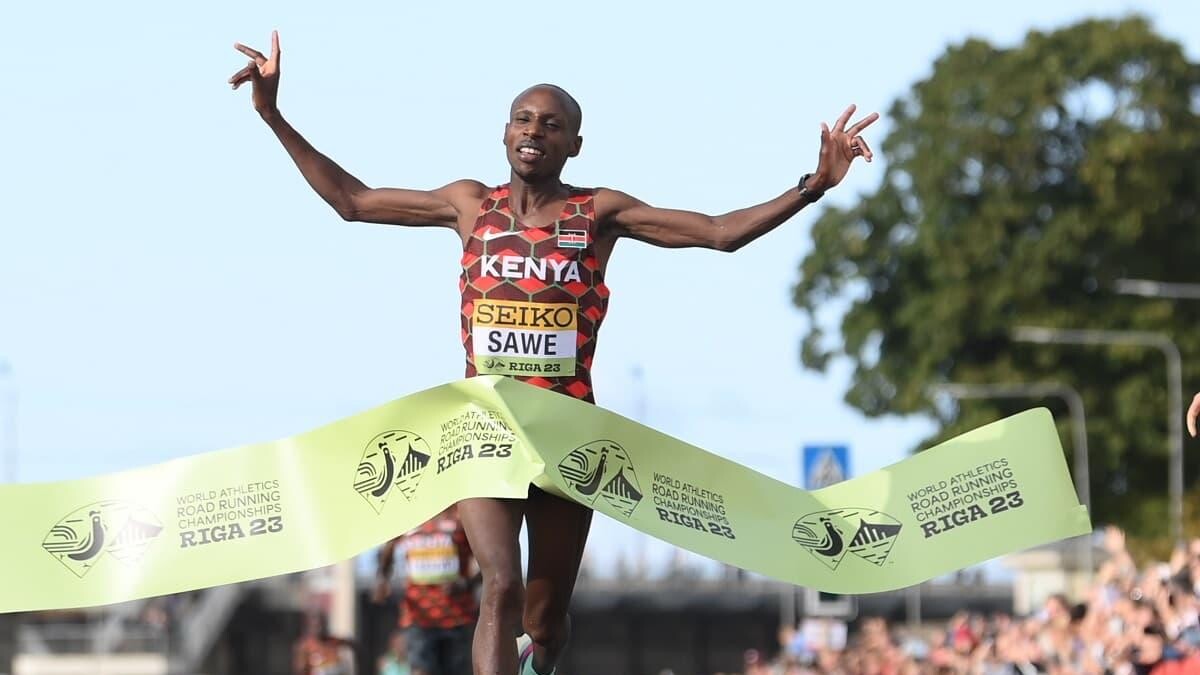
After stamping authority in his first race in the United States, Sawe stated he harbours ambitions of taking part in the Boston Marathon.
“My dream now is to take part in the Boston Marathon,” Sawe stated.
Sawe, primarily a half marathon and road race specialist, boasts an impressive resume including the Prague Half Marathon title which he won on April 6 in a time of 58:24.
He also holds a title from last year’s Berlin Half Marathon (59:00) as well as the 2022 Bahrain Half Marathon (58:58).
Sawe also won the World Road Running Championships half marathon title in Riga, Latvia, where he clocked 59:10. Ebenyo (59:14) and Samwel Nyamai (59:19) finished second and third.
He secured gold at the Adizero Road to Records 10K last April with a time of 26:49 and has a silver medal from the 2022 edition, clocking 27:06 behind Nicholas Kipkorir (27:05).
His other accolades include victories at the 2022 Roma (58:02) and Seville Half Marathons (59:02), and gold at the Gold Gala Fernanda in the 10,000m (27:09.46).
Reflecting on his Boston performance, Sawe said the course was fair despite too much rain.
“The course was not tough. The weather, however, made it difficult but I was able to do my best and come out with the victory,” he stated.
After hitting the halfway mark in 13:52, Sawe broke away from the leading pack of five which included Ebenyo, Kiptoo, Ethiopia’s Yemane Haileselassie and Abel Kipchumba.
“This was my first time running the Boston 10km Road race. The race was amazing and I had prepared adequately for it,” Sawe commented.
In addition to the winner’s trophy, Sawe also took home Sh1.3 million in cash prize money.
(07/01/2024) ⚡AMPby Teddy Mulei
Boston Marathon
Among the nation’s oldest athletic clubs, the B.A.A. was established in 1887, and, in 1896, more than half of the U.S. Olympic Team at the first modern games was composed of B.A.A. club members. The Olympic Games provided the inspiration for the first Boston Marathon, which culminated the B.A.A. Games on April 19, 1897. John J. McDermott emerged from a...
more...Noah Lyles breaks U.S. Olympic Trials 200m record
The second (and final) weekend of the 2024 U.S. Olympic Trials, held at Hayward Field in Oregon, continued to be electrifying, with heart-stopping finishes and records broken.
On Saturday night, six-time world champion Noah Lyles kept his Olympic sprint double dreams alive by blazing through the 200m in 19.53 seconds—the fastest time in the world this year, adding to his 100m win from last weekend. Lyles wasn’t the only runner in contention for first place, only overtaking Kenny Bednarek in the final meters to secure the win. Erriyon Knighton finished third to make his second Olympic team; he received a no-fault violation from USADA in early June, after testing positive for a metabolite of trenbolone during an out-of-competition drug test in March, allowing him to compete at the U.S. Olympic Trials this week.
Lyles’s performance broke Michael Johnson’s long-standing U.S. Olympic Trials record of 19.66, set in 1996. Lyles will be hoping for redemption in Paris after a third-place finish at the Tokyo Olympics in 2021, his only loss in the 200m at a major meet. “You claim you’re gonna go out there and win four medals, so the goal had to be win the 100m and 200m,” Lyles told media post-race.“Job is accomplished. I’m right where I need to be.

Kelati conquers the 10,000m
Weini Kelati secured her spot for the Paris Olympics by winning the women’s 10,000m in a thrilling, extremely close race on Saturday. Kelati, who was born in Eritrea but defected to the U.S. a decade ago to pursue a running career, showcased her strength and determination in a tight race that saw multiple lead changes in the final laps.
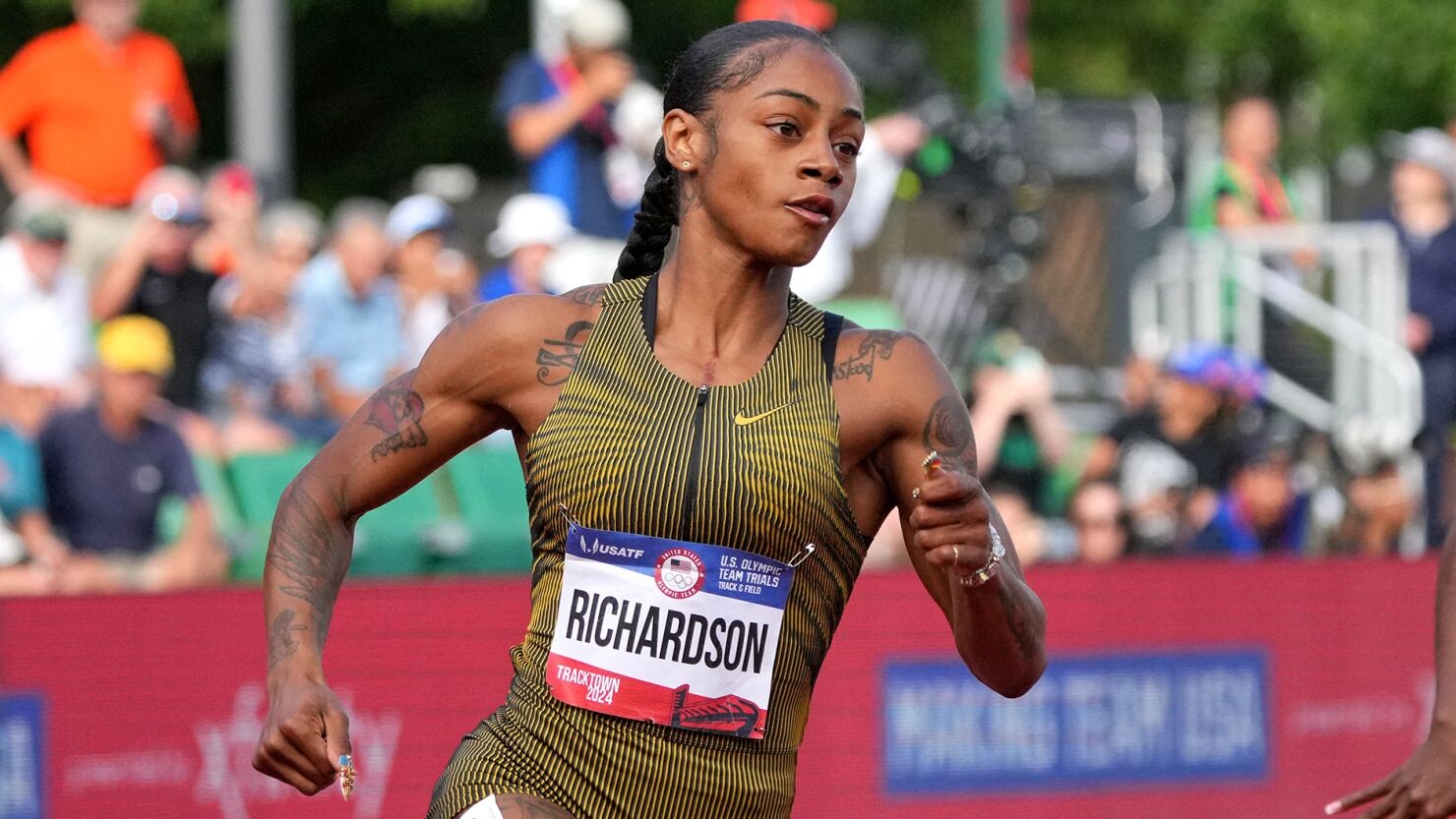
Kelati crossed the finish line first in 31:41.07, narrowly beating Parker Valby and Karissa Schweizer, who finished in 31:41.553 and 31:41.557 respectively. While Kelati has already run the Olympic standard of 31:40:00 and has clinched her place on the team, Valby and Schweizer will have to hope their performances were enough to get them to the Olympics through World Athletics rankings, a decision that won’t be finalized until June 7th.
Richardson doesn’t make the 200m cut
Sha’Carri Richardson’s bid for a sprint double in Paris ended with a fourth-place finish in the women’s 200m. Despite a strong start, Richardson was unable to maintain her speed in the final stretch, finishing behind Gabby Thomas, Brittany Brown and McKenzie Long.
Thomas, a bronze medalist in Tokyo and silver medalist at last year’s world championships in Budapest, crossed the line in 21.81 seconds. Richardson, secured her place in the 100m for the Olympics last weekend, when she won the women’s final in a new world-leading time of 10.71 seconds. In 2021, Richardson also won the 100m at the U.S. Olympic Trials, but tested positive for marijuana shortly after and was not allowed to compete; she’ll now make her much anticipated Olympic debut exclusively in the 100m, where she remains a favorite for gold.
(07/01/2024) ⚡AMPby Keeley Milne
U.S. Olympic Team Trials Track And Field
Eugene, Oregon has been awarded the 2024 U.S. Olympic Team Trials - Track & Field, USA Track & Field and the U.S. Olympic & Paralympic Committee announced today. From June 21 to 30, Hayward Field at the University of Oregon will be home to one of the biggest track and field competitions in the country, as the U.S. Olympic Team...
more...Meet USA men's athletics team for Paris 2024 Olympic Games
Discover Team USA's men's track and field roster for Paris 2024, featuring stars like Noah Lyles and Rai Benjamin aiming for gold.
The Olympics are once again upon us, and Team USA is ready to make a mark at the Paris 2024 Olympic Games.
With a mix of returning medalists and fresh faces, the American men's track and field roster boasts exceptional talent across a variety of events.
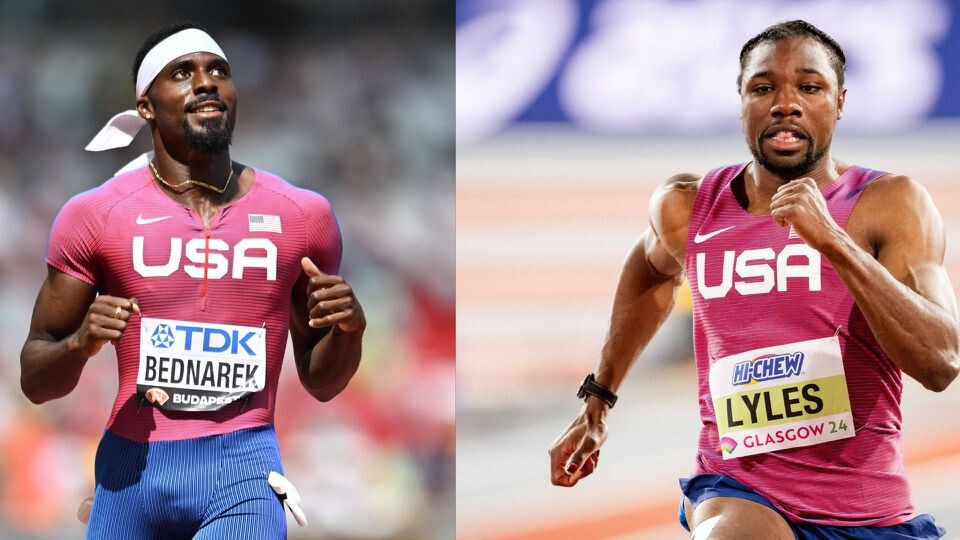
Pulse Sports looks at the athletes representing the United States in each event, highlighting their recent triumphs and expectations for the upcoming games.
100m
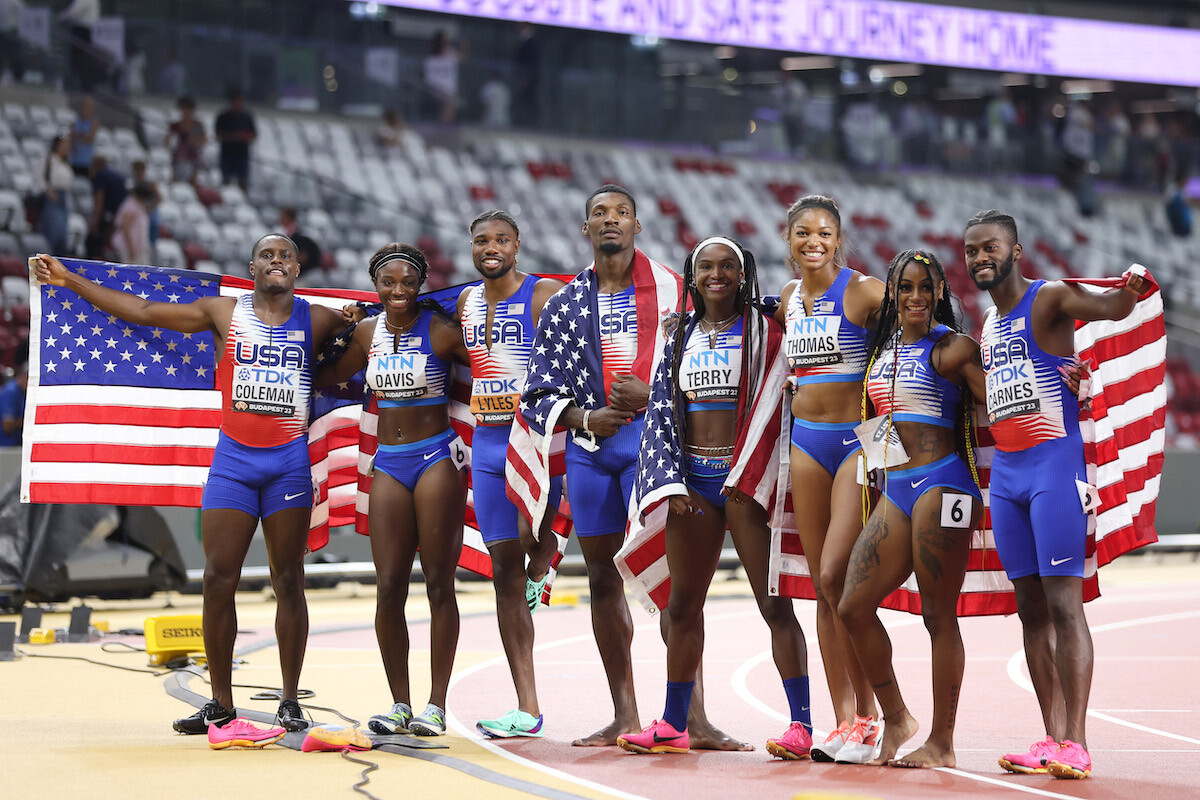
The face of USA track and field Noah Lyles confirmed his top-tier status with a scorching 9.83 seconds in the men’s 100-meter final at the trials.
Alongside him, Kenny Bednarek and Fred Kerley, who previously clinched a silver medal in Tokyo, are all set to bring their explosive speed to the Paris tracks.
This trio’s combination of experience and raw power forms a formidable front for the U.S. in one of the Olympics' most iconic events.
110m hurdles
A familiar name in the hurdles Grant Holloway is eyeing gold after a near miss in Tokyo, where he took home silver.
At the trials, he showcased his readiness by clocking in at 12.86 seconds, a time that would have won him gold in the previous Olympics.
Joining him are Freddie Crittenden and Daniel Roberts, the former making his Olympic debut, and the latter bringing experience from Tokyo, setting up a strong team for this high-stakes event.
200m
Noah Lyles demonstrated his versatility and sheer pace by also clinching the 200-meter at the trials with an impressive 19.53 seconds, narrowly edging out Kenny Bednarek.
With Erriyon Knighton rounding out the team, this event is likely to be a highlight for the U.S., with all three runners previously finishing in the top four at Tokyo 2021 behind Canada’s Andre De Grasse.
400m
Michael Norman returns with hopes of improving on his fifth-place finish in Tokyo.
He is joined by Quincy Hall, whose commanding win at the trials with a time of 44.17 seconds positions him as a strong medal contender.
Chris Bailey rounds out the team bringing fresh energy to the mix.
400m hurdles
Rai Benjamin, who captured silver in Tokyo, solidified his Paris bid with an impressive sub-47-second finish at the trials.
CJ Allen and Trevor Bassitt, both first-time Olympians, will join Benjamin as they aim to convert his previous silver into gold.
800m
Bryce Hoppel returns to the Olympics with an improved trial time that bested his Tokyo performance.
Hobbs Kessler, having already qualified for the 1500m, adds the 800m to his Paris challenges, showcasing his endurance and tactical racing prowess.
Brandon Miller completes the team, ready to make his Olympic debut.
1500m
Cole Hocker, Yared Nuguse, and Hobbs Kessler make up the U.S. team for the 1500-meter race.
All three athletes met the Olympic standard at the trials, demonstrating their readiness and resilience.
This event will test their strategic racing abilities and endurance on the Olympic stage.
5000m
Grant Fisher and Abdihamid Nur are set to represent the U.S. in this challenging race.
Fisher, doubling down after his 10,000m trial win, and Nur, making his Olympic debut, will need to bring their best to contend with the global competition.
10,000m
Grant Fisher leads the U.S. team again in the 10,000m, followed closely by Woody Kincaid and newcomer Nico Young.
This trio having demonstrated strong performances at the trials are prepared to face the long-distance challenge in Paris.
Decathlon
Heath Baldwin, Zach Ziemek, and Harrison Williams represent the U.S. in the decathlon an exhaustive series of ten track and field events that tests versatility and stamina.
Baldwin led the trials, while Ziemek brings experience from his sixth-place finish in Tokyo.
Discus
Andrew Evans and Joseph Brown look to improve the U.S.'s standings in the discus throw, both having shown strong potential at the trials with throws exceeding 65 meters. They aim to transform their trial success into Olympic medals.
Hammer
Daniel Haugh and Rudy Winkler, returning Olympians, have shown significant improvements since Tokyo.
Haugh, in particular, won the hammer throw final at the trials, indicating that he is a strong contender for a medal in Paris.
High Jump
Shelby McEwen and JuVaughn Harrison are set to return to the Olympics, aiming to surpass their previous performances.
Harrison, who finished seventh in Tokyo, looks to leverage his experience for a better outcome in Paris.
Javelin
Curtis Thompson leads the team in the javelin throw, hoping to build on his past Olympic experience.
He is joined potentially by Capers Williamson and Donavon Banks whose participation will depend on the final world rankings.
Marathon
Leonard Korir, Conner Mantz, and Clayton Young have secured their places on the marathon team, each bringing unique strengths and strategies to one of the Olympics' most grueling challenges.
Pole Vault
Chris Nilsen and Sam Kendricks, with past Olympic experiences of highs and lows, aim to dominate the pole vault.
Jacob Wooten joins them, making his first appearance on the Olympic stage.
Shot Put
Ryan Crouser, Joe Kovacs, and Payton Otterdahl, all exceeding the 22-meter mark at the trials, form a powerful shot put trio.
Their aim is clear: to return with gold and silver medals.
3000m Steeplechase
Kenneth Rooks and Matthew Wilkinson will tackle the steeplechase, a race combining speed, stamina, and technique.
Both first-timers at the Olympics, they aim to make a significant impact in Paris.
Triple Jump
Donald Scott returns to the triple jump, along with newcomer Salif Mane, who impressed with a 17.52-meter jump at the trials.
Their sights are set on improving their standings and aiming for the podium in Paris.
(07/01/2024) ⚡AMPby Festus Chuma
Paris 2024 Olympic Games
For this historic event, the City of Light is thinking big! Visitors will be able to watch events at top sporting venues in Paris and the Paris region, as well as at emblematic monuments in the capital visited by several millions of tourists each year. The promise of exceptional moments to experience in an exceptional setting! A great way to...
more...Faith Kipyegon offers success tip to upcoming athletes
Faith Kipyegon has revealed the challenges of being a track athlete and how she manages to keep the focus ahead of the Olympic Games.
Double world record holder Faith Kipyegon has opened up on the struggles of running and disclosed how she manages to keep going through the tough times.
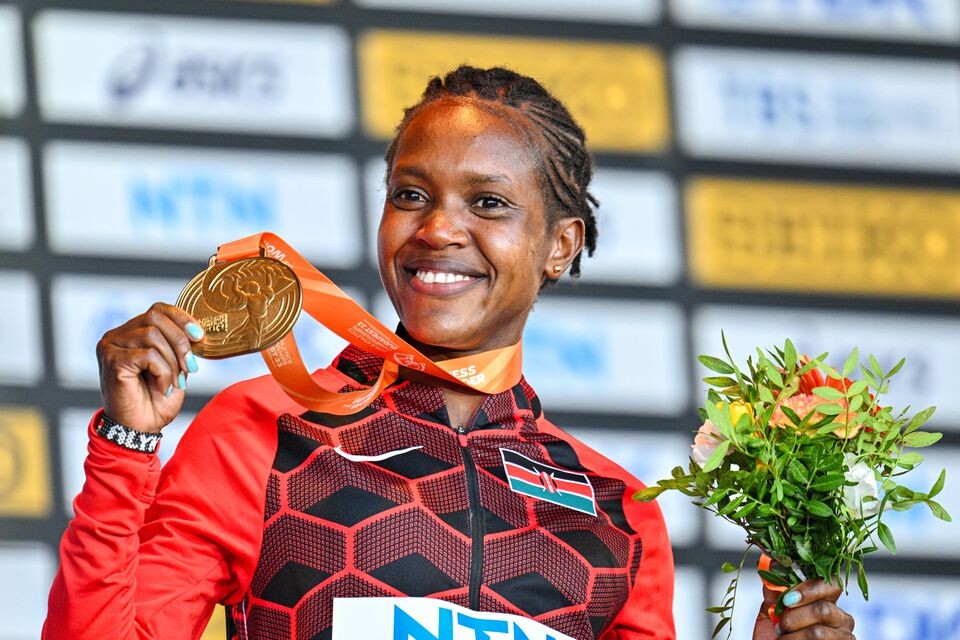
The three-time world 1500m champion explained that it’s not a smooth sailing and just like any other athlete, she faces hurdles in her pursuit for success but she does not allow challenges to pull her back.
She added that her main goal is to work hard and put in the effort as she looks to achieve the goals she has set. She is a testimony that nothing comes easy and from time to time, Kipyegon has also insisted on athletes working hard.
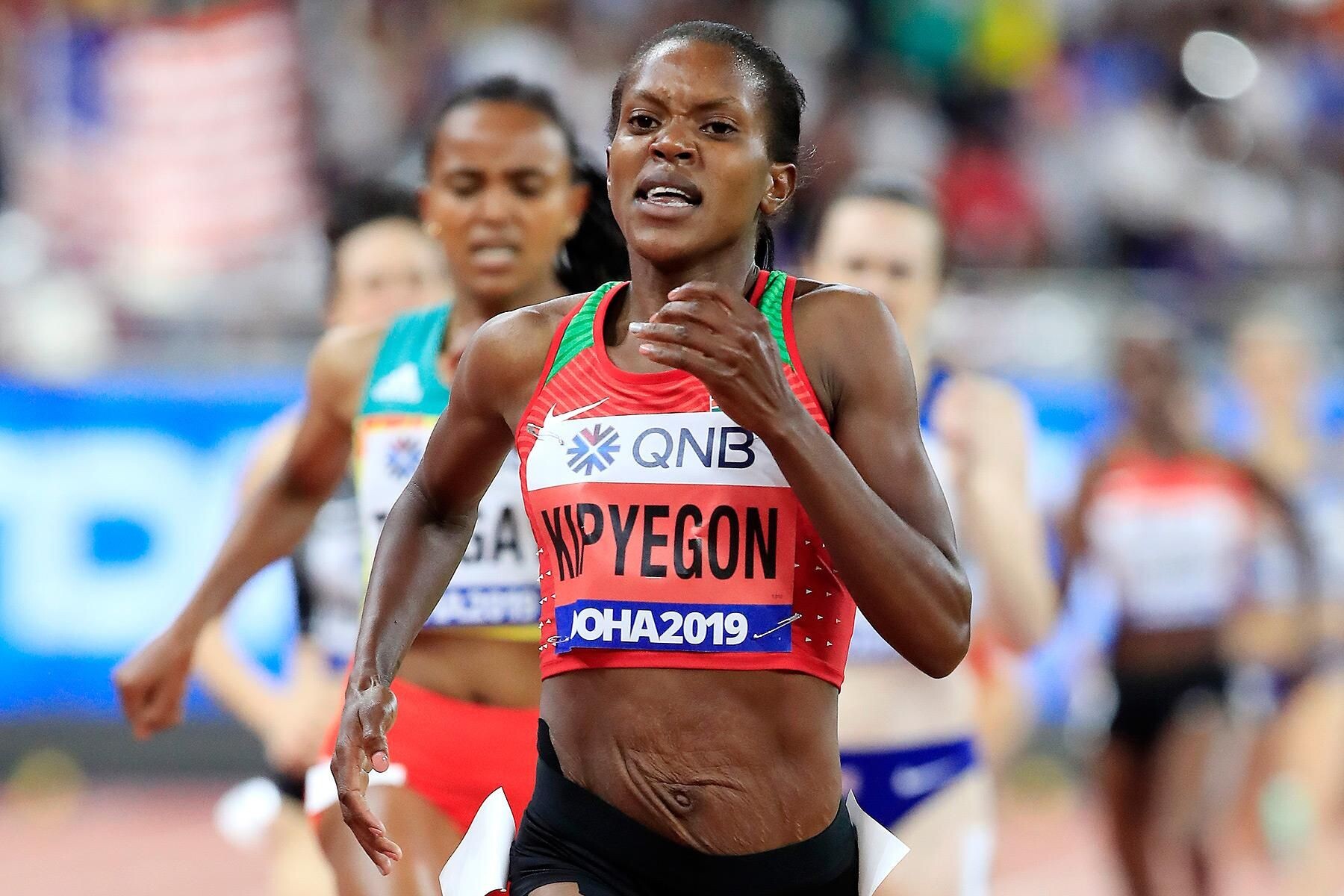
“It’s not a smooth sailing…it’s only that hard work and being patient is the most important thing. I know being patient and training hard will get me where I want to be,” the two-time Olympic champion said.
She opened her season at the Kenyan Olympic trials, where she punched the 1500m and 5000m tickets to the Paris Olympics, dominantly winning both races.
This comes after her final track race that was at the Prefontaine Classic, the Diamond League Meeting in Eugene in 2023. She intended to open her season at the Diamond League Meeting in Xiamen but was forced to withdraw due to an injury setback.
The 30-year-old was then confirmed for the Prefontaine Classic but could not compete there due to the injury. After sealing tickets to the Olympics, she will be chasing history on the global stage, hoping to become the first woman to win three successive Olympic trials in the 1500m.
She will also be keen to win the 5000m gold medal, and etch her name in the annals of history. She made history at last year’s World Championships in Budapest, Hungary to win her third 1500m title and also claim top honours in the 5000m.
“It will be history to win the 1500m for the first time and focus on the 5000m…I know it will not be easy but I’m going to try and see what will be possible,” Kipyegon said.
Her next stop will be at the Diamond League Meeting in Paris, France, where she intends to have a great build up to the Olympics.
(07/01/2024) ⚡AMPby Abigael Wuafula
2024 Western States 100 Results: Walmsley Wins a Fourth Time While Schide Rocks the Women’s Field
For hours, Katie Schide chased ghosts. For hours, Jim Walmsley and Rod Farvard chased each other. And in the end, after 100 courageous, gutsy miles at one of the world’s most iconic ultramarathons, it was Schide and Walmsley who won a fast, dramatic 2024 Western States 100.
Schide, an American who lives in France, was on pace to break the course record until late in the race, while Americans Walmsley and Farvard battled throughout most of the second half of the race, alternating the lead as late as mile 85.
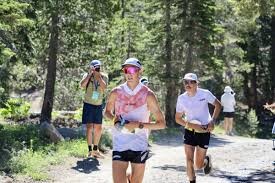
Schide’s winning time was 15:46:57, just over 17 minutes behind Courtney Dauwalter’s 2023 course record, almost an hour faster than her own time last year, and the second fastest women’s time ever. Walmsley, meanwhile, won his fourth Western States in 14:13:45, the second fastest time ever — only behind his own record of 14:09:28 that he set in 2019.
Second and third in the men’s race came down to an epic sprint finish on the track between Farvard and Hayden Hawks , who finished in 14:24:15 and 14:24:31, respectively.
In the women’s race for the podium, Fu-Zhao Xiang (pre-race interview) finished second in 16:20:03, and Eszter Csillag took third for the second time in a row, in 16:42:17.
Both races featured one of the deepest and most competitive fields in race history, with the men’s top five all coming in faster than last year’s winning time, and the women’s top 10 finishing just under 40 minutes faster than last year’s incredibly competitive top 10.
At 5 a.m. on Saturday, June 29, they were all among the 375 runners who began the historic route from Olympic Valley to Auburn, California, traversing 100.2 miles of trail with 18,000 feet of elevation gain and 22,000 feet of loss. After last year’s cool temperatures, the weather at this year’s race was a bit warmer, albeit with a notable lack of snow in the high country. The high temperature in Auburn was in the low 90s Fahrenheit.
A special thanks to HOKA for making our coverage of the Western States 100 possible!
(06/30/2024) ⚡AMPNetflix series ‘SPRINT’ brings speed, drama and glory
The highly anticipated Netflix sports series ‘Sprint’ comes at the perfect time – both for the sport and for the digital age – according to multiple world champion Noah Lyles.
‘Sprint’ takes viewers on an exhilarating journey through the highs and lows of athletes’ lives as they battle it out for gold at the World Athletics Championships Budapest 23.

'Sprint’ shines a particular spotlight on the rivalry between Lyles, 2022 world 100m champion Fred Kerley and Olympic champion Marcell Jacobs in the lead-up to last year's World Championships. The series not only showcases the athletes’ personas, it also delves into their lives off the track.
It reveals, for example, how Lyles – one of several athletes featured across the six episodes of ‘Sprint’ – overcame serious health concerns in his teens to become the poster boy for sprinting. The growth and evolution of world 100m champion Sha’Carri Richardson is another key storyline throughout the series“Being part of ‘Sprint’ was an incredible experience,” said world 100m, 200m and 4x100m champion Lyles. “When I imagined the day where a docuseries would be created, I didn’t always envision me being the first person it would be about.”
Earlier this month, the series trailer was beamed across giant screens in New York’s Times Square ahead of an exclusive pre-screening at the Nasdaq Building in New York, where some of the stars of the show, along with other key figures in the sport, were treated to episodes one and five.
The full series is set to land on the Netlfix streaming platform and screens around the world on 2 July.
Speaking at the pre-screening, Lyles said that this series comes at the perfect time for the digital age that athletes are living in.
“We are rockstars in the top 1% and we live in the age of technology and social media,” he said. “It’s a part of our lives and we need an example of how the sport can go with it.”
Executive Producer Paul Martin expressed his enthusiasm and pride for the project. “It felt like a gift,” he said. “We’re incredibly grateful to be able to go into this world. It felt like we really wanted to go above and beyond to make the best version that we could. There was just something about doing justice to this sport and what these athletes put themselves through. World Athletics opened the door for us, for whatever we needed to get this series done.”
Ato Boldon, the 1996 Olympic 200m silver medallist, lauded the producers of the series, and forecasted that it will help expand the oldest sport in the world.
“We know we have some of the best athletes in the world, but we also know we have some of the best personalities in the world,” he said. “I look at this and say that this is going to open up a range of fans who casually follow these athletes, it’s going to grow our audience and engage fans that we didn’t even know we could get.”
(06/29/2024) ⚡AMP
by World Athletics
River Seine becomes target for pooping protestors ahead of Paris Olympics
In an effort to prove that the river Seine in Paris, slated for open-water events at the Olympics next month, is safe for swimming, French president Emmanuel Macron and Paris mayor Anne Hidalgo promised to take part in “the big dive” by swimming in the river last Sunday. But Parisians, unpleased with how generous the government has been toward the Olympics in the face of social inequity, said they planned to defecate in the river on the same day, in protest. Meanwhile, “political issues” resulted in the “presidential plunge” being rescheduled to the week of July 15.
Swimming in the Seine has not been legal for more than a century, due to high levels of bacteria and pollution in the water.


The protestors went so far as to create a website that calculates when you should poop in the river, based on where you live, so that the waste arrives at Macron and Hidalgo’s entry point right on time. Clearly, the Parisians are taking this (fecal) matter very seriously.
The French government is reported to have already spent $1.5 billion in an attempt to clean the river, but last week’s testing still showed an unhealthy amount of E. coli bacteria contaminating the channel. The pronounced brown colour of the water suggests that many Parisians may still have followed through on their pooping commitments on Sunday.
In response to the postponement, it’s expected the French protestors will adjust the date of their trending hashtag, #JeChieDansLaSeineLe23Juin accordingly.
The first open-water swimming event of the Olympics will be the men’s triathlon, on July 30.
Marathon swimmers and triathletes are preparing for their dip in the River Seine, though some are speculating whether the swimming events can take place. (There is no backup plan for open water events.) Currently, Olympic athletes aren’t able to test the waters to begin training. French officials, on the other hand, claim complete confidence that upcoming sunny days, along with their next cleaning intervention, will do the trick to purify the water. If the bacteria levels in the Seine r
(06/29/2024) ⚡AMPby Running Magazine
Western Quebec police seek to identify nude runner doing late-night hill repeats
A small community in western Quebec is grappling with a mystery as they aim to identify a nude runner caught on camera during a late-night jog in Val-des-Monts, Que., earlier this month.
According to a police report, the owner of a Val-des-Monts business discovered security footage showing someone running naked across his property on June 8 around 1:30 a.m. The video footage captures the man running up and down a gravel hill on private property before making a gesture to the surveillance camera and running off.
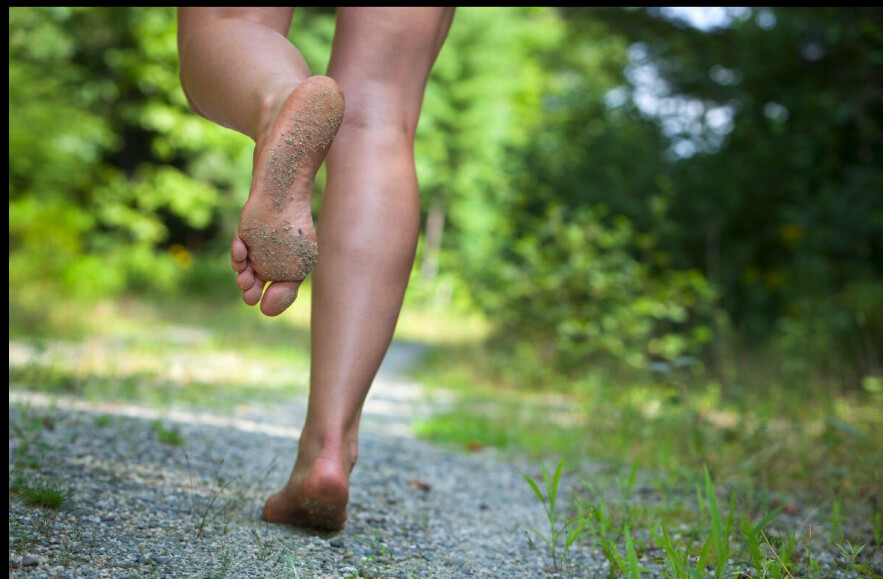
CTV News Ottawa reported that this was not the first incident of a late-night streaker in Val-des-Monts in the past two years. Local police believe the runner is somehow linked to Tenpenny Road Industrial Park, where he was spotted on surveillance footage.

“While the nudist runner may be funny to some people, the whole thing remains a criminal offense and is punishable by one or more statements of offense,” said MRC des Collines-de-l’Outaouais authorities to CTV News Ottawa.
In the video, the caucasian male appeared to be completely nude, not even wearing shoes, which would be quite uncomfortable when running on small stones. A quick Strava investigation to see if there were any nearby running KOM segments the streaker might have been targeting yielded no results.
The police have asked members of the public who may recognize or have any information about this naked runner to contact authorities at 819-459-2422, ext. 3262.
(06/29/2024) ⚡AMPResearch Confirms Rotating Running Shoes Could Save You From Injuries—Here’s How Your Body Benefits
Having a shoe collection is not a frivolous obsession. Here’s how you could possibly benefit from having more than one pair of running shoes.
Once you’ve found yourself the perfect pair—you know the ones you want to spend every run in—it’s kind of hard to give them up. However, doing so could actually work to your advantage by keeping you healthy and strong for each run.
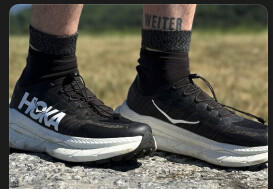
“These days, a lot of people use one shoe for everything, and that puts you at risk for injury,” says Priya Parthasarathy, D.P.M., spokesperson for the American Podiatric Medical Association and partner at USFAS in Silver Springs, Maryland. Running, walking, and weightlifting all require different demands of your feet, so you’ll want to wear different shoes for these activities, she says. Plus, wearing one shoe for all of your workouts can increase the wear on the shoe, so they won’t last as long as you want.
That’s where having a running shoe rotation becomes very helpful. Research and experts back up this idea, and it’s especially helpful to have a shoe rotation if you’re training for a long distance race like a marathon. Here’s what you need to know in order to build a running shoe rotation that meets all of your needs.
Why do you need a running shoe rotation?
Naturally, running places stress on multiple parts of the body, including muscles, bones, and tendons, which can be good for you provided the stress is not too large or frequent that you can’t recover fast enough, says Andrea Myers, D.P.T., who owns a sports performance practice located in Westport and Ridgefield, Connecticut.
”We know from many research studies that different running shoe properties expose the body to different stressors,” Myers says. “We know that minimalist shoes—those with a low or zero drop, flexible sole, and minimal to no stability features—increase the demands on the ankle, foot, and calf muscles, as compared to shoes with a higher drop, which increase the demands at the knee but reduces the demands at the foot and ankle.”
A carefully crafted shoe rotation can possibly offset some of these demands.
To identify characteristics that might contribute to the development of running related injury, a 2013 research study published in the Scandinavian Journal of Medicine and Science in Sport followed 264 runners over the course of 22 weeks. The study found runners who used more than one shoe, a term which they coined “parallel use,” had a 39 percent lower risk of injury. This suggests having more than one pair of running shoes can help you ward off injury.
The reasoning behind it, if you have a cushioned shoe and you let a shoe sit for 24 to 48 hours, the foam in the shoe can de-compress before your next run, says Parthasarathy.
How many shoes do you need in your rotation?
If you’re just starting out, you don’t have to worry about rotating your running shoes, instead, invest in one good pair of running shoes. Parthasarathy recommends finding a shoe with a flexible toe box, firm heel cup, and removable insoles. The one shoe should overall be comfortable to you.
The seasoned recreational runner who runs three to four miles, three days per week, does not need a rotation of four different shoes either, says Myers. Instead, Myers recommends two pairs of shoes that you can rotate every run.
For marathon runners, racking up 35 to 60-plus miles a week with a variety of workouts (easy, long, and speed runs) on their calendars, Myers recommends keeping a shoe rotation of three to four pairs of shoes. This can include one to two pairs of shoes for easy runs and speed workouts, and one pair of shoes for long runs that can handle a variety of different paces. Your long run shoes can also double as a performance trainer, or a lightweight daily trainer, Myers says.
What types of running shoes can you add to your running shoe rotation?
Here are three different types of shoes you can consider adding to your collection, according to Myers:
Daily Trainer: These shoes are primarily for easy running, but can also handle different paces. you can use them to run strides or up-tempo long runs. Good examples of daily trainers include: the Brooks Ghost 15, Saucony Ride 17 or Guide 17, Nike Vomero 17, or Hoka Clifton 9.
Performance Trainer: Best for speed workouts, performance trainers are lightweight shoes that perform best at faster paces and can double as daily trainers as long as you feel comfortable in wearing them for longer distances. Plus, they tend to be more affordable than top-end race performance shoes. A few styles to consider include: Saucony Endorphin Speed 4, Topo Cyclone 2, Mizuno Wave Rebellion Flash 2, and Brooks Hyperion Max.
Racing Shoes: Commonly referred to now as super shoes, racing shoes tend to be more expensive and less durable, considering some shoes have a life expectancy of about 100 to 150 miles. This is why you shouldn’t do the bulk of your training in super shoes, instead you should take them out for a test run or two to ensure they’ll meet all your comfort needs on race day. Saucony Kinvara Pro, Asics Superblast, Adidas Adizero Prime x 2 Strung, and On Cloudeclipse are a few super shoes to consider.
How to find the right shoe to add to your rotation?
Before adding any a shoe to your rotation, you should consider if the shoe is a good fit for your foot arch (flat arch, high arch, or medium arch), running gait (neutral, pronated, or supinated), shoe size, preferred comfort level, and the terrain (treadmill, pavement, or trail) you’ll run on.
“Building a running shoe rotation, especially if you run on different terrains, is important because the shoe wears in different ways,” says Parthasarathy. Meaning where you run will influence some of the characteristics you look for in a shoe. For example, running on hard pavement will require increased cushioning, whereas trail running calls for more stability and traction, she explains.
If you want to change the type of shoe you’re training in, then the recommendation is to ease into the number of miles you try in the new shoe (i.e., don’t go for a long run in a drastically different shoe).
You may experience some soreness if you transition to a different type of shoe, however, you shouldn't experience pain that lasts for days or interferes with your normal running gait pattern on subsequent runs, Myers adds.
Lastly, you’ll want to get rid of your running shoes every so often due to wear and tear that may go unnoticed. ”We recommend you replace your running shoes, especially if you’re doing long distance running every six months or 300 to 500 miles, depending on how hard you are on them,” says Parthasarathy. If you can fold or bend your shoes in half, it’s often an indication the structure of the shoe and cushioning has been broken down, and it’s time for a change, she adds. As mentioned, the new high performance racing shoes tend to have a shorter shelf life when it comes to mileage.
Who should avoid rotating running shoes?
There’s no need to rotate your running shoes if you’re only running a couple of times a week because you’re likely not racking up enough miles to overstress your tissues, says Myers.
Also, don’t rotate running shoes if you have specific biomechanical or orthopedic needs due to injury, foot structure or shape. For example, runners who have arthritis that affects the big toe, a.k.a, hallux limitus, should prioritize running in shoes that can address this condition, which there are few of, Myers says.
(06/29/2024) ⚡AMPWhat the New Grand Theory of Brain Science Can Teach Athletes
“Predictive processing” offers novel ways to think about sports psychology, the limits of endurance, and the urge to explore.
If you read popular science books about the brain, you might have encountered a new “grand theory” called predictive processing. If you haven’t yet, you will. Over the last two decades, it has gone from obscure idea to increasingly dominant paradigm. And it’s such a broad and all-encompassing theory that it seemingly has something to say about everything: how the brain works, why it’s structured the way it is, what that means for how we perceive the world—but also horror movies, mental health, cancer cells, and perhaps even endurance sports and adventure.

I’ve been trying to get my head around predictive processing for five or six years now. It can get complicated if you dig into the mathematical details. But I recently read a book called The Experience Machine: How Our Minds Predict and Shape Reality that does a good job of conveying the theory’s essence in an accessible way. It came out last year and is by Andy Clark, a cognitive philosopher at the University of Sussex who is one of the theory’s leading proponents. The book got me thinking about how predictive processing applies to some of the areas of science that I’m most interested in.
Here, then, is a very rough guide to predictive processing—still a speculative and unproven theory at this point, but an intriguing one—from the Sweat Science perspective.
Normally, we assume that you see the world as it is. Light bounces off the objects around you and into your eyes; the receptors in your eyes send signals to your brain; your brain makes sense of those incoming signals and concludes that, say, there’s a snake on the path. Predictive processing flips the script. Your brain starts by making a prediction of what it expects to see; it sends that prediction out toward your eyes, where the predictions are compared with incoming signals. If there’s any discrepancy between the outgoing predictions and the incoming signals, you update your predictions. Maybe it turns out that it’s a stick on the path, even though at first glance you could have sworn it was a snake.
This is actually a very old idea. It’s often attributed, in a basic form, to Hermann von Helmholtz, a nineteenth-century German scientist. Modern neuroscience pushes the idea farther and offers some clues that it’s true: for example, there are more neural connections leading from the brain to sensory organs like the eyes than there are carrying information from the senses back to the brain. Those outgoing signals are presumably carrying the brain’s predictions to the senses. What we see (and hear and smell and so on), in this picture, is basically a controlled hallucination that is periodically fact-checked by the senses.
What I find particularly intriguing about predictive processing is that there’s a deeper mathematical layer. A British scientist named Karl Friston, who pioneered several brain imaging techniques in the 1990s and is by several measures the most-cited neuroscientist ever, has proposed an idea called the free energy principle. All life, Friston argues, has an essential drive to minimize surprise—which is related to a mathematical quantity, borrowed from physics, called free energy—in order to ensure its continued survival. The resulting equations are beautiful but famously inscrutable. If you’re interested, the best introduction I’ve found is in a free e-book published in 2022 by Friston and two colleagues called Active Inference: The Free Energy Principle in Mind, Brain, and Behavior. The important point, though, is that these equations lead to the qualitative picture I described above, of the brain as a prediction machine.
In The Experience Machine, Clark lays out some examples of why this idea matters. Mental health conditions like depression and anxiety may relate to glitches in how the brain updates its predictions; the aesthetic chills you get from great art or horror movies may signal that we’ve encountered “critical new information that resolves important uncertainties”—a physiological “aha” moment. But what does all this tell us about endurance?
The athlete-related topic that Clark addresses most directly in his book is sports psychology. For example, he has a section on the power of self-affirmation, in which the positive words you say to yourself alter your brain’s predictions, which in turns alters your actions in performance-boosting ways. I’ve written a bunch of times about the effects of motivational self-talk on endurance. I’m fascinated by the evidence that it works, but struggle to reconcile it with my mechanistic understanding of how the body works. Predictive processing offers a new way of understanding the science of self-talk.
The key point is that our brains aren’t just predicting the present; they’re also simulating the future, to minimize unexpected surprises. If we expect to feel pain, fatigue, doubt, or even hunger, those predictions become self-fulfilling prophecies—just as, if you’re wandering through the rainforest, you’re more likely to mistake a stick for a snake than if you’re walking down Fifth Avenue. I remember, a decade ago, puzzling over the results of a study that fed people milkshakes and found that their appetite hormones responded differently depending on whether they were told it was an “indulgent” shake or a “sensible” one. How could appetite hormones respond to words? Through the predictions sent from the brain to the gut.
Clark has a long discussion of placebos, but the most unexpected suggestion he makes is a way of improving sports performance “in a rather sneaky manner.” One of the interesting facts about placebos is that the response can be trained. If you give a real, clinically effective drug to someone repeatedly, their brain will eventually begin predicting the response more and more strongly. During the Second World War, nurses who were running short of morphine sometimes injected saline instead; it turns out that, if the patients had been receiving morphine regularly, their bodies (and brains) responded to the saline injection in a similar way.
Clark proposes training an athlete with a drug that is banned in competition (like stimulants), then giving them a placebo version when they actually race. In theory, this should generate a stronger placebo response than you’d normally get. For the record, I don’t think this is consistent with what the World Anti-Doping Agency calls “the spirit of sport,” but it’s an interesting thought experiment.
What first sparked my interest in predictive processing was an email from a reader after my book Endure came out in 2018. I’d written about how our expectations of how a race will feel at any given point affects how hard we feel we’re able to push, based on theories from Ross Tucker and other researchers. Predictive processing, the emailer suggested, might have something to say on the topic.
I think that’s true. As you gain experience, you develop a pretty good idea of what you’ll feel like halfway through a 5K. If you feel better or worse than expected, that generates a prediction error. There are two ways of fixing prediction errors. One is to update your beliefs: I thought this pace would feel medium-hard at this point in the race, but it feels hard, so I’ll adjust my internal prediction. The other is to adjust your actions: I thought this pace would feel medium-hard, so I’ll slow down until it feels medium-hard. The second strategy is what Friston calls active inference.
Why is it that we generally adjust our pace rather than our beliefs when we’re racing? I’m not sure, but I wonder whether predictive processing will suggest some new ways of probing this longstanding question.
There’s a puzzle in predictive processing called the Dark Room problem. If the free energy principle demands that we minimize surprise, why don’t we just lock ourselves in a dark room until we starve to death? One way of answering this question is to recall that we’re not just trying to minimize present surprise; we’re also trying to minimize surprise in the future. And the best way of avoiding future surprises is to learn as much as possible about the world and how it works.
Predictive processing, in other words, wires us to seek out the unknown in order to learn about it, as a way of minimizing future surprise. This is a different way of thinking about why we like venturing into the wilderness, undertaking challenges like running a marathon, and traveling to unfamiliar places. This is an idea I’m digging deeper into for a forthcoming book on the science of exploring.
Does expressing these ideas in the language of predictive processing actually change anything? That remains to be seen. I’ve talked to some scientists over the past few years who view it as genuinely new, and others who view it more as new words for familiar ideas.
The most practical suggestion that I’ve seen comes from an Israeli scientist named Moshe Bar, who wrote a book called Mindwandering in 2022. Bar’s big idea is that we have what he calls “overarching states of mind” that reflect the degree to which we’re focusing on the “top-down” predictions generated by our brains versus the “bottom-up” observations from our senses.
When we put more weight on predictions, we become more narrowly focused on a given task; when we put more weight on sensory data, we have broader attention, are more inclined to explore, and have a more positive mood. By “zooming out”—thinking about the big picture or the future, talking to ourselves in second person—we can shift the dial toward sensory input and loosen the grip that our predictions sometimes exert on us.
Admittedly, all of this sounds a bit esoteric. But the more I read about predictive processing, and the more I talk to scientists who are developing these ideas, the more I’m convinced that there’s something interesting here. Exactly where all this will lead—well, that’s hard to predict.
(06/29/2024) ⚡AMPby Outside Online
The cooling power of KT Tape Pro Ice provided unexpected pain relief
For years, I’ve viewed kinesiology tape—those brightly colored stripes you see on the legs and shoulders of athletes—as nothing more than snake oil, something people used for show without any real benefits. All my experiences with athletic tape involved protecting an injured joint by tightly wrapping and immobilizing it. I was skeptical that a few strips of tape on the skin could do much.
I hadn’t, however, actually used the product. So when I was invited to attend a summit to learn the science behind a new kinesiology tape product and try it out, I eagerly accepted the invite. As someone deeply passionate about running, climbing, and skiing, and having seen many pro-level athletes embrace the tape, I was intrigued to personally discover if there was substance behind the hype or if it was merely smoke and mirrors, as I had previously believed.
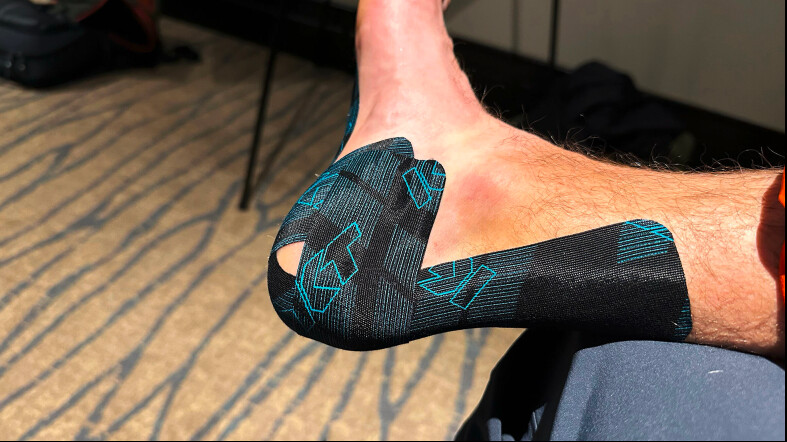
KT Tape funded the travel for this review, but our opinions are our own. If you click or buy through our links, we may earn an affiliate commission. This supports our mission to get more people active and outside. Learn more.
Kinesiology tape is a stretchy, elastic cotton strip with an adhesive backing. I learned it is designed to replicate the elasticity and thickness of human skin, offering support, stability, and pain relief while allowing free movement. It is most commonly used by athletes and physical therapists to aid in the treatment of muscle and joint injuries and enhance performance by reducing inflammation and improving circulation.
When applied correctly, kinesiology tape lifts the skin, decompressing the fascia and allowing lymphatic fluid to drain rather than build up. Blockage of lymphatic fluid can cause swelling and pain. Lifting the skin and opening up blood flow also facilitates the transport of white blood cells to the area, thus reducing harmful bacteria and waste products from cells and tissues.
When I looked at the scientific literature on kinesiology tape, I found the evidence mixed. While some studies suggest that it may provide benefits such as pain relief, improved muscle function, and reduced swelling, other research indicates that its effects may be no different from a placebo.
One 2012 meta-analysis found its benefits trivial, citing it “may have a small beneficial role in improving strength and range of motion in certain injured cohorts,” but went on to say that further studies are needed to confirm these findings. Another meta-analysis, this one in 2015, found applying kinesiology tape was “superior to minimal intervention for pain relief,” (or, put another way, better than doing nothing) but concluded it was not better than other treatments to reduce pain. This ambiguity only reinforced my skepticism, but also increased my interest in why the tape has become so popular.
The summit, held in Park City, Utah, centered around the launch of KT Tape Pro Ice, a new kinesiology tape infused with cooling menthol. Menthol, a compound available in both natural and synthetic forms, reduces pain sensation when applied to the skin by creating a cooling effect. KT Tape Pro Ice incorporates menthol into its adhesive, providing the dual benefits of kinesiology tape and pain-numbing menthol.
The event planners’ strategy was to spend time working out—skiing and snowshoeing—to induce muscle soreness and fatigue, then use KT Tape Pro Ice to alleviate that soreness and any accompanying pains. Doubtful that the menthol-infused version would make any difference, I was in for a surprise.
As an avid runner, I frequently deal with nagging aches and injuries. Currently, I’ve been grappling with a persistent Achilles injury, which—despite using topical pain relievers, seeing physical therapists, and even considering surgery—has been an issue for several years. I was hopeful that Pro Ice might help. I have Haglund’s deformity, a large bump on the back of my heel that, when pressure is applied, swells and causes pain. Since ski boots fit tightly, I’m usually in pain immediately following a day of skiing. This time was no exception. We were slated to go snowshoeing the night after skiing, creating a perfect test of KT Tape Pro Ice’s pain-relieving qualities.
After skiing, we were handed samples of KT Tape Pro Ice and instructed to apply it to any painful areas. Experts were available to assist with the application. The proper application method, they explained, is called anchor, stretch, anchor. You stretch the center of the tape, apply it to the skin, and leave about two inches unstretched at each end to secure it to your limb. Given I was completely new to this, I opted to have an expert apply it to ensure it was done correctly.
Within a few minutes, I could feel the menthol working. There was a strong cooling sensation that did indeed seem to override my pain. Usually, my Achilles stiffens when I rest after activity, but the tape also helped alleviate that. It felt like it prevented my Achilles from cooling down and tightening up during periods of inactivity. I could feel the menthol working for around four hours, and it reactivated when I started sweating during snowshoeing.
Once I got home, I continued testing KT Tape Pro Ice on my Achilles when it was sore and also on my lower back for pain caused by moving large heavy objects. When applying the tape at home, the cooling effect was nowhere near as strong on my Achilles as it was initially at the event, but it felt stronger on my lower back pain.
We were told that each person would experience the menthol differently. Some may have a strong reaction to the cooling, with it lasting four to eight hours, while others may not feel anything at all, adding the cooling effect may even vary between applications on the same person. Apart from this warning that the cooling effect may vary between applications and body parts, and the fact that I was applying it myself, I’m unsure why it wasn’t as effective on my Achilles on subsequent applications. Luckily, my Achilles has not been painful enough that I felt I needed serious relief—which may be another explanation for the reduced sensation.
I’ve continued to test it on various body parts such as sore forearms from rock climbing and sore thighs from running—and each time it provided pain relief and improved post-soreness mobility.
I still haven’t tried kinesiology tape without menthol, and I’m not sure I’ll need to as long as I have the Pro Ice version. The addition of menthol really brings the tape to life. Every time I’ve used it, I immediately feel the tape working, significantly reducing my perception of soreness, and allowing me to work out again sooner. After testing KT Tape Pro Ice, I’m completely convinced of its benefits and have even become somewhat addicted to it.
Here’s the thing: KT Tape is safe—no scientific studies I’m aware of have reported adverse effects from using it. Furthermore, while the studies are ambiguous about its benefits, there are countless anecdotal stories of KT Tape helping individuals manage injuries during both exercise and daily activities for many years. If the worst outcome of it not working is losing a few bucks, there’s little reason not to try it.
(06/29/2024) ⚡AMPby Outside Online
Can Dogs Protect You From Grizzly Bears? Science Says Yes.
Want to recreate, farm, or just safely live near grizzly bears? A new study shows that adopting a dog can provide protection—for both you and the bears.Think your trusty dog is no match for a ferocious grizzly bear? Turns out the simple presence of a livestock guardian dog can reduce visits from grizzly bears by 87.8 percent, according to a new study conducted in Montana. That result should be encouraging to anyone who lives near expanding grizzly populations in the Northern Rockies or, according to the researcher responsible for the study, those of us recreating in grizzly habitat, too.
“Humans have relied on dogs for protection from wild animals for thousands of years for a reason,” says Julie Young, the Utah State University wildlife scientist who conducted the research alongside Montana Fish, Wildlife, and Parks. “They work.”

Young’s study placed five livestock guardian dogs (LGDs) at four farmsteads in northern Montana with “a chronic history of bears accessing grains and other attractants next to their homes,” and kept dogs away from five similar farmsteads as a control.
“It’s like watching two frat boys shout ‘Hold me back, bro,’” she illustrates. Both species avoid physical altercations through instinct. A dog’s scents, barking, and presence are enough to force most bears to turn tail.
Since grizzly populations in the lower 48 states gained Endangered Species Act protections in the seventies, their number has grown to nearly 2,000 bears. Bear populations are largely split between the ecosystems surrounding Yellowstone and Glacier national parks. As the bears go looking for new habitat, they’re traveling east, onto the prairies where they historically thrived before the arrival of European settlers. That’s bringing the species into conflict with humans in new areas, threatening both their survival, and the safety of human families in places that, until a few years ago, never had to think about coexisting with large apex predators.
The result? “There were 58-fold fewer camera-trap detections of bears visiting farmsteads with LGDs and an increase in behaviors suggesting bear discomfort compared to paired [control farmsteads],” the study found. “After LGDs were deployed, there was an 87.8 percent reduction in GPS-collar locations of bears within 300 meters of farmsteads relative to before.”
Most importantly, no bears, humans, or dogs had to be harmed to achieve those results. “The bears simply avoided the farms with dogs,” Young explains.
Young believes this revelation could impact the safety of humans as well. She’s studied interactions between LGDs and large predators before. But that research focused on the ability of livestock guardian dogs to protect herds. To her, the big question here was whether or not the same behaviors and result could be applied to families and their physical property—not just sheep and goats.
“The farmers were worried that the dogs might be aggressive toward their children,” says Young.Young selected the canine breed Kangals for the study. These dogs are a purebred line of the Anatolian Shepherd, an ancient livestock guardian breed from Turkey. Kangals are the most athletic of the giant breeds, and reportedly highly aggressive.
Young explains that she chose the Kangal because, it “is an ancient breed specifically bred to guard against large predators.” Great Pyrenees and Akbash, which are common on western farms, are not. The researcher says that contrasts the strengths of what she calls, “the generic white dog,” which is more commonly used to protect against smaller predators like coyotes.This is where the study becomes relevant to me and my family. Six years ago, we adopted a rescue puppy that we thought was a mutt, but turned out to be a pure-bred Kangal. We split time between Bozeman, in southwest Montana, and a family cabin in northern Montana. Grizzly bears are an ever-present fact of life at that cabin. We frequently come across their tracks and signs elsewhere. In addition to a layered security protocol runs from limiting attractants to heavy-caliber firearms, we rely on our dogs to keep us safe.
I want to shoot a bear even less than I want to get my face torn off by one, and Teddy, our Kangal, is an important part of preventing either event from occurring.
“We know that Kangals can bond with shepherds,” says Young. And now, with evidence from this new research, we also know that they not only bond with families, their farms, and children, but that those farmers like having the dogs around as well.
“All four farms chose to keep the Kangals, and are recommending them, too,” says Young. “Famers in the control group are also now seeking out the dogs.”
The study’s results builds on the findings of other research. Young compared the effectiveness of Kangals to other livestock guardian dog breeds for a paper published in 2019, while a 25-year study in Namibia found the breed reduced livestock losses to big cats by 91 percent. Research published in Turkey in 2017 indicated that Kangals bonded more strongly with humans than sheep.I asked Young if these results could be applied to our cabin and our camping trips. “Paired with other measures, dogs can be a successful tool at deterring bears in any setting,” she said. Young went on to explain that the study will give wildlife officials working in the field the evidence they need to bring dogs along with them for grizzly protection.
When I talk about using my dogs to ward off or potentially fight a bear, I’m often met with skepticism. Surely even a 125-pound ancient livestock guardian dog like Teddy couldn’t take on a 500-pound-plus griz, right? So I also asked Young to explain that dynamic.
So there you have it: Scientific evidence that, unlike bear spray, a dog with significant guarding instincts is effective at deterring the largest land predator in the world. That should help reduce conflicts with humans as the species continues to expand into its historic habitat. If you do everything else right, a dog can be an additional tool for avoiding grizzly bears the next time you recreate in the places they call home.
(06/29/2024) ⚡AMPby Outside Online
Remembering Kristiansen’s barrier-breaking sub-15-minute 5000m
When Ingrid Kristiansen lined up for the 5000m at the 1984 Bislett Games, she was known as the former international cross country skier who had just become Europe’s fastest ever woman in the marathon.
It was only six weeks previously that the 28-year-old mother from the Viking stronghold of Trondheim had made her major breakthrough in athletics, storming through halfway in the London Marathon in a blistering 1:10:52 en route to a winning time of 2:24:26.
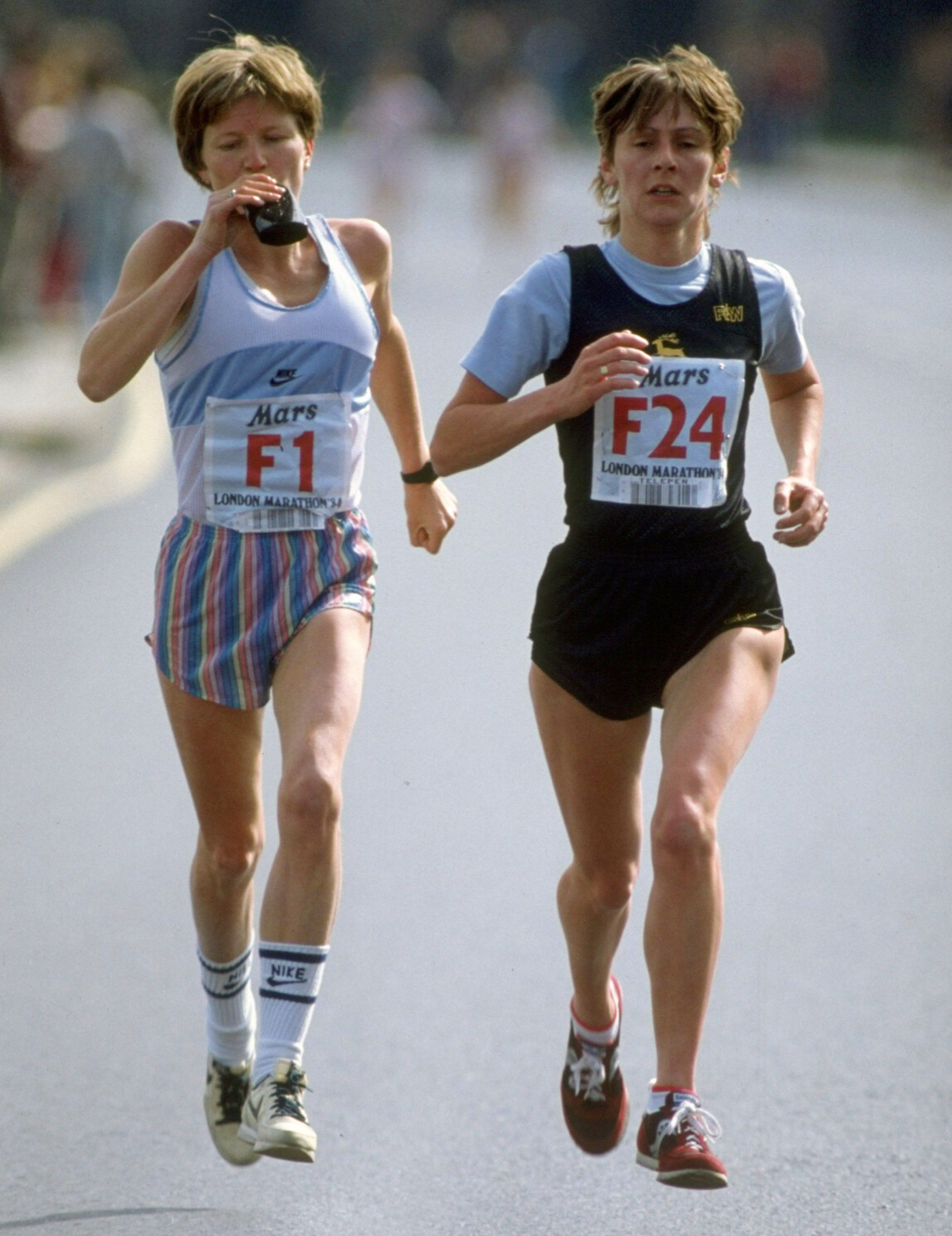
In the process, Kristiansen first peeped out of the considerable shadow of the great Grete Waitz as another formidable Norse to be reckoned with on the global running stage.
The London run elevated her to second spot on the world all-time list, behind the 2:22:43 recorded by Joan Benoit of the US in Boston the previous year, but ahead of Waitz’s Norwegian and European record of 2:25:28.7.
It was only fitting that the burgeoning Kristiansen should claim her first world mark on home ground, in the heart of Norway’s capital city on the hallowed Bislett Stadium track.
That was 40 years ago, on the evening of 28 June 1984.
‘Dead tired… pushed on by the cheers of the crowd’
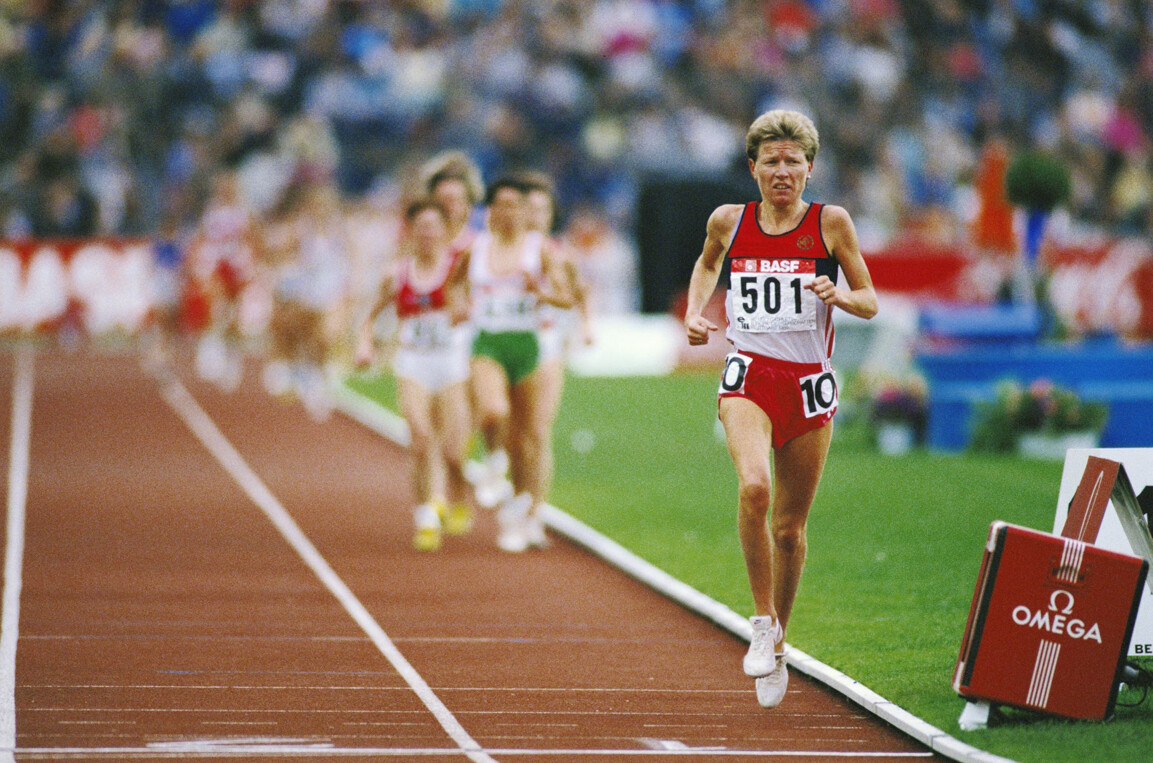
The official world record for the women’s 5000m stood at 15:08.26 – to Mary Decker, or Mary Tabb as she had been when she set the figures on home ground at the 1982 edition of the Pre Classic.
In Apartheid South Africa on 5 January 1984 – and therefore ineligible for recognition – the barefoot Springbok wunderkind Zola Budd had run 15:01.83 in Stellenbosch. By June of the same year, Budd had already become a British citizen and was on her way to being rubber-stamped in the British team for the Los Angeles Olympics.
That night in Oslo, though, Kristiansen’s only rival was the Bislett Stadium clock.
After following Maggie Keyes of the USA through 1000m in 3:02.0, Kristiansen surged clear of the field, reeling off laps of 70-72 seconds.
Passing 3000m in 8:59.8, Kristiansen finished with the flourish of a 68.4 final lap before crossing the line in 14:58.89.
Off marathon training of 170-180km a week, she had become the first woman in history to beat 15 minutes for 5000m.
“I was dead tired during the last two laps but I was pushed on by the cheers of the crowd,” she confessed.
Aurora Cunha, the future three-time world road race champion from Portugal, finished a distant runner up in 15:09.07, followed by Briton Angela Tooby (15:22.50).
Back in sixth was Portugal’s European marathon champion Rosa Mota (15:30.63) – followed by Tooby’s twin sister, Susan (15:44.58), future mother of 2022 world 1500m champion Jake Wightman.
Holding a distance world record triple
Kristiansen was to go quicker over 12.5 laps. At London’s Crystal Palace in 1985, she clocked 14:57.43 but lost the world record to Budd, a clear winner in 14:48.07.
In Stockholm in 1986, however, Kristiansen reclaimed the record with a stunning 14:37.33.
That year she was at her zenith on the track, improving her own 10,000m world record by almost 46 seconds with a 30:13:74 run at Bislett.
Kristiansen was the first runner in history to simultaneously hold world records for 5000m, 10,000m and the marathon.
Returning to the London Marathon in 1985, she brought the women’s 2:20 barrier into sight with a 2:21:06 triumph that stood as a world record for 13 years.
Kristiansen also became the first athlete to claim world titles on the track, on the road and over cross country. Twice a winner of the 15km world road race championship, she won the world 10,000m title on the track in Rome in 1987 and the world cross country crown in Auckland in 1988.
Big heart and big lungs
Many attributed Kristiansen’s phenomenal success to the physiological benefits she had gained from giving birth to her first son, Gaute, in 1983. She felt it was more the edge she had gained from years of competitive cross-country skiing.
“I think it came from my cross-country skiing career,” she asserted. “It gave me a big heart and big lungs, and when I got my legs trained for running I was maybe a little bit ahead of the other runners at the time.”
As a cross-country skiing prodigy, Kristiansen won the European junior title in 1974, was selected as a reserve for the Winter Olympics in Innsbruck in 1976, and finished 15th in the World Championships 20km race in 1978.
She decided to concentrate on competitive skiing for several years after making the Norwegian team for the 1971 European Athletics Championships as a 15-year-old 1500m runner, Ingrid Christensen. But she got bumped off the track in her heat in Helsinki and failed to finish the race.
Her roommate in the Finnish capital was a 17-year-old called Grete Andersen, who finished eighth in the other 1500m heat, missing the cut for the final.
She also made a name for herself in future years: as Grete Waitz, the first of Norway’s barrier-breaking distance-running duo.
(06/28/2024) ⚡AMPby World Athletics
Moh Ahmed dazzles in Canadian 5,000m final with championship record
Canada’s greatest men’s distance runner, Moh Ahmed, had his hands full on Thursday night in the men’s 5,000m at the 2024 Bell Canadian Olympic Track and Field Trials in Montreal, with Quebec’s Thomas Fafard chasing the Olympic standard of 13 minutes and five seconds from the start. Ahmed stuck with the pace and dazzled as he won the men’s 5,000m title in a new championship record time of 13:10.99.
Ahmed’s finishing time is the fastest ever by a domestic athlete on Canadian soil, breaking the previous record by two seconds.
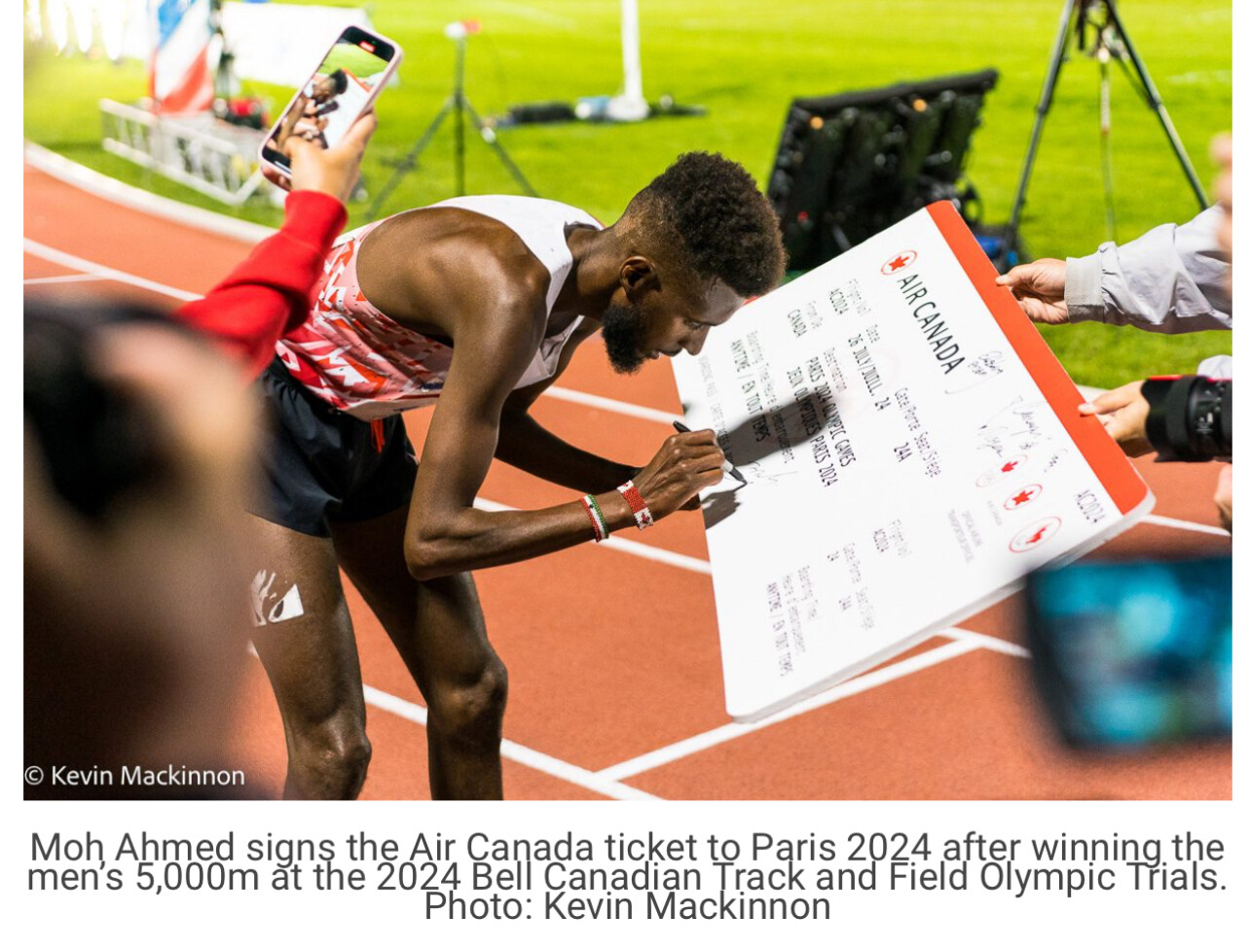
The men’s race went out at a 13-minute pace, with Fafard needing a time of 13:20 or faster to improve his Paris 2024 qualification spot in the rankings. He was paced by his teammate and newly crowned national steeplechase champion, Jean-Simon Desgagnés, for 2,000m. Once Desgagnés stepped off, Fafard kept the pedal to the metal but was unable to hold off Ahmed’s momentum in the final 1,000m.

“I love this racing style,” says Ahmed. “Thomas made it an honest race.”
Moh Ahmed signs the Air Canada ticket to Paris 2024 after winning the men’s 5,000m at the 2024 Bell Canadian Track and Field Olympic Trials. Photo: Kevin Mackinnon
This is the 21st time in Ahmed’s career that he has finished a men’s 5,000m under the 13:12.00 mark—a feat every other athlete but Ahmed has only achieved six times. This is the second event he’s qualified for in Paris; he’s already been named to Team Canada in the 10,000m event.
Fafard crossed the line for second place ahead of Ben Flanagan in 13:18.02—the second-fastest time of his career. Flanagan rounded out the podium in 13:29.42. Earlier this season, Fafard missed the Olympic standard in the 5,000m by seven one-hundredths of a second, running 13:05.07. He currently sits inside the World Athletics Paris 2024 selection quota, but things can still change between now and when the window closes on Sunday, June 30.
(06/28/2024) ⚡AMPRena Elmer, a former steeplechaser who’s had two kids since running the 2020 Olympic Marathon Trials, placed seventh at Grandma’s Marathon.
In March, Rena Elmer watched her daughter Taryn—a freshman at Marcus High School in Flower Mound, Texas—run a personal best 5:15 mile in a downpour.
So when Taryn saw the forecast for Grandma’s Marathon this weekend, she had a message for her mom. “She grabbed my shoulders and said, ‘Mom, you’re going to PR,’” Elmer told Runner’s World by phone on Sunday. “I PRed in the rain—you can PR in the rain, too.”
The elder Elmer, who’s 41, took those words to heart. Despite steady showers, she ran 2:35:45—nearly 5 minutes off her previous personal best—and placed seventh in her third marathon.
The time came as a bit of a shock to Elmer. She hadn’t raced 26.2 miles since the 2020 Olympic Marathon Trials in Atlanta, where she ran2:41:22 to place 53rd. In the two years since, she’s had two more children—Jane, born in January 2021, and Jessica, born in December 2022—to add to her previous nine.
In fact, the only time she’d raced in the past four years was in March. Then, she won the Irving Half Marathon in 1:17:58 to gain entry to the elite field at Grandma’s. Based on that, and the times she’d run in training, she expected to be able to run between 2:40 and 2:42.
But all those paces have come in the brutal Texas heat. And though she uses a pace calculator during training to account for conditions, Saturday’s mid-50s temperatures and tailwind at the start left her feeling better than anticipated. She started the first 5K at 6:12 pace and gradually picked it up from there, latching onto other runners as she went and covering the last 10K at 5:44 pace.
“It was incredible—it felt so good, I just felt so powerful and smooth and strong,” she said. “I just love running for that feeling.”
The sport has long brought Elmer joy and carried her through both triumphs and tragedies. After running in high school in Beaver, Utah, she walked on to the track and cross country teams at Brigham Young University. Her junior year, she placed third in the 3,000-meter steeplechase at the 2005 NCAA outdoor championships.
She kept running after graduation, and after narrowly missing in 2008 and 2012, qualified for the 2016 Olympic Track and Field Trials in the steeplechase. There, she made the final and finished 10th.
In between those accomplishments came incredible hardships. She had her first two children—Taryn and her twin brother, Talon—in 2009, and Elmer developed serious complications afterward. And in 2015, two more children later, an abusive situation involving her now ex-husband broke her family apart.
But her sport—and her faith—carried her through. In January 2017, she met Will Elmer, who also had four children. They married and joined their families, and since then have had three more kids.
Elmer switched to the marathon in 2019, and ran 2:40:21 in her debut at the Indianapolis Monumental Marathon to qualify for the Trials.
(06/27/2024) ⚡AMPby Runner’s World
The 2024 U.S. Olympic Track and Field Trials has seen a giant spike in viewership, with their largest audience in 12 years
The first four days of the U.S. Olympic Track and Field Trials at Hayward Field in Eugene, Ore., have been nothing short of spectacular. We’ve witnessed triumph, world-record performances, as well as heartbreak, with TV ratings reflecting the excitement.
According to NBC, Sunday’s 100m final attracted an audience of 5.2 million people who tuned in to watch Noah Lylescompete against Fred Kerley and Christian Coleman.
Lyles equalled his personal best of 9.83 seconds to win the men’s 100m at the 2024 U.S. Olympic Trials. Photo: Kevin Morris
In a country with a population of 330 million people, 1.5 per cent of the viewership might not seem significant. However, this race was the most-watched track and field event in the U.S. since the Olympic Trials for London 2012. This bodes well for NBC, with the Paris Olympics (athletics portion beginning on Aug. 1) being the pinnacle of the track and field season later this summer.
Lyles won the 100m final with a personal best time of 9.83 seconds, earning his first U.S. men’s 100m outdoor title and qualifying for his first Olympics in the 100m event. Olympic 200m silver medallist Kenny Bednarek finished second with a personal best of 9.87 seconds. The 2022 world champion, Kerley, edged out Coleman to secure his spot on his second consecutive Olympic team, placing third in 9.88 seconds.
(06/27/2024) ⚡AMPFor the first time in history more than three quarters of a million people applied to take part in the London Marathon with 840,318 applicants
London Marathon ballot applicants will find out on Wednesday if they have been lucky enough to get a place but many will be disappointed after a record 840,318 people entered the draw.
The number of hopefuls requesting a place for the 2025 event shot up by 261,944 (45.29%) on the previous record set by the 578,374 who entered the ballot for the 2024 marathon.
It is the first time in history that more than three quarters of a million people have applied to take part in a marathon, with applicants from the UK and across the world entering the draw for the TCS London Marathon on Sunday April 25 2025.
Event director Hugh Brasher said: “There’s a record number of people anxiously awaiting tomorrow’s results and we wish everyone the very best of luck.
“For those who are successful, your journey to the 2025 TCS London Marathon begins Wednesday June 26.
(06/25/2024) ⚡AMPTCS London Marathon
The London Marathon was first run on March 29, 1981 and has been held in the spring of every year since 2010. It is sponsored by Virgin Money and was founded by the former Olympic champion and journalist Chris Brasher and Welsh athlete John Disley. It is organized by Hugh Brasher (son of Chris) as Race Director and Nick Bitel...
more...Olympic 800m champion Athing Mu out of Paris 2024 after falling at US trials
Olympic champion Athing Mu’s hopes for a repeat came crashing down on the first lap of the 800m final at the US Olympic trials on Monday.
Racing in the middle of the pack, Mu tangled with a bunched group of runners and went crashing to the ground before rolling on to her back. She got back to her feet and finished the race, but was more than 22 seconds behind the winner, Nia Akins, who took first place with a time of 1 minute 57.36 seconds.
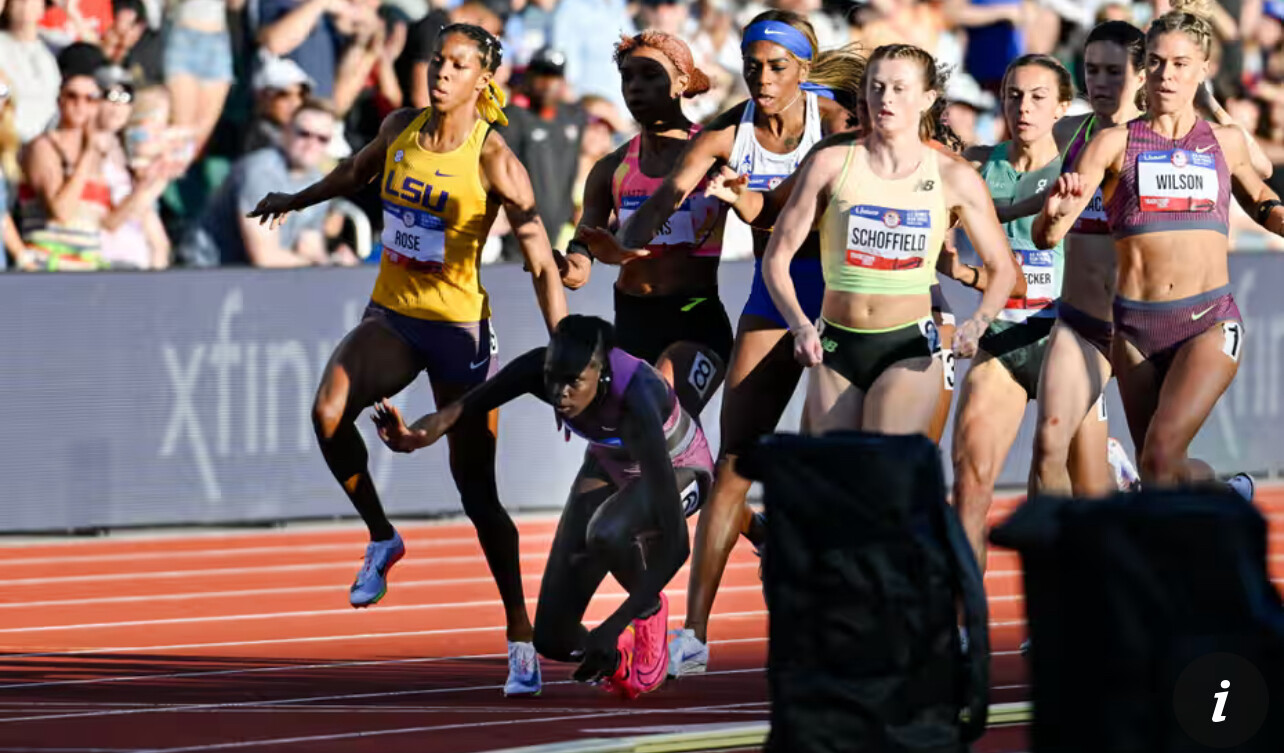
The 22-year-old Mu was choking back tears as she headed quickly off the track and through the tunnel after the race. She did not immediately come through the media area for interviews.
The Olympic trials were Mu’s first meet of the year after dealing with injuries all season. She looked to be in good form in her first two rounds, but was out of the running in the final before the first 200m.
It was Exhibit A of the unforgiving format of the US trials, where the top three finishers make the Olympic team and past performances mean nothing.
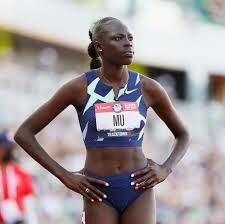
“I’ve coached it,said told The Associated Press. “And here’s another indication that regardless of how good we are, we can leave some better athletes home than other countries have. It’s part of our American way.”
Kersee said Mu was clipped from behind and that a protest had been lodged. USA Track and Field did not immediately respond to queries about the status of the protest. Kersee said Mu got spiked, had track burns and hurt her ankle.
“She’s going to be licking her wounds for a couple of days,” Kersee said.
Mu could still go to Paris as part of the US relay pool; she was a key part of America’s gold-medal win in the 4x400m three years ago in Tokyo.After winning college, national, world and Olympic championships all before turning 21, Mu won a bronze medal at worlds last year and, afterward, conceded she needed a break from the pressure and demands that come with being tagged as one of track’s new stars.
“For sure, I wasn’t really happy to be there,” she told the Guardian when asked about her 2023 season. “Mentally, I just wasn’t really there. I just wasn’t present. I didn’t appreciate being there. I didn’t really enjoy what was happening to me.”
She has dominated the 800m thanks, in part, to a long, loping stride, and that may be what cost her in a race in which she came in as the favorite. Mu was racing on the outside in a tightly bunched pack and looked to be veering to her left toward Juliette Whitaker when she tripped, leaving three runners behind her flailing as they jumped over her.Mu is hardly the first athlete to suffer such misfortune. One of the more memorable and heartbreaking moments came eight years ago in the same event, when Alysia Montano, looking to return to the Olympics, was tripped up in the homestretch and stayed down on the track crying.
There was drama elsewhere on a busy night that included six finals.
The women’s 5000m came down to a 0.02sec difference with Elle St Pierre finishing in 14:40.34, just ahead of Elise Cranny. Both are going to the Olympics.
Vashti Cunningham, who had a combined 13 straight US indoor and outdoor titles coming into the week, won a jump-off for third to make her third Olympic team.
Meanwhile, 16-year-old Quincy Wilson finished sixth in the 400m final with a time of 44.94, his third sub-45 race in three tries at the trials.
Now, he will wait to see if the US track team calls on him to be part of the relay pool.
“All I know is I gave everything I had,” he said. “I can’t be too disappointed. I’m 16, and I’m running grown-man times.”
(06/25/2024) ⚡AMPHistoric shift in Olympic schedule coming to LA 2028 Games
On Friday, World Athletics and the Los Angeles 2028 Olympic organizing committee announced a major change to the competition schedule for the 2028 Olympics. For the first time in Olympic history, athletics will take centre stage during the opening week, switching places with swimming.
The new schedule, which moves swimming events to the second week, aims to create more opportunities for athletics in terms of pre-Games promotion and Games-time viewership.

“We are excited to support this visionary timetable change for LA28,” said Sebastian Coe, president of World Athletics, in a press release. “This change underscores our commitment to innovation in athletics and elevating the global profile of our athletes. By prioritizing athletics in the first week, the Games will witness the most thrilling of starts, captivating audiences worldwide and setting the stage for an unforgettable Olympic journey.”
The marathon events will maintain their traditional placement over the final weekend, with medals being presented during the closing ceremony, continuing a legacy that dates back to the first modern Olympic Games in 1896. The track events at the 2028 Games will be held at the iconic L.A. Memorial Coliseum, which will make history as the first stadium to host events at three Olympic Games (1932 and 1984).
“We believe the positive effects of this change will extend beyond the two sports involved, strengthening the LA28 Games as a whole and ultimately benefiting all sports in the LA28 program,” said Janet Evans, chief athlete officer for LA 2028.
World Athletics and the organizing committee hope the high level of interest and excitement from the opening ceremony will carry into the athletics portion. The L.A. 2028 Games will run from July 14 to 30, 2028, featuring over 10,000 athletes from more than 200 nations competing in 35 sports.
This is the third time Los Angeles will host the Summer Olympics; it also hosted in 1984 and 1932.
(06/25/2024) ⚡AMPCanadian ultra-star Priscilla Forgie is ready to crush Western States 100
Edmonton’s Priscilla Forgie is blazing a trail in Canadian ultrarunning, and she’s primed for one of the biggest races of the year—Western States 100-miler, set for June 29th. Having finished as the top Canadian in last year’s race (eighth place overall), Forgie is back, even more prepared and ready to tackle the course in Auburn, California. Her secret? Three specific strategies that can benefit any runner aiming to elevate their performance.
Forgie has dominated numerous races in recent years, with victories at the Squamish 50-mile and 50/50, a second-place finish at the Canyons Endurance Run, and an overall win (with a course record) at the Near Death Marathon. Here’s how she’s preparing for Western States 100 and how you can apply her methods to your own training.
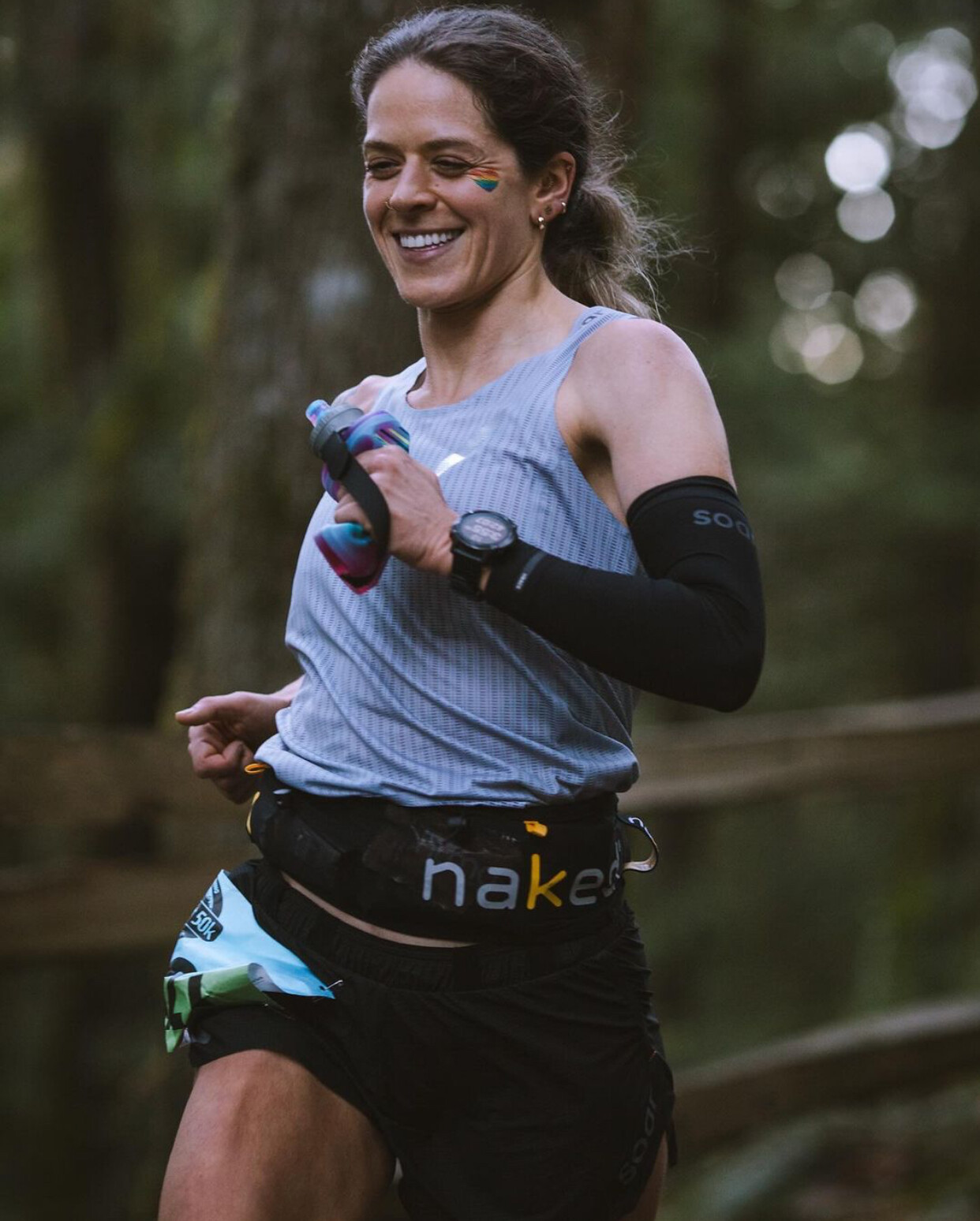
“Last year, I was told I looked better at the 100K mark than at 50K! The elevation in the high country kicked my butt, so I arrived a bit earlier this time around to adjust,” Forgie shares.
Altitude can be a game-changer in endurance races. If your race is at a higher elevation than you’re used to, plan to arrive several days or even weeks early if at all possible, to give your body time to acclimate. If you’re unable to spend extra days at altitude, make sure to incorporate lots of elevation gain into your training runs and consider practising breathing techniques to help reduce respiratory fatigue.
(06/24/2024) ⚡AMPby Running Magazine
How to Run in the Heat Like the Pros
Over the past decade, training for the heat has gone from a nice-to-have to an absolute necessity for top runners. Professor Chris Minson is attempting to perfect the science.
After a few pleasant hours sitting in the sun watching the Prefontaine Classic in Eugene, Oregon last month, I headed down into the bowels of Hayward Field for a grueling test for running in the heat. Chris Minson, a professor of human physiology at the University of Oregon, had invited me to try the heat adaptation protocol he has developed for elite athletes from the university and from local pro teams like the Bowerman Track Club. I’ve written about Minson’s research several times, so experiencing the protocol first-hand seemed like a good idea… at the time.

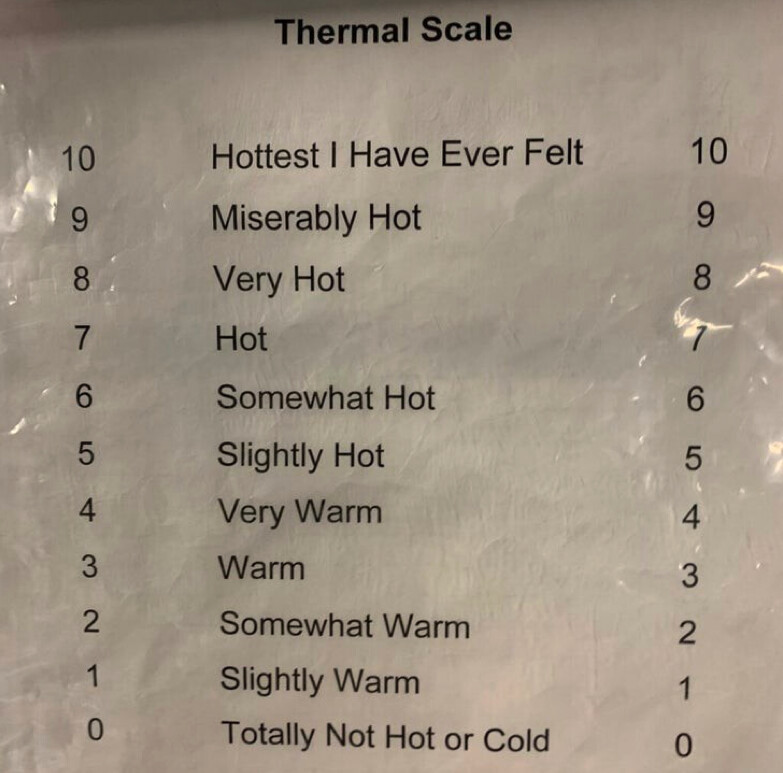
Heat is a big deal in sports these days, and it’s only getting bigger. In recent years we’ve had major events like the world track and field championships in insanely hot places, like Qatar, where the marathons had to be started at midnight. But summertime in Eugene (where the Olympic Track Trials will take place later this month) and Paris (where the Olympics will be held) can also be sizzling. Over the past decade, heat preparation has gone from a nice-to-have to an absolute necessity for top athletes. The details of how to prepare remain more art than science, though, so I was interested to see how Minson put theory into practice.
Back in the 1920s and 1930s, scientists developed the first heat adaptation protocols for workers in South Africa’s sweltering gold mines. The gold standard for heat adaptation evolved from that work: spend at least an hour a day exercising in hot conditions, and after 10 to 14 days you’ll see a bunch of physiological changes. Your core temperature will be lower, your blood volume will be higher, you’ll begin sweating and dilating your blood vessels at a lower temperature threshold, you’ll sweat more, and so on. Put it all together and you’ll be able to stay cooler and run faster in hot conditions.
In fact, there’s even evidence that this type of heat adaptation can make you faster in moderate weather, perhaps as a result of the extra blood plasma. In the lead-up to the 2008 Olympics, Minson was working with American marathoner Dathan Ritzenhein, helping him prepare for the expected hot conditions in Beijing. But he started to worry about what would happen if it wasn’t hot: would all the heat training actually make Ritzenhein slower? Minson and his colleagues ran a study to find out; the results, which they published in 2010, suggested that heat adaptation helps even in cool conditions. That’s the study that really kicked interest in heat training into higher gear.
The problem with the classic approach, though, is that training for an hour in hot, muggy conditions is exhausting. If you’re trying to do a hard workout, you won’t be able to hit the splits you want. If you’re trying to do an easy run, it’s going to take more out of you than it usually does, potentially compromising your next hard workout or raising your risk of overtraining. So how do you get the benefits of heat adaptation without tanking the rest of your training plan?
Minson’s Exercise & Environmental Physiology Lab at the University of Oregon, which he co-runs with fellow physiologist John Halliwill, is located in the Bowerman Sports Science Center, a state-of-the-art facility located under the northwest grandstand of Hayward Field. The key piece of equipment, for my purposes, is an environmental chamber that can take you down to 0 degrees Fahrenheit or up to 22,000 feet of simulated altitude, deliver simulated solar radiation, or blast you with wind. For my heat run, Minson set the dials to 100 degrees Fahrenheit and 40 percent humidity.
Earlier that day, Minson had given me a thermometer pill to swallow, which would enable him to wirelessly track my core temperature as the run progressed. “I’ll need that back,” he warned me, poker-faced. Fortunately, he was joking.
Before I entered the chamber, I peed in a cup so that Minson could check my urine-specific gravity, the ratio of how dense your urine is compared to water. I clocked in at 1.025, marginally above Minson’s threshold of 1.024 for mild dehydration. I blame it on having spent a few hours sitting in the sun watching the track meet. Then he checked my weight, so that he’d be able to figure out how much I sweated during the test.
When I stepped into the chamber, wearing nothing but shorts and running shoes, I could feel the blast of heat, but it wasn’t too oppressive—like a really hot day at the beach but under an umbrella. I started with a five-minute warm-up at a slow pace, gradually ramping up until I hit 7:30 mile pace. Then the formal protocol started: 30 minutes at that pace.
The pace was self-chosen; Minson refused to tell me the pace I “should” run. The goal was to settle in at an effort that I could comfortably maintain for half-an-hour, and that would get me hot enough to trigger adaptations—a core temperature of about 101 degrees Fahrenheit is thought to be about right—without overshooting and roasting myself. Most of the elite runners he works with end up choosing paces between 7:00 and 8:00 per mile. I slotted myself in the middle of that range—which, let’s be honest, was a dumb thing to do for an aging non-elite runner.
Still, the running itself felt easy to me. Every five minutes or so, Minson had me rate my perceived effort on the Borg scale, which runs from 6 to 20, and also rate how hot I felt. For this, he used his own 0 to 10 thermal scale.
I started out at the effort of 10 (“very light”) and thermal sensation of 3 (“warm”). After 15 minutes, my effort had crept up to 12 (“somewhat hard”), but my thermal sensation was still 3. By this point I was sweating up a storm, watching with interest as my splatters of sweat made a distinctly asymmetric pattern on the treadmill’s control panel. (Clearly I needed to visit the biomechanics lab down the hallway to sort out my stride asymmetries.)
In the latter part of the test, my sweat rate seemed to drop—not a great sign, since it could signal dehydration. My effort topped out at 13, but my thermal sensation crept up to 4 (“very warm”), then 5 (“slightly hot”), then 6 (“somewhat hot”). I still felt under control, though. Then the test ended, and Minson ushered me off the treadmill, into the next room, and into the hot tub, where he asked me to submerge myself up to my neck. The water was set to 104 degrees Fahrenheit, and it was awful. My thermal sensation immediately spiked up to 8 (“very hot”) and then 9 (“miserably hot”).
The odd thing is that the water was basically the same temperature as I was. My core temperature had crept up to 103.2 degrees towards the end of the run, and hit 103.7 shortly afterward. The water wasn’t warming me up in any significant way, but it was robbing me of the superficial perception of coolness that I got from air currents and the evaporation of sweat. It’s a good reminder of why cooling techniques like ice towels or simply dumping water on your head can be valuable: they can dramatically change your perception of how hot you are.
Sitting in that hot tub wasn’t fun, but it’s a key tool for Minson in his efforts to help athletes adapt to heat without interfering with their normal training. It extends the period of thermal stress without trashing their legs. A half-hour easy run, even in hot conditions, isn’t that draining for a well-trained athlete. At least, it’s not supposed to be.
After I’d had a cold shower and chugged a few bottles of sports drink, Minson went over the results with me. The good news is that I hadn’t seemed very bothered by the heat. I’d sweated out 2.2 pounds of fluid, indicating a fairly high sweat rate of around 2 liters per hour. That suggests that I should already be reasonably well equipped to race in warm conditions.
The bad news, though, was that my numbers didn’t make sense. There are no “wrong” answers on a subjective scale, but mine were puzzling. As the test proceeded and my core temperature drifted over 100 degrees, I kept claiming that I felt merely 3-out-of-10 “warm.” That might mean that I’m immune to heat—but more likely, it suggests that I wasn’t properly attuned to my body’s condition. If you’re running in the heat but you’re totally oblivious to how hot you’re getting, that can be a recipe for disaster.
In fact, my subjective numbers were strikingly similar to those of an elite runner Minson has worked with—one who has struggled in the heat. Minson helped the athlete renormalize his heat perception, so that conditions he originally labeled as 3 out of 10 became a more realistic 5 or 6 out of 10.
The ability to accurately gauge how hot you are is important even in training, because those core temperature pills are about $70 a pop. Once athletes have a sense of how hot they should feel during heat adaptation runs, Minson has them judge their half-hour efforts by feel. If they start getting too hot—above 7 on the Minson Scale—they can turn a fan on in the heat chamber to avoid overheating. There’s no rigid schedule of when they do these heat runs: they fit them in around their other training and racing and travel plans.
In practice, of course, most of us don’t have access to a high-tech heat chamber and temperature-controlled hot tub. But studies in recent years have shown that you can use a variety of approaches to get your core temperature up: hot baths, saunas (Minson has one in his lab, and another in his backyard), overdressing during runs. The big-picture takeaway from Minson’s approach is that you can find ways of getting a heat stimulus without disrupting the rest of your training.
To do that, though, you need to be able to gauge when you’re getting overcooked. When I got back to my hotel room that afternoon, I realized that I was feeling wrung out, as if I’d done a long, hard workout rather than a half-hour jog. I’d missed the mark. I decided to take the next day off, and dreamed that night of Minson’s other recent research focus: ice baths.
(06/24/2024) ⚡AMPby Outside Online
Fernando Matos wins first race ever held in the tiny village of Monforte da Beira home of the newly open KATA Portugal Retreat
The first ever race in the village of MONFORTE DA BEIRA was held this morning Sunday June 23. 101 participants signed up for the 5k walk/run.
58-year-old Fernando Duarte Matos from Castelo Branco was the overall winner clocking 18:23, a world class time on a course with a few hills. First woman was a KATA (Kenyan Athletics Training Academy) athlete Lucy Murita clocking 22:17. Third was an Anderson Manor Retreat guest Jonathan Suah, an American living in Angola clocked 24:12. In fourth was a naive from the village, Manuel Joao Brito Russo clocking 27:04.
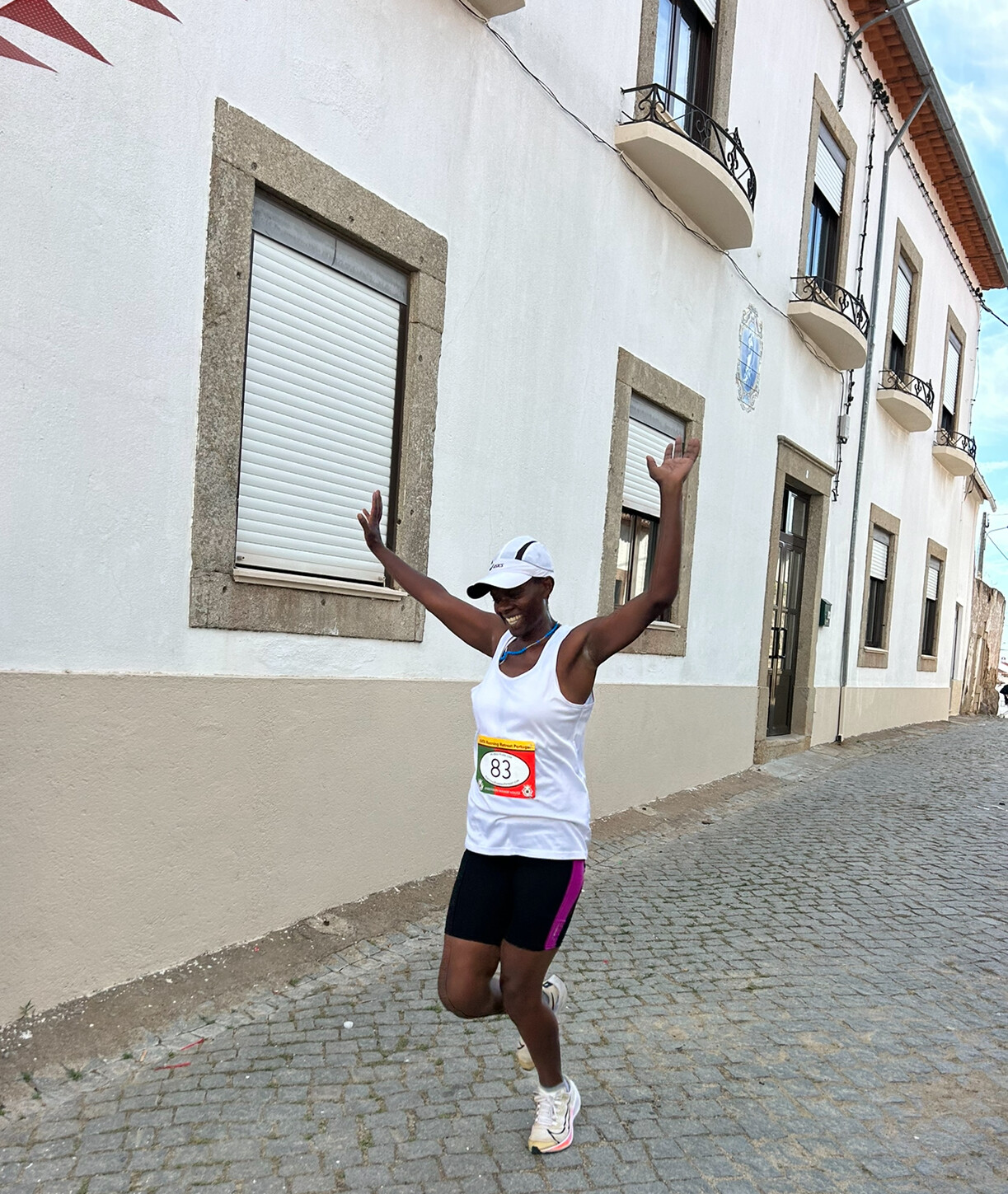
Both of the winners won a trophy, medal and 100 cash euros. There was no entry fee. Over 20 prizes were given out randomly and plenty of food and drink was provided.
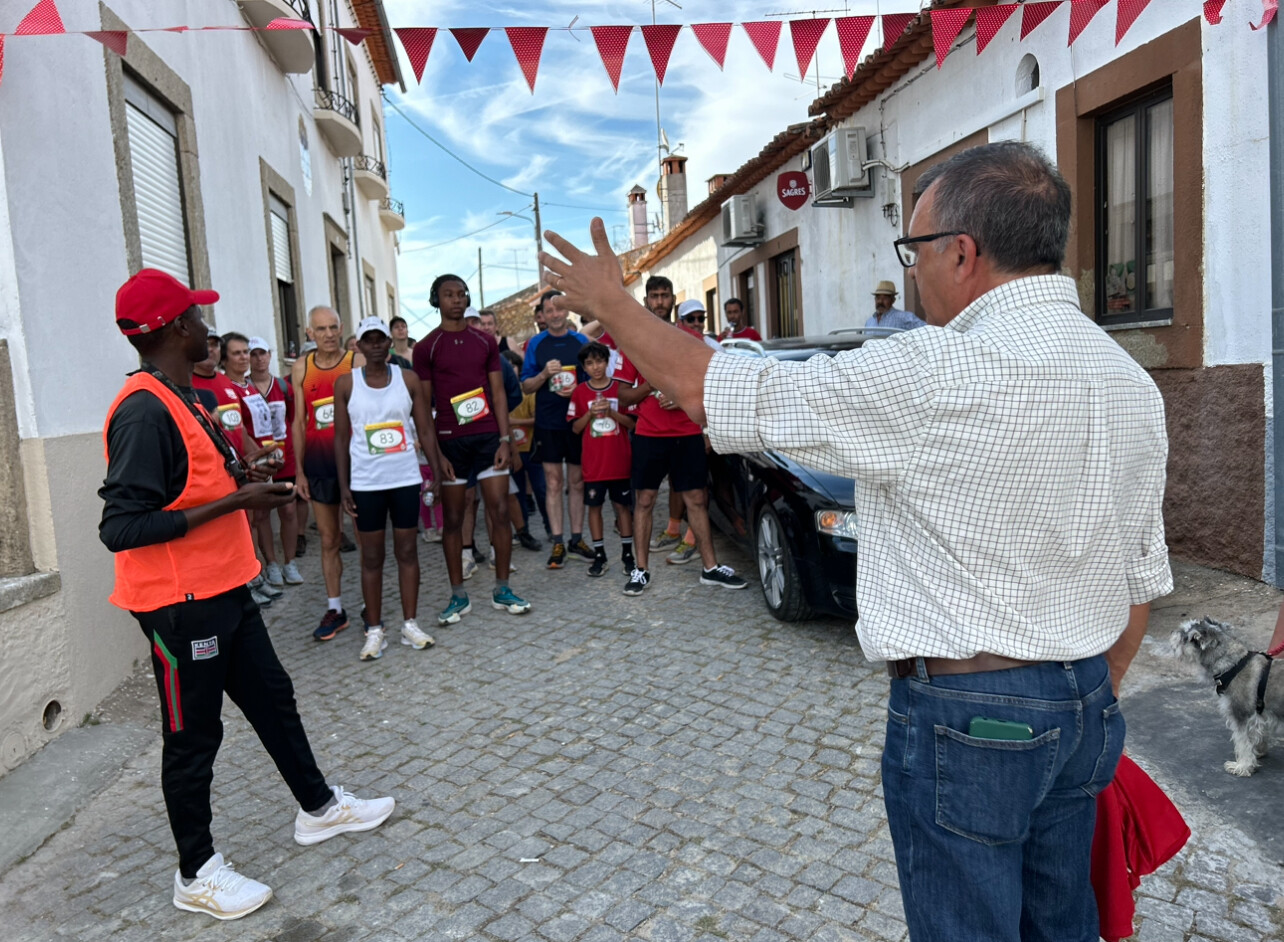
The president of the village was the official starter (see photo) after saying some opening remarks. Thanks to our sponsors who were organized by Joao Santos and to Alberto Santos who along with Joao have gotten our Manor in shape for this event. Both participated in the 5k.
“My wife and I (Catherine Cross) met so many nice people today. Welcome to our family. We are looking forward to stage many more races from our Anderson Manor Retreat,” says Bob Anderson.
—- (Portuguese translation)
A primeira corrida na nossa aldeia de MONFORTE DA BEIRA BAIXA foi um evento muito divertido. 101 participantes se inscreveram para nossa caminhada/corrida de 5 km. Fernando Duarte Matos, de Castelo Branco, 58 anos, foi o vencedor geral com 18:23, um tempo de classe mundial num percurso com algumas subidas. A primeira mulher foi a atleta da KATA (Academia de Treinamento de Atletismo do Quênia), Lucy Murita, marcando 22:17. O terceiro foi o convidado do Anderson Manor Retreat, Jonathan Suah, um americano que vive em Angola com cronometragem de 24h12. Em quarto lugar ficou um ingénuo da aldeia, Manuel João Brito Russo, com 27h04. Ambos os vencedores ganharam um troféu, uma medalha e 100 euros em dinheiro. Não houve taxa de entrada. Mais de 20 prêmios foram distribuídos aleatoriamente e muita comida e bebida foram fornecidas.
O presidente da aldeia foi o titular oficial depois de fazer alguns comentários iniciais. Obrigado aos nossos patrocinadores que foram organizados pelo João Santos e ao Alberto Santos que juntamente com o João prepararam o nosso Solar para este evento. Ambos participaram dos 5k. “Minha esposa e eu (Catherine Cross) conhecemos tantas pessoas legais hoje. Bem vindo a nossa familia. Estamos ansiosos para realizar muitas outras corridas em nosso Anderson Manor Retreat”, disse Bob Anderson
(06/23/2024) ⚡AMPby Bob Anderson
Team USA Track and Field Team for the Paris Olympics
Here’s who will be representing the U.S. in Paris—so far.
The Team USA track and field team will compete at this summer’s Olympic Games in Paris from August 1 to August 11. The first members were named on February 3 at the U.S. Olympic Marathon Trials in Orlando, Florida. The rest of the squad will be determined at the Olympic Track and Field Team Trials in Eugene, Oregon, which are taking place now until June 30.
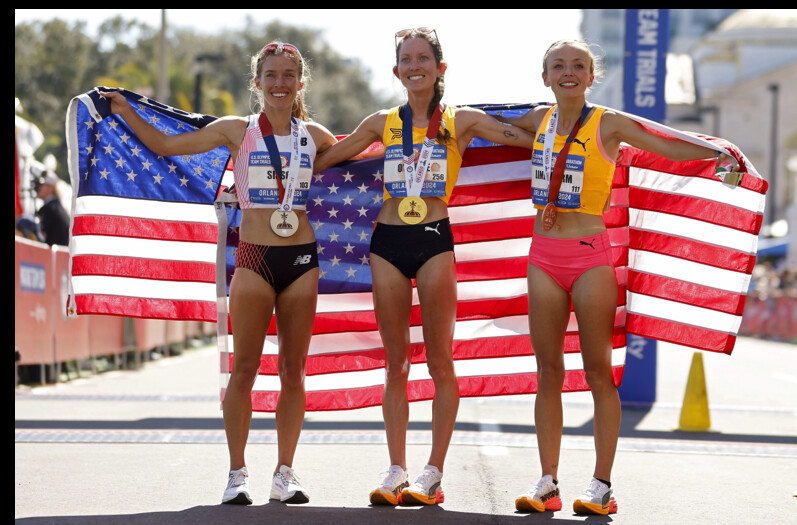
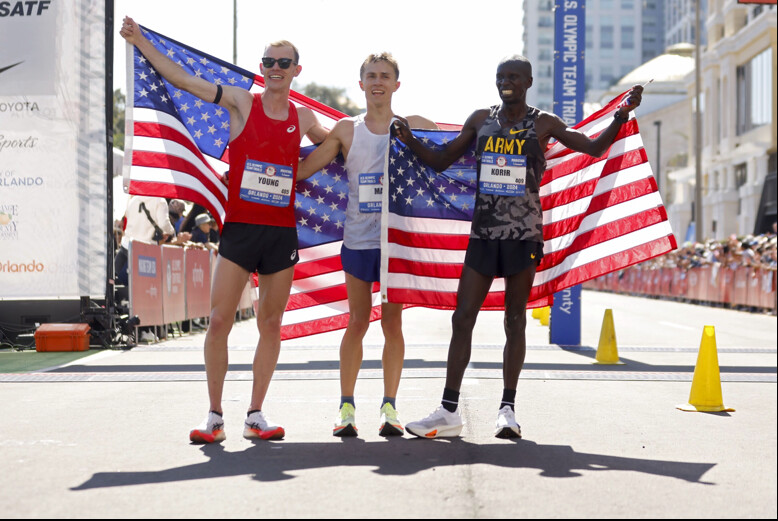
Here’s who has made Team USA—so far.
100 meters
Women’s team
Sha’Carri Richardson
24 | First place in 10.71 | First Olympics
Melissa Jefferson
23 | Second in 10.80 | First Olympics
Twanisha “TeeTee” Terry
25 | Third in 10.89 | First Olympics
Multi events
Men’s decathlon
Heath Baldwin
23 | First place with 8625 points | First Olympics
Zach Ziemek
31 | Second with 8516 points | Sixth at 2020 Olympics, seventh at 2016 Olympics
Harrison Williams
28 | Third with 8384 points | First Olympics
Shot put
Men’s team
Ryan Crouser
31 | First place in 22.84 meters | Olympic gold medalist in 2016 and 2020
Joe Kovacs
34 | Second in 22.43 meters | Olympic silver medalist in 2016 and 2020
Payton Otterdahl
28 | Third in 22.26 meters | 10th at 2020 Olympics
10,000 meters
Men’s Team
Grant Fisher
27 | First in 27:49.47 | 5th in 10,000 meters at 2020 Olympics
Woody Kincaid
31 | Second in 27:50.74 | 15th in 10,000 meters at 2020 Olympics
Nico Young
21 | Third in 27:52.40 | First Olympics
Marathon
Women’s Team
Fiona O’Keeffe
25 | First in 2:22:10 | First Olympics
Emily Sisson
32 | Second in 2:22:42 | 10th in 10,000 meters at 2020 Olympics
Dakotah Lindwurm
28 | Third in 2:25:31 | First Olympics
Men’s Team
Conner Mantz
27 | First in 2:09:05 | First Olympics
Clayton Young
30 | Second in 2:09:06 | First Olympics
Leonard Korir
37 | Third in 2:09:57 | 14th in 10,000 meters at 2016 Olympics
(06/23/2024) ⚡AMPMountain Running World Cup opens at Broken Arrow
The 2024 Valsir Mountain Running World Cup kicks off in style on Friday (21) at the Broken Arrow in Palisades Tahoe, California. The season launches with the Broken Arrow VK, a short uphill gold label race, and continues with the 23km Broken Arrow Skyrace, a long gold label race, on Sunday.
With a base elevation of 1890m and stunning peaks all around, including the prominent 2700m Washeshu Peak, Broken Arrow has the perfect credentials for mountain racing.

Many of the athletes from last year’s podiums return. In the women’s VK, last year’s winner Anna Gibson is back to defend her title. The 2023 runner up, Jade Belzberg, also returns, as do Annie Dube and Anna Mae Flynn, who finished fourth and fifth respectively last year. But they will face stiff competition in the form of Allie McLaughlin, the uphill champion at the World Mountain and Trail Running Championships in 2022, and Tabor Hemming.

The men’s VK is also looking incredibly competitive. Darren Thomas, second last year, is back, as is last year’s fifth-place finisher Abraham Hernandez Cruz. Joining them will be some big names, including 2023 World Cup winner Philemon Kiriago, Jim Walmsley, Eli Hemming and Christian Allen.
Many runners are contesting both the VK and the Skyrace, with a day in between to recover. Last year the Skyrace was severely affected by snow, but the snowline is not set to be as low this year.
Memorably McLaughlin battled with Gibson last year, taking the lead and stretching it out to win. McLaughlin is doing the double here, as are Tabor Hemming, who was third last year, and Dube. Janelle Lincks, fourth last year, also returns. Sophia Laukli, a breakout star in last year’s World Cup, also looks to be toeing the line and will be one to watch.
In the men’s Skyrace, defending champion Eli Hemming returns, along with the rest of last year’s podium, Chad Hall and Meikael Beaudoin-Rousseau. Allen, Kipngeno and Thomas will double up, which should make things interesting. To shake things up even further, former world champion Joe Gray is on the start list. Zak Hanna, who finished fourth in last year’s VK, is just taking on the Skyrace this year.
The VK on Friday starts on the valley floor and climbs its way up 914m over 4.8km to the summit of Washeshu Peak at 2708m. Despite some changes to the course this year, along the way it still takes in some brutally steep terrain, leading up to the iconic Headwall Ridge and the ‘stairway to heaven’ bolted ladder to the summit of Washeshu Peak. Runners will experience steep rock slabs, snow and scree, which is guaranteed to deliver an exciting race.
On Sunday the Broken Arrow Skyrace is held on a loop which climbs 1533m over the course of 23km. It starts in Palisades Tahoe Village and most of the race takes place above the tree line on technical and demanding trails. Runners will be treated to views of Granite Chief Wilderness and they will experience Emigrant Pass, KT-22 and, like the VK runners, the ‘stairway to heaven’ ladder to Washeshu Peak.
The Broken Arrow offers the first two of 12 races that form part of the Valsir Mountain Running World Cup in 2024. The season closes with the World Cup Final Val Bregaglia Trail on 13 October. There will be a livestream of the Broken Arrow action available on the event website.
(06/23/2024) ⚡AMP
How Many Carbs Are in Spring Energy, Really?
This fruit-based energy gel, once touted for its high-carb intake and low volume, contains about a third of calories than advertised, multiple independent nutritional analyses suggest
For the past 10 years, Spring Energy has provided endurance athletes with energy gels, and more recently drink mixes, made from “real” foods. Athletes looking for wholesome alternatives to more traditional sugar-based gels made in a lab have flocked to Spring’s smoothie-like gels made with fruit and basmati rice.
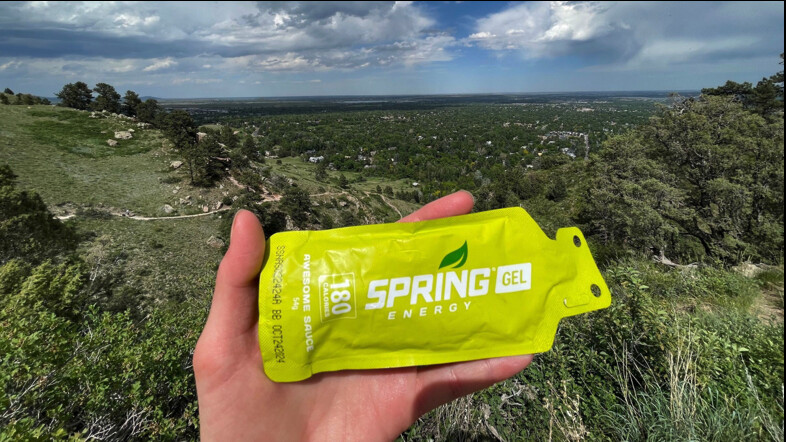
While Spring products are more expensive than many gels, many athletes have found the tradeoff for high-quality, real food fuel that goes down easily on the run to be worth it. Until now.
After skepticism about the actual contents of Spring’s gels began brewing late last year, it turned into a full-blown controversy this week.
In January 2021, Spring Energy released a game-changing gel, Awesome Sauce. In collaboration with coaches and runners Megan and David Roche (who taste-tested and named the flavor), the applesauce, basmati rice, and sweet potato-based gel was designed to provide endurance athletes with a whopping 180 calories per 54 gram packet.
This high-carb alternative became especially enticing when a study was published in April 2022 reporting that ultrarunners should consume 240 to 360 calories (60-90 grams of carbohydrates) per hour. It’s no surprise that Awesome Sauce (sold at $5 a gel), with its small but surprisingly mighty nutritional content, initially flew off the shelves. It seemed too good to be true.
After several third-party lab tests, that appears to be the case.
In late 2023, runners took to Reddit to discuss their doubts in Awesome Sauce’s nutritional facts, which were printed on the packaging and stated on Spring Energy’s website. Though it’s unclear who first performed a concrete test on the gel, two months ago, Liza Ershova, a Reddit user who uses the username “sriirachamayo”, posted in a thread called “False nutritional info on Spring Energy gels.” Ershova allegedly performed a test “in an environmental chemistry lab” and found that the dry weight of Awesome Sauce is 16g instead of the stated 45. She hypothesized that, “If all of those grams are carbs, that corresponds to about 60 calories, not 180.”
On May 17, German endurance sport speciality shop Sports Hunger released a video stating that they, too, had Awesome Sauce gels tested by a third party, and allegedly found that each packet contains 16g of carbs instead of the 45g that Spring Energy claimed.
“The maker of Spring Energy assures us that they will rework their manufacturing process to ensure that they will again reliably achieve their high numbers that they declare to have,” a Sports Hunger representative says in the video. “We hope that this is really going to happen because we believe that natural food for many of our customers is a great alternative to the regular gels.”
On May 28, ultrarunning coach Jason Koop, who coaches elite athletes sponsored by Spring Energy, posted an Instagram Reel saying that he’d paid for Spring Energy Awesome Sauce to be tested by a third party, RL Food Laboratory Testing in Ferndale, Washington. The results showed that the gels tested contained 76 calories and 18g of carbs. The lab results can be found on Koop’s website. Koop declined to be interviewed for this article.
Other runners have also come forward after attempting to replicate the gels with varying degrees of Awesome Sauce’s ingredients: organic basmati rice, organic apple sauce, apple juice, yams, maple syrup, lemon juice, vanilla, sea salt, and cinnamon—and could not achieve the gel’s original volume of 54g. Their experiments suggest that it’s impossible to fit all of those ingredients into the small Awesome Sauce package while achieving the stated nutritional content.
On May 22, the Ershova shared Spring Energy’s response to their experiment on Reddit: “Our analysis supports the accuracy of our product labeling. However, we will reevaluate to make sure our data is accurate. Although we hoped your experience with our products would have been wholly satisfactory, we recognize that individual needs can vary. Given the wide variety of options available across different brands, we are confident you will find the right product that suits your specific requirements.”
Four days later, on the Sunday of Memorial Day weekend, Spring Energy sent out an email to newsletter subscribers stating:
“In early May we submitted Awesome Sauce for third-party caloric and biomolecular analysis. Although the results indicated that on average our products deliver the designed nutrition value, we have recognized weaknesses in our processes and ingredients which can introduce unwanted variations in some batches.To mitigate those variations in our small batch production, we decided to modify some of the formulations, revise and innovate processes, and re-evaluate ingredient sources. These changes will bring higher quality and more consistency to our products. Enhancements of our products aimed to stabilize their nutrition values are on the horizon, and within the next few weeks, you’ll see the results of our efforts. A new and improved version of Awesome Sauce will soon be available.”
The internet outrage ballooned swiftly.
“‘On average’ – if someone has a beat on where I can grab packets of Awesome Sauce at 75g of carb per pack to allow for the average of their product to be 45g overall, hit my inbox,” @aidstationfireball posted on X. “Excited to taste the new, re-formulated, $7 gels they’ll replace these with.”
David and Megan Roche, the Boulder, Colorado-based running coach couple who collaborated with Spring Energy on Awesome Sauce, discussed the backlash on their podcast. They weren’t involved in the chemical composition and makeup of the gel, they claimed. Rather, they simply proposed the concept of a high-carb gel to their friend Rafal Nazarewicz, the founder and CEO of Spring Energy. They stated they understand the public’s outrage, and Megan added that they “didn’t really use it” during their runs because she didn’t feel that her body was responding to the energy it was supposed to provide.
In addition, the Roches stated on their podcast that they have quietly harbored concerns about Awesome Sauce for years, and while they did not explicitly tell their athletes not to use it, they made a point of promoting other gels instead. (The Roches currently have a financial partnership with The Feed, the online warehouse that sells a wide variety of sports fuel, including Spring Energy.)
David elaborated in a lengthy Instagram post on May 29: “It’s sad and infuriating that the nutrition was wrong, and we are thankful to the really smart people who figured it out on Reddit (including an athlete we coach who started the initial thread). When we described concerns to Spring, we were assured that the nutrition was correct and they followed all FDA regulations. We left the Spring sponsorship years ago, and we never received compensation for proposing the name/doing taste testing (outside of the $200 per month that we both received during the sponsorship). Since then, we have publicly directed athletes to other options for high-carb fueling, while hoping to be a source of love and support in the community. Our podcast covered our concerns as soon as the German lab testing indicated that we wouldn’t be risking making defamatory statements about a business without substantial evidence.”
While concerns around Awesome Sauce instigated this investigation, it’s not the only flavor under scrutiny. Koop sent additional Spring Energy gels, Canaberry (named after professional ultrarunner Sage Canaday) and Hill Aid, to the lab for testing. The results indicated that both of these flavors also contain fewer calories than stated on their nutrition labels.
The lab results showed that the batch of Canaberry that was tested contains 10g of carbs (versus the stated 17g), and the Hill Aid sample contains 10g of carbs (versus the stated 20g).
Koop also paid for Gu Chocolate Outrage to be tested. The results were consistent with the nutrition facts. All three of these reports can also be found on Koop’s website.
These vast discrepancies between Spring Energy’s reported nutrition facts and the lab results raise the question: which gels can be trusted?
According to the U.S. Food and Drug Association (FDA), most running gels fall under the category of “dietary supplements”, which don’t have to be approved before being sold. However, the FDA requires that all dietary supplements have nutrition information clearly marked on a product’s packaging (including serving size, number of servings, and ingredients) and periodically inspects manufacturing facilities to confirm that products meet the labeling requirements. The FDA also reviews product labels for accuracy.
“Dietary supplements are regulated by the FDA, but much of our role begins after products enter the marketplace. In fact, in many cases, companies can produce and sell dietary supplements without even notifying the FDA,” the FDA states on their website.
The FDA allows nutrition labels to have an inaccuracy margin of up to 20 percent—for reference, based on multiple lab results, Awesome Sauce’s caloric content is about 57 percent less than what the label says.
Sports psychologist and ultrarunning coach Krista Austin works with some of the top endurance athletes in the world, and is best known for training Meb Keflezighi to his 2009 New York City Marathon win. She recommends several products out on the market to her ultrarunner athletes, as well as suggestions that might work with a person’s individual plan. Typically, she suggests that athletes rotate gel flavors to avoid flavor fatigue, which can impact an athlete mentally and derail performance. So if a certain brand is proven to work well for an athlete, she says, use a variety of flavors.
“I usually use high molecular weight carbohydrates, but the thing is, they’re not as sweet as other sports nutrition products out there,” says Austin, who owns a consulting business providing sport performance services to Olympic and professional athletes as well as military and industry personnel. “So what we’ll do is we might throw in another gel like the Awesome Sauce to help give them that sweet component. It’s just in their arsenal.”
She says, in general, her athletes who have consumed Awesome Sauce have had positive experiences, but that because these gels were just one part of the fuel plan, that muddies the waters a bit. In addition, the potential lower calorie count of this gel may make it easier to digest. However, Austin recalls that one of her clients was taking in one Spring Energy gel (multiple flavors) every hour in her ultra, but found herself so hungry that she needed to eat a lot of the food provided at aid stations on the course, too.
“She was a smaller ultrarunner, and I thought it was interesting that she was taking in all these calories,” Austin says. “She was using Spring Energy gels, and I now I’m thinking, ‘Maybe this is why she needed all the additional food on the course, too, because she wasn’t getting what we thought she was.’”
Ultramarathon dietician Julie Shobe is surprised and disappointed in the news about Awesome Sauce. “My clients and myself bank on the efficiency of the gel being easy and light to carry,” she says. “Underfueling within a long run can create acute symptoms like low energy, nausea, or brain fog. Ultrarunners find themselves in dangerous situations on long runs and races, and are often in remote areas, so unintentionally underfueling could have negative consequences.”
Austin says runners can still rely on information they’re receiving about endurance fuel, but that it’s always possible there are, as Spring Energy suggests, bad batches. She’s leaning toward this being the reason for the nutritional inaccuracies (keeping an open mind that more information can come out) because she’s had experiences with bad batches of gels in the past, where the product tasted off and she brought it to the attention of the brand, who confirmed it was an error on their part.
By May 30, Spring Energy had removed Awesome Sauce from its website, although it can still be purchased in the All Inclusive and Vegan Spring sampler packs. There, Awesome Sauce is described as, “our best-seller, has been created for all carb lovers who want to fuel in a healthy way, with wholesome products free of added sugars!”
Nashville Running Company owner Lee Wilson has made the decision to take Awesome Sauce, Canaberry, and Hill Aid off store shelves. “It came down to the integrity of it,” Wilson says. “After the other flavors came out with the test results, we decided we can’t sell it.”
Nashville Running Company crew member Eric May added that this whole ordeal is disappointing, especially because the gel was so popular in the community.
“We used to have people come in when we got shipments and walk out with boxes of them,” May says. “It’s a bummer.”
He adds that a few customers have remarked that they still really enjoy Awesome Sauce and will keep using it.
“How a company reacts to the issue tells you a lot about them, and the fact that they’ve taken down their product, it means they’re probably doing their homework to see what’s going on,” Austin says. “I would say, give them a chance to rectify the situation.”
Sabrina Stanley, a pro ultrarunner from Silverton, Colorado, has used Awesome Sauce frequently in the past, but says she stopped eating it when she felt she was taking in three times what she should be consuming to keep hunger at bay. She adds that though it’s a huge disappointment that athletes thought they were buying a gel under the impression it was a different product, the company is the only party at fault.
“Professional athletes aren’t responsible for making sure the nutrition label is correct,” Stanley says. “They are often sub-contracted to give opinions and help promote a product in hopes of making a few extra dollar to continue doing what they love. They aren’t in the lab developing the product and writing the nutrition label, like the consumers, they are trusting the hired them to do their due diligence.”
On May 29, Spring Energy released an official statement on its Instagram, with Nazarewicz saying they’ve identified weaknesses in the manufacturing process, and that only some batches were accidentally made with varying nutritional values. Nazarewicz apologized and stated Spring Energy is introducing changes to its process and hopes to continue its mission toward making real food performance products.
“Spring Energy has admitted to inconsistencies in their product and also said in a recent IG post this was not intentional or malicious,” Shobe says. “However, to be this far off from your stated nutrition label deserves some major inspection. The whole thing made me question not only the integrity of their products but the nutritional labels of other products. Why, as a dietician, didn’t I become more suspicious of Awesome Sauce in the first place?”
(06/22/2024) ⚡AMPby Outside Online
After Double Knee Surgery, This Runner is Poised to Make Team USA for the Paris Olympics
Val Constien has surmounted obstacles along every step of her career—including a devastating knee injury just 13 months ago. Now the 28-year-old is a favorite to make her second Olympic team in the 3,000-meter steeplechase heading into the U.S. Track and Field Olympic Trials.
Val Constien started 2023 in the best shape of her life. She had been an Olympian in the 3,000-meter steeplechase at the Tokyo Olympics. And yet, she had no professional sponsorships.
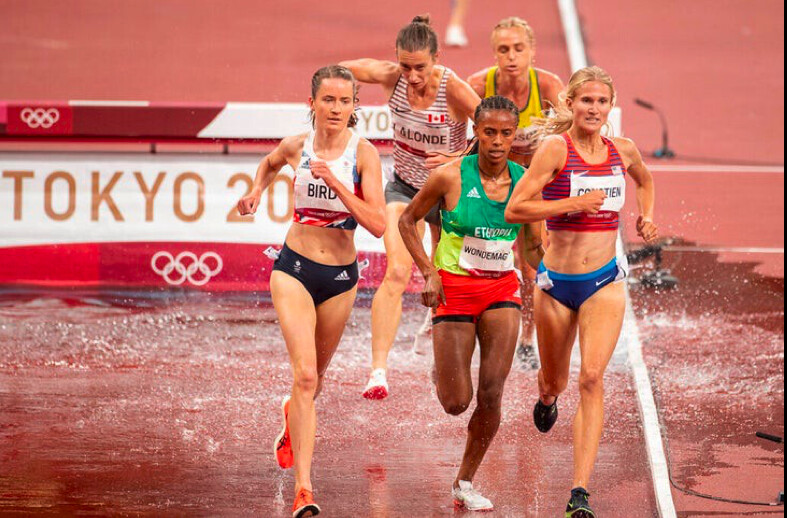
Constien, then 26, had spent the several years after graduating from the University of Colorado in 2019 continuing to train for the steeplechase under her college coaches while working a full-time job mostly because she loved it, and partly because she was betting on herself that she could continue to progress to a higher level.
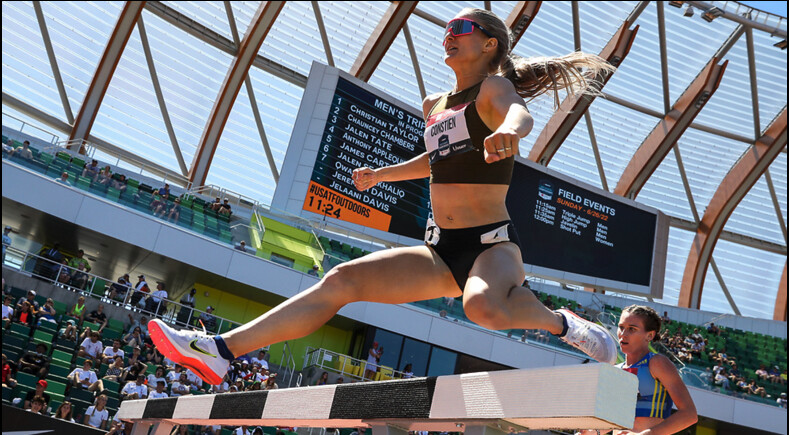
While studying environmental engineering at CU, Constien twice earned All-American honors in the steeplechase and helped the Buffaloes win a NCAA Division I national championship in cross country. She then finished 12th in the steeplechase at the Tokyo Olympics in 2021. And yet the Boulder, Colorado-based runner hadn’t been able to attract a sponsorship deal from a shoe and apparel brand. She squeezed her workouts in before work, paid for her travel to races, and remained determined and hopeful.
But then, after winning a U.S. indoor title in the flat 3,000 meters in early 2023, she caught the attention of Nike, which signed her to a deal that would lead into the 2024 Olympic year. Finally, it was the break she’d be hoping for.
However, less than three weeks after signing the contract, while running the steeplechase in a high-level Diamond League meet in Doha, Qatar, Constien landed awkwardly on her right leg early in the race and immediately knew something was wrong. She could be seen visibly mouthing “Oh no!” on the livestream, as she hobbled to the side of the track out of the race.
It was a worst case scenario: a torn ACL in her right knee. That meant surgery and a long road back to running fast again.
“That was awful,” said Kyle Lewis, her boyfriend who was watching the race online from Boulder. “The doctors over there initially told her they thought it was a sprain, but she came home and two days later she got an MRI and found out that it was a completely torn ACL, and she was obviously very upset. That was only a couple of weeks after she signed the Nike deal. But that’s just kind of been like with Val’s whole career. Nothing has ever come easy to that girl.”
How Constien, now 28, returned to top form a year later to become one of the top contenders to make Team USA in the steeplechase heading into the June 21-30 U.S. Olympic Trials in Eugene, Oregon—her preliminary race on June 24 will be only 398 days after her knee was surgically repaired—is a testament to the grit and confidence Constien possesses.
“It’s all just an extension of how tough I am and how willing I am to make hard decisions, and how badly I want it,” Constien said. “I love running. If I didn’t love running this much, I would’ve quit a long time ago.”
Constien had surgery last May 2023 at the Steadman Clinic in Vail, Colorado, not far from where she grew up. But that also presented a challenging twist.
One of the most popular types of ACL reconstructions for athletes is called a patella tendon graft, in which the doctor cuts off pieces of bone from the patient’s tibia and patella and several strands of the patella tendon and uses those materials to replace the ACL. Usually those grafts are harvested from the same injured leg, but doctors determined Constien’s right patella had a bone bruise on it and wasn’t healthy enough to use. So instead, they grafted the replacement materials from her left leg. That meant undergoing surgery on both legs, rendering her recovery even more difficult.
For the first two weeks after surgery, she couldn’t stand up or sit down on her own. She had trouble moving around and even had to sit down to take a shower. It took a full month until she started to get comfortable enough to go on short, easy walks and start to regain her mobility.
“The first month post-op was really devastating,” she said. “I was in a lot of pain, and it was hot and I was uncomfortable. I’m glad he did it the way he did it, but it was a really, really challenging recovery.”
All the while, though, Constien never stopped thinking about getting back to racing and the prospect of what 2024 might hold. That’s what helped her make a huge mental shift two weeks after the surgery and refocus all of her energy into returning to peak form and chasing another Olympic berth.
That was obviously easier said than done, but Constien has grown used to working hard and battling adversity. Her college career had been disrupted by injuries and slow progress. She was overlooked by brands when she got out of school in 2019 and again in 2021 after she slashed 7 seconds off her personal best time to finish third at the U.S. Olympic Trials and earn a spot in the Tokyo Olympics. And after she ran two strong races in Tokyo—the first international races of her career—to make it to the final and place 12th overall.
Even when she’s been overlooked or discounted, Constien has always believed in her potential. And that’s why, after a year of hyper-focused dedication, she’s on the brink of making it back onto Team USA to compete in this summer’s Paris Olympics.
“I’ve told her many times, no matter what happens after this point, what a comeback it’s already been,” Lewis said. “But what’s amazing about her is that, after that initial rough part, when she wasn’t able to walk, she just did an incredible job of compartmentalizing and being focused. I never saw her get sad or upset. She was always just super clinical about everything and really happy. It’s been incredible to watch.”
All last summer and fall, she continued building strength and began rejuvenating her aerobic strength—running more miles, getting stronger and getting faster. And that was amid working full-time doing quality assurance work for Stryd, a Boulder-based company that makes a wearable device to monitor running power and gait metrics. Heather Burroughs and Mark Wetmore, who have coached Constien since 2014, knew she had made considerable progress. But it wasn’t until early February that they began to realize the magnitude of her comeback.
“There was a point this winter, when she wasn’t running races, yet but she had some workouts that impressed me,” Burroughs said. “I wasn’t really worried about her ability to get fit enough the last four months, but it was whether her knee could handle the steeple work, especially the water jump.”
They never discussed that—because there was no point—and Constien went boldly into the outdoor season with her goal of breaking the 9:41.00 Olympic Trials qualifying standard. She started training outdoors in March and started her season by running a strong 1500-meter race on April 12 near Los Angeles (she won her heat in 4:12.27). But it wasn’t until May 11—roughly a year after she blew out her knee in Doha—that she ran her first steeple race.
At the Sound Running Track Fest, she ran patiently (with a smile on her face most of the way) just off the lead for the seven-and-a-half-lap race. She then unleashed an explosive closing kick to outrun Kaylee Mitchell down the homestretch and win in 9:27.22—securing her place in the Olympic Trials. That got her an invitation to the Prefontaine Classic, an international Diamond League meet on May 25 in Eugene, where she ran the best race of her life and finished fifth—and first American—in a new personal best of 9:14.29.
That put Constien at No. 7 on the all-time U.S. list. But more importantly, Constien closed hard after Uganda’s Peruth Chemutai had split the field apart en route to a world-leading 8:55.09, the sixth-fastest time in history.
“I’m more impressed by her comeback than she is, and it’s because I think she expected it,” Burroughs said. “It’s not that I didn’t expect it, but it was still improbable. But even now that she’s come back, she’s not impressed with herself at all. After the Prefontaine meet, I texted her about the race, and I got a five-word response—‘Let’s get back to work’—just very businesslike. She’s just dialed in and, to me, that says, ‘My big goal is yet to come.’”
For the last decade-plus, Emma Coburn and Courtney Freirichs have dominated the U.S. women’s steeplechase. They both suffered season-ending injuries this spring (broken ankle and torn ACL, respectively). Their absence leaves the event wide open for the likes of Constein, who is ranked second, and Krissy Gear, who enters the meet at the top seed (9:12.81) and as the defending national champion. But rising stars Courtney Wayment (9:14.48), Olivia Markezich (9:17:36), Gabrielle Jennings (9:18:03), and Kaylee Mitchell (9:21.00) are among several fast, young runners eager to battle for a spot on the Olympic team.
Constien knows she has two just goals to execute: run smart and fast enough to qualify for the finals on June 27, and then do whatever it takes to finish among the top three in that race.
Burroughs believes she’s as fit and as strong as she’s ever been, much improved since 2022, when she finished a disappointing eighth at the U.S. championships (9:42.96) while recovering from Covid. In fact, she’s even much better than her breakout year in 2021.
Over the past several weeks in Boulder, Constien has sharpened her fitness, including a final tuneup on June 12: a robust tempo run on the track with two hurdles per lap, which was preceded and followed by several fast 200-meter repeats. She’s also sharpened her perspective.
“There were definitely some dark times where I doubted myself and I doubted the process,” Constien said. “But I kind of just had to lock those thoughts away and just try to focus on the positive. And it’s really paid off.
“I never gave up when I didn’t have a sponsor and had to figure it all out on my own,” she added. “So tearing my ACL, yeah, that really sucks. That was really, really hard. But a part of me was like, ‘I’ve already done the hardest thing ever’ just by staying in the sport on my own. I look at it like, ‘I am the toughest person out here regardless of that ACL.’”
(06/22/2024) ⚡AMPReasons to Love Running in New York City
This highly-runnable city has a variety of events, routes, and resources that draw in an active community of runnersThere’s no place like New York City, especially if you’re a runner. Whether you’ve raced multiple marathons or you prefer a mellower pace, you’ll always have a new route to explore, a run club to meet up with, or an event to sign up for.
“Any kind of running experience you want to have, you can have here,” says Dave Hashim, a New York City–based photographer who recently completed the Perimeter Project, where he ran around the borders of all five boroughs.


For Caitlin Papageorge, president of North Brooklyn Runners, part of the city’s love affair with running stems from the way its citizens normally get around.
“New York is such a pedestrian city,” she says. “I think for that very reason, it sets New York up really well for a great running scene.”Ready to experience what New York has to offer? Here’s your quickest path to connection with the city’s broad and diverse running community.
Central Park: No trip to New York is complete without a jog through Central Park. Hashim recommends following the main paved path for a seven-mile loop, but make sure to lap the Harlem Meer, in the park’s northeast corner—it’s an often overlooked but especially beautiful area.
Hudson River Greenway: Stretching 12.5 miles from Battery Park all the way up to Inwood Hill Park at the northern tip of Manhattan, the Hudson River Greenway offers superb views of the Hudson River and nearby parks all along its length.
Roosevelt Island: Get off the beaten path with a four-mile run around Roosevelt Island in the East River. Both Hashim and Papageorge recommend it for its quiet atmosphere (there’s very little traffic), interesting architecture (like an abandoned smallpox hospital), and panoramic vistas of the Manhattan skyline.
McCarren Park Track: Brooklyn’s McCarren Park is a popular spot for runners thanks to its public track. Head here for a sprint workout or a warm-up lap before a longer run—just keep an eye out for obstacles like wayward soccer balls or the occasional ice cream cart cruising around in lane one.New Balance 5th Avenue Mile: The 5th Avenue Mile proves that short distances can attract stiff competition. Elite sprinters battle here each year, and the course itself is a star: Competitors race from 80th Street to 60th Street, passing distinguished institutions like the Frick Collection art museum.
United Airlines NYC Half: This 13.1-mile spring classic has become a destination race for good reason, providing a scenic tour of two boroughs packed with iconic landmarks. Join 25,000 racers on closed NYC streets, from a Brooklyn start, across the Manhattan Bridge, heading up through Times Square, to a home stretch in Central Park.
Al Gordon 4-Miler: This race takes place in Prospect Park, Brooklyn’s answer to Central Park, and honors Al Gordon, a New Yorker who began running marathons in his 80s. While the distance is short, the course showcases the park’s beautiful scenery and includes some hilly terrain for an extra challenge. “I just love being there,” says Papageorge. “It’s underrated.”No More Lonely Runs: Looking for someone to run with? Take a tip from Mallory Kilmer, a seasoned marathoner who started this club to help runners of all experience levels find community in the sport. The beginner-friendly groups gather every Saturday morning.
Endorphins: This nationwide running group has a strong presence in New York City. While the group runs every Monday are a big draw, joining Endorphins also gets you access to online resources like Q&As with running coaches and physical therapists.
Asian Trail Mix: This club’s mission is twofold: Increase AAPI representation in running and get New Yorkers onto the dirt. If you’re itching for trails, join one of the club’s all-are-welcome group runs, which explore the wealth of wilderness areas just a short train ride outside the city.
Front Runners New York: Front Runners is where New York’s LGBTQ+ and running communities overlap, and the group creates a positive, inclusive atmosphere at its weekly Fun Runs. If you become a member, you can also join the group’s coached workouts and triathlon training sessions.
Almost Friday Run Club: Why not start the weekend a little early? Almost Friday is the group to do it with: this friendly club meets every Thursday morning on the Hudson River Greenway for a chill run by the water. It’s the perfect midweek pick-me-up.
New Balance Upper West Side: New Balance’s Upper West Side location—just a few strides from Central Park—will be your go-to spot for running shoes, gear, and advice. Key highlight: The store is equipped with a 3D foot scanner to help you get the perfect fit in your next pair of shoes.
(06/22/2024) ⚡AMPby Outside Online
Zac Clark is a real runner and has run a 1:32 half marathon
Grandma's Marathon is just hours away! If you are running any of the races, you are likely feeling a few nerves right about now. You are definitely not alone in that.
Here's some excitement to take your mind off it: a reality star is flying in to Minnesota to take part in the race and taking part in the full marathon!
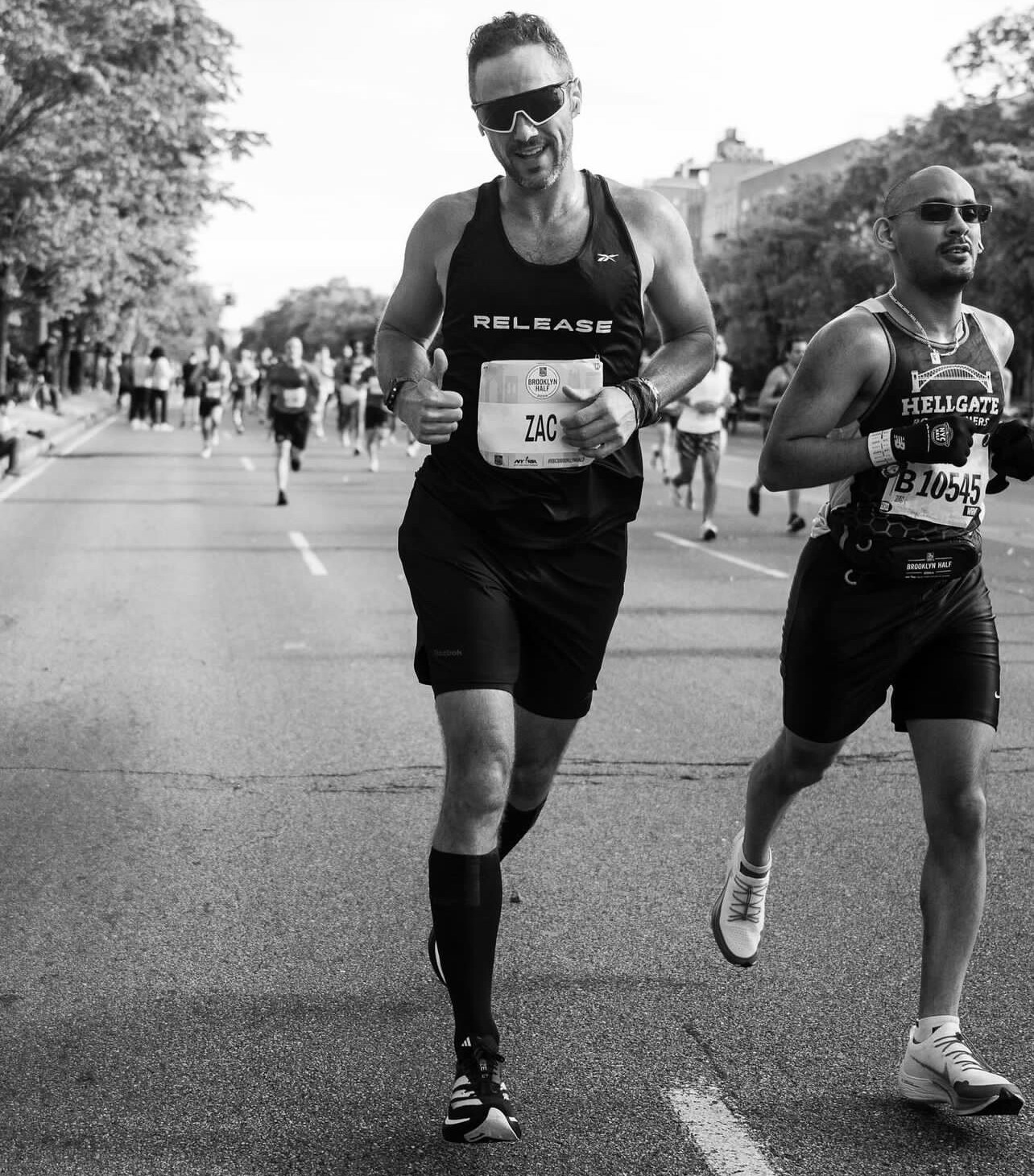
Zac Clark Got The Final Rose
Lovers of 'The Bachelor' franchise will recognize this star! Zac was the winner of The Bachelorette a few seasons back.
A few months ago, I noticed that Zac was posting a lot of videos about running and even mentioned Grandma's Marathon in one of his posts! He shared he'd be running the race, and he is a very serious runner.
On Thursday afternoon (June 20th), Zac posted another video relating to the big race, sharing his stats, his goal time and how he is feeling about the big race right now.
(06/21/2024) ⚡AMPWhich U.S marathon provides the most prize money to the winner? Here are the top seven
Which U.S marathon provides the most prize money to the winner? This question continuously rings in the minds of some youngsters who dream about running and getting the best time in some of these world events or even breaking records. Just like any other sport, races also offer the best prizes to the winners. Running challenges you with self-control and persistence besides the cash injections provided to the top athletes. Here is a ranked list of 7 U.S marathons with the highest prize money, sourced from factual publications.
Which U.S marathon provides the most prize money to the winner?
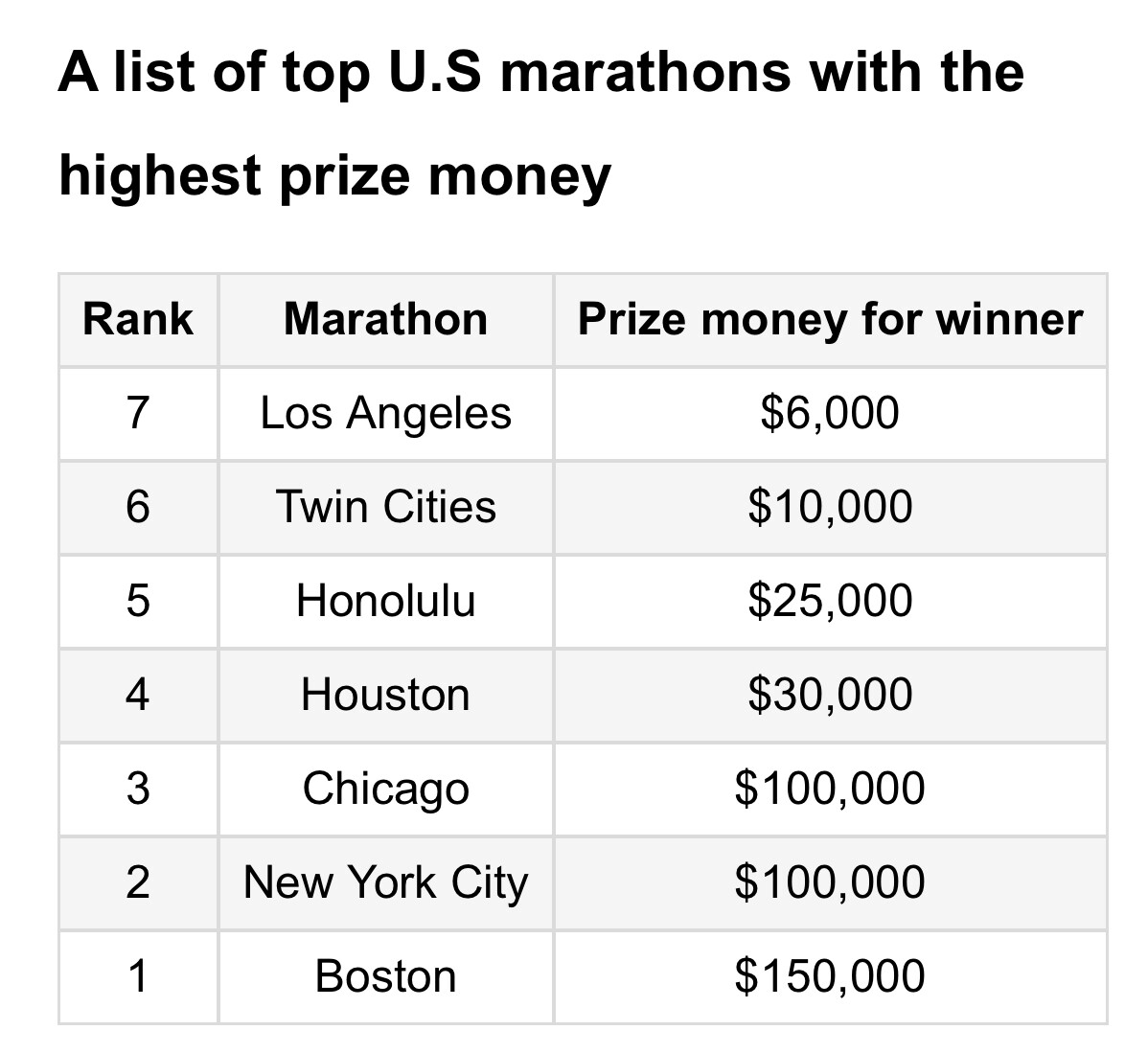
According to RunRepeat, the highest prize money offering in the United States is the Boston Marathon, which we will explore in-depth in this article. Nevertheless, every year, the country is flooded with innumerable races, most of which gather teams of participants. Most dared to break their personal while others also won the races.
(06/21/2024) ⚡AMPby Kenneth Mwenda
There might have been cheaters at the Comrades Marathon
An investigation into allegations of cheating at the recent Comrades Marathon is underway, the race organisers have announced.
The Comrades Marathon Association (CMA) had underlined in the build-up to the 2024 event which took place on 9 June, that there would be a zero-tolerance approach towards cheating.

Before the event, over 50 runners were prevented from taking part due to fraudulent entry submissions, some of which involved getting others to achieve the required qualifying time.
The 86km ultramarathon alternates from an ‘up’ route from Durban to Pietermaritzburg – as it was this year – to a ‘down’ version in reverse.
Known as the ‘Ultimate Human Race’, it is hugely popular, with hundreds of thousands of spectators lining the route, national TV coverage, high prestige and big prizemoney.

This year there were 18,884 starters – and 17,313 finishers.
Looking for ‘anomalies or inconsistencies’
But in a statement released on Thursday the CMA said: “The Office has received a number of tip-offs from concerned participants and spectators who have reported several instances of suspected cheating within the duration of the race.
“In addition, the CMA has continued to receive information from athletes and clubs regarding the submission of fraudulent qualifying information.
Ann Ashworth, the CMA Race & Operations Manager, stated that while she is aware of various social media posts allegedly exposing several athletes of cheating at the event, the CMA has yet to communicate the full and final results of its investigations to KwaZulu-Natal Athletics and has not yet publicly identified those athletes whom it suspects of cheating.
The statement continued: “We are currently working through the full set of electronic results provided to us by FinishTime with a view to identifying any anomalies or inconsistencies within the results.
“Our Office is also working through data which suggests that several athletes missed the non-disclosed (or secret) timing points along the route, the purpose of which was to identify runners who engaged in course cutting. All inconsistencies will then be compared to any photographic evidence available.”
Issue with first timing point
Ashworth has also indicated that the CMA is aware of a problem which occurred at the first timing point (at approximately 5km) and assures athletes that the absence of a timing reading at this particular point is not necessarily indicative of course cutting.
The statement concluded: “The CMA hopes to conclude its investigations over the next few days after which the names of all race day cheats will be provided to KwaZulu-Natal Athletics for disciplinary action.”
(06/20/2024) ⚡AMPComrades Marathon
Arguably the greatest ultra marathon in the world where athletes come from all over the world to combine muscle and mental strength to conquer the approx 90kilometers between the cities of Pietermaritzburg and Durban, the event owes its beginnings to the vision of one man, World War I veteran Vic Clapham. A soldier, a dreamer, who had campaigned in East...
more...Kids’ Athletics helps to make Kakuma Refugee Camp a home
What does home mean to you? Home can be a place, a sense of belonging or a feeling of happiness. For refugees at the Kakuma camp and Kalobeyei, home could easily be a Kids’ Athletics gathering.
On the early morning of 25 April, the Kalobeyei Sports Complex within the refugee settlement came alive, buzzing with athletics activities. A total of 125 young people from five schools took part in the Kids’ Athletics event, held as part of a four-day Kids’ Athletics workshop.
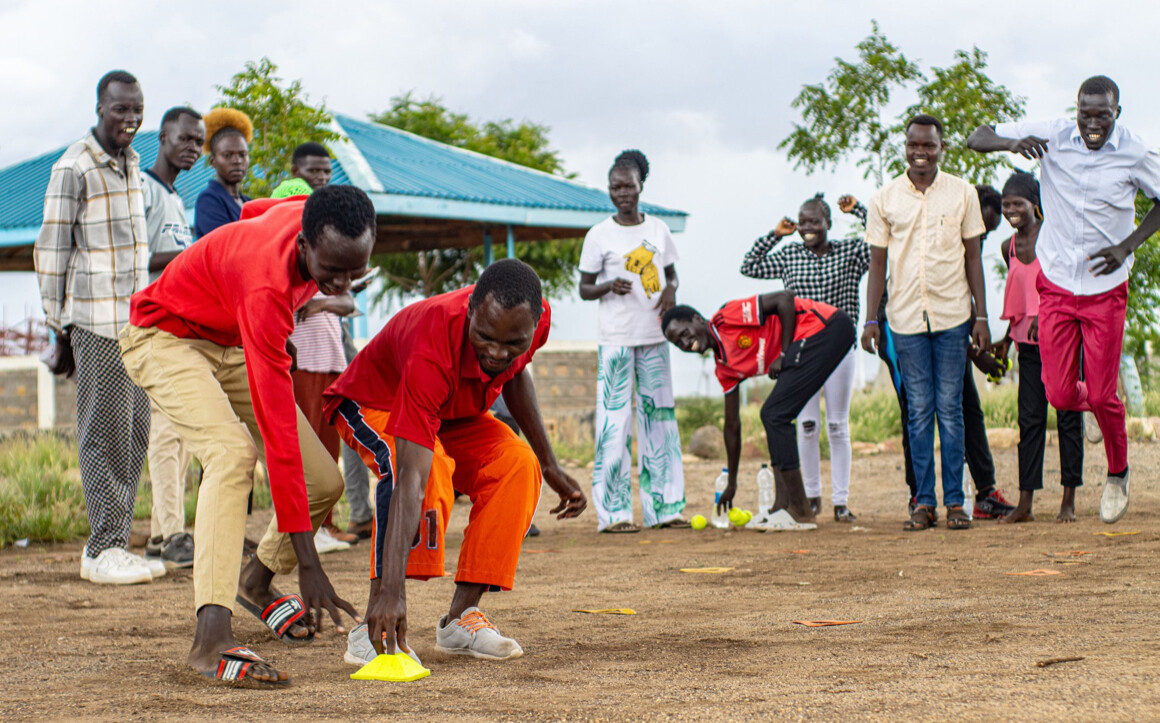
In collaboration with World Athletics, the workshop was held in Kakuma Refugee Camp and Kalobeyei integrated settlements in north-western Kenya as part of the larger Athletics and Education programme implemented by AHEEN (African Higher Education in Emergencies Network). AHEEN, a network of African institutions, aims to keep young people that are in refugee communities in school and education, informed by principles of physical, social, cognitive and emotional wellbeing and sports science. On board for the workshop were UNHCR and Youth Education and Sports (YES), a refugee-led organisation that supports the development of sport and education for young people in the refugee context. Based in Kakuma, YES is a member of the AHEEN network.
Following the workshop, 23 teachers from four refugee schools and one from the host community applied their learning and delivered a fun event for the children. They were assisted by the U20 Athlete Refugee Team, a team supported by World Athletics as part of the AHEEN Athletics & Education programme.
“As the most universally accessible sport, it is vital that we reach down to the grassroots level to children across the globe to get them inspired about athletics. This is especially true in reaching youth who are displaced or in difficult situations outside of their control. Our Kids’ Athletics programme is the perfect vehicle to enable this by providing the flexibility we need to work with communities like the Kakuma Refugee Camp,” said World Athletics President Sebastian Coe.
“Taking Kids’ Athletics to these settings means it becomes much more than a sport programme. With a holistic approach, it combines social, emotional and mental elements to promote a sense of wellbeing, and this is at the heart of our project in the Kakuma Refugee Camp. This is what Kids’ Athletics stands for.
“There can be no doubt as to the importance of Africa to our sport. The depth of athletics talent on the African continent is unparalleled. It is therefore our duty as the global governing body of athletics to implement programmes like Kids’ Athletics to ensure that every child – including those who find themselves in refugee camps such as Kakuma – is offered the same chance to reach the highest echelons of our sport.
“World Athletics will always promote our sport in Africa through grassroots outreach, the development of sporting infrastructure across the region, and the hosting of athletics events.”
Barbara Moser-Mercer is coordinator of AHEEN and designer of its Athletics & Education programme. She is also a visiting professor at the University of Nairobi.
“The community showed up in the stadium and there were many more kids who had wanted to participate. This bodes well for the future expansion of the programme,” she said, reflecting on the workshop and Kids’ Athletics event.
“Both the teachers/coaches and the kids demonstrated incredible engagement and showed us just how crucial sport is for wellbeing, especially in fragile refugee contexts. World Athletics and AHEEN collaborated on the delivery of the Kids’ Athletics workshop and made considerable effort to adapt the programme to the refugee context, ensuring that all the activities fit and met the needs of the local community.”
For Catherine O’Sullivan, Kids’ Athletics Senior Manager at World Athletics, the workshop reinforced the importance of the programme and the work that has been done during the past few years.
“It was heartwarming to see Kids’ Athletics being applied in this setting, bringing positive experiences and smiles to children and young people living in very challenging conditions,” she said.
At the end of the event, food was shared, certificates were awarded, plenty of photos were taken and celebrations were had. The four days impacted heavily on teachers, children and the communities they came from. Athletics brought a positive experience and smiles to children and young people living in extremely challenging conditions. Athletics made them feel at home.
(06/20/2024) ⚡AMPby World Athletics
A century since Nurmi set 1500m and 5000m world records in one evening
Paavo Nurmi was the first and Said Aouita is currently the last man to have held the 1500m and 5000m world records at the same time*.
When Aouita achieved the feat, in the European summer of 1985, there were 27 days between the Moroccan’s 13:00.40 clocking for the longer distance in Oslo and his 3:29.46 metric mile in Nice.

When Nurmi became the first to accomplish this rare world record double, in Helsinki 100 years ago, the interval was a mere 65 minutes and 35.6 seconds.
That was the precise gap between ‘Peerless Paavo’ crossing the finish line in the picturesque sylvan setting of the Elaintarha Zoological Gardens Sports Ground in the 1500m and then the 5000m on the momentous evening of 19 June 1924.
It’s a measure of how huge a phenomenon the enigmatic Nurmi happened to be.
It’s the distance running equivalent of Jesse Owens’ Day of Days, when the great man notched four world records – six, with metric equivalents – in the space of 45 minutes at Ann Arbor, Michigan, in 1935.
Olympic dress rehearsal
The gap between the start times of Nurmi’s two races at Elaintarha in 1924 was actually 55 minutes; the 1500m set off at 7:05pm and the 5000m at 8:00pm. This was to replicate the schedule for the finals of each event at the Olympic Games in Paris the following month.
Nurmi proceeded to emerge victorious from both events in the pressure cooker of Stade Colombes in Olympic record times. He then claimed three more golds, with individual and team cross country victories and success in the 3000m team race.
To coincide with the 2024 Olympics in the French capital and the centenary of the 1924 Games in Paris, with the assistance of World Athletics Heritage, Nurmi’s record Olympic track and field haul of five golds from a single Games is on display in an exhibition entitled D’or, d’argent, de bronze - une histoire de la medaille Olympique at the museum of the Monnaie de Paris on the left bank of the Seine.
The Phantom Finn
Meanwhile, the land of perhaps the most ardent track and field followers can celebrate the anniversary of the first of the supreme Flying Finn’s finest hours: Nurmi’s wondrous world record double amid the birch and pine trees of the Elaintarha Sports Ground.
At that time, six days past his 27th birthday, Nurmi had established himself as the planet’s preeminent distance runner, having assumed the mantle from his boyhood hero, Hannes Kolehmainen, who completed a hattrick of Olympic golds in 1912, at 5000m, 10,000m and cross country.
Whereas the affable Kolehmainen was regarded as the smiling Suomi star of the Stockholm Olympics, the taciturn Nurmi was seen as the unsmiling Finnish crown prince of distance running.
He had endured a tough upbringing in the south-west of the country, leaving school at the age of 12 after his father died to haul goods up the steep slope to Turku railway station as a delivery boy. He used the trams of Turku as his pacemakers, and walked and ran for hours in the surrounding forests.
“Nurmi was enigmatic, sphinx-like, a god in a cloud,” wrote Norman Harris and Ron Clarke in The Lonely Breed. “He was stern and silent, with uncompromising self-discipline and white-hot ambition, bearing the closest possible resemblance in athletics to Napoleon Bonaparte.”
By 1924, the ‘Phantom Finn,’ as the Greta Garbo of the track was dubbed by the press, had claimed three of his nine Olympic gold medals and set six of his 22 world records. At the 1920 Olympics in Antwerp, he succeeded Kolehmainen as 10,000m champion – his ageing idol stepping up in distance to win the marathon – and also won individual and team cross country golds.
“The injury was a bad thing”
When the punishing timetable for Paris was published, the Finnish athletics authorities chose the US-based Ville Ritola as their main man for the 10,000m and omitted Nurmi. The reigning champion requested a place but was asked to run behind Ritola for second place, to save himself for the 1500m and 5000m.
When Nurmi refused, he was offered a slot in the 800m instead. He declined that offer too.
Amid the controversy, Nurmi injured a knee when slipping on ice in a 7km cross country race. He had to rest for two weeks, then walk with his leg straight for several more weeks, pummelling away on a boxing punchbag to maintain some fitness.
Rumours spread that he might not be fit for Paris but, at his insistence, the 1500m and 5000m races were arranged with an hour of each other at Elaintarha. Nurmi wanted to show that he was ready for the mighty challenge in the French capital.
First came the 1500m. The world record stood at 3:54.7, set by Swede John Sander in 1917, though Nurmi had run quicker (3:53.0) en route to his mile record of 4:10.4 in Stockholm in 1923.
It was Nurmi’s want to burn off the opposition with a fast opening lap and he set off with a split of 57.3 on his way to an undisputed world record time of 3:52.6.
There were no signs of fatigue in the 5000m. Nurmi opened with a lap of 65.0 and closed with 62.7. His finishing time was 14:28.2 – a staggering 7.2 seconds inside the global mark he had set in Stockholm two years previously.
“He seemed to be venting anger stored up from the injury,” wrote Harris and Clarke, who knew a thing or two about world record breaking.
It was put to Nurmi that the injury had been a blessing in disguise, that the enforced rest had done him good. “No, not at all,” he angrily replied. “The injury was a bad thing.”
It was a bad thing for Nurmi’s rivals that he arrived in Paris fully recovered and fully firing. Nothing could stop the Phantom Finn from ghosting into the Olympic record books.
(06/20/2024) ⚡AMPby World Athletics
1964 Olympic 5000m champion Bob Schul has died
We are deeply saddened to hear that Bob Schul, USA’s 1964 Olympic 5000m gold medallist, died on Sunday (16) at the age of 86.
As well as his Olympic success, Schul set a world best for two miles and was a US record-holder for 5000m and three miles. He remains the only US runner to have won the Olympic 5000m title and was inducted into the USATF Hall of Fame in 1991.
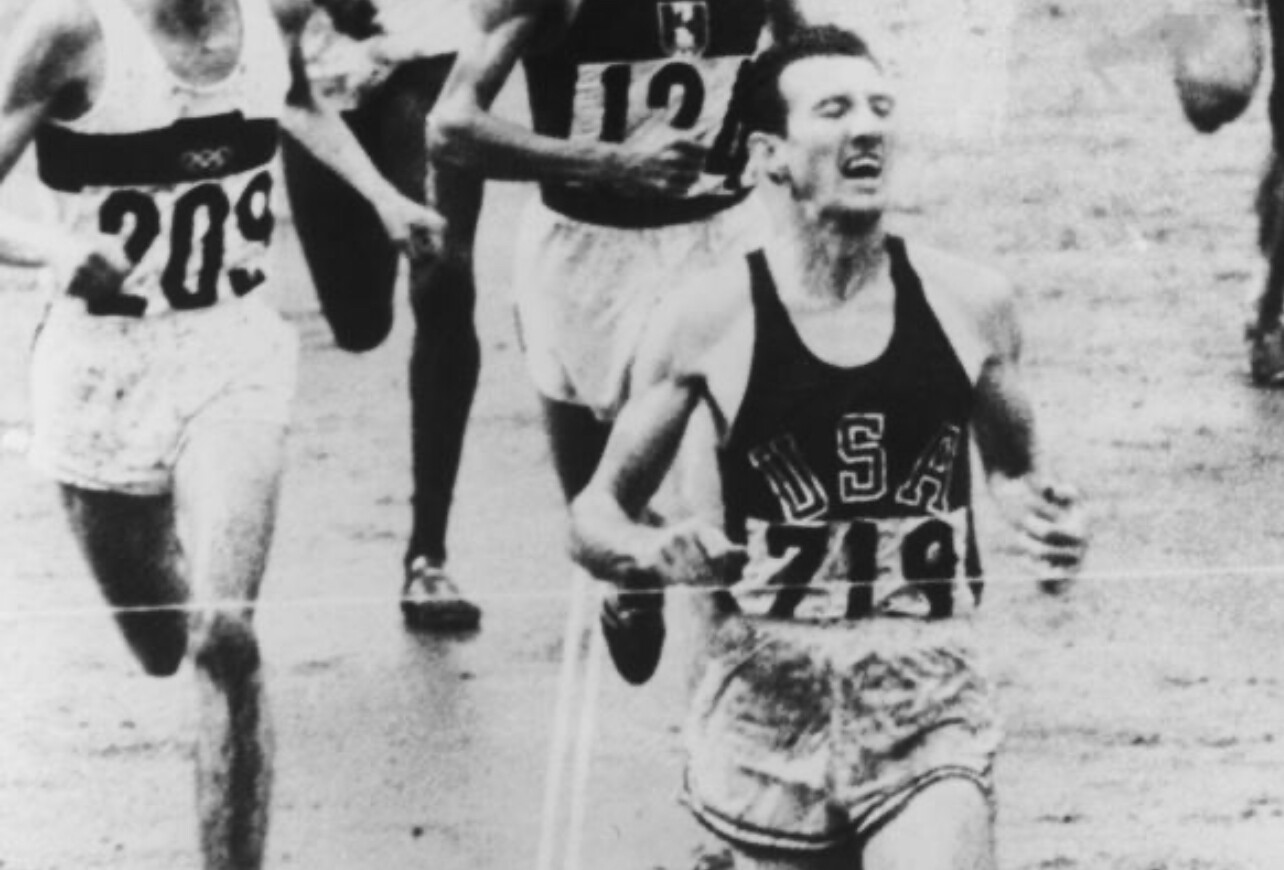
Schul was born in West Milton, Ohio, on 28 September 1937 and he took up running while at school. Despite his early career being impacted by an asthmatic condition, he went on to become a 4:34 high school miler and at collegiate level he ran for Miami University in Oxford, Ohio.
He then served in the US Air Force and was introduced to Hungarian coaching great Mihaly Igloi, who was last year honoured with a World Athletics Heritage Plaque.
He spent the next few years being coached by Igloi as part of the Los Angeles Track Club, which also featured athletes such as Laszlo Tabori, Jim Beatty, Jim Grelle and Max Truex.
Schul secured his first major medal in 1963, claiming 5000m bronze at the Pan American Games. The following year, he improved the US 5000m record by seven seconds to 13:38.0 and set a world best for two miles of 8:26.3.
His Olympic triumph came a couple of months later. Schul went into the 5000m final in Tokyo as the world leader and with a superb sprint finish he secured top spot there, too – getting gold in 13:48.8 ahead of Harald Norpoth of Germany and USA’s Bill Dellinger.
Schul had been in fifth place at the bell, with the race led by Michel Jazy of France. Schul was boxed in but found a gap with 300 metres to go. Despite racing on a rain-soaked cinder track, Schul ran 38.7 for that final 300 metres to take him to the title. He won by 0.8 seconds.
“What comes to mind is I was ready,” he told Karen Rosen during a 2019 interview for TeamUSA.org. “My workouts were fantastic. Nobody else did the workouts I did.”
Reflecting on the race in Tokyo, he added: “When we were in the last lap, coming around the turn, everybody was still there – there were probably 10 people. I got boxed in. I couldn’t get out, so I kept moving to the right a little bit, every step I took, and I forced the guys to go wider.
“Finally, I was free, but Jazy was way out there.”
In the end, Jazy – nor any of his other competitors – could respond to Schul’s ferocious kick.
In 1965 Schul set another US record, clocking 13:10.4 for three miles, but then a knee injury took its toll.
Following his own competitive career, Schul went into coaching and continued to run in masters events.
(06/19/2024) ⚡AMPby World Athletics
Inaugural Olympic mass marathon reveals stylish finisher medals
For the first time in Olympic history, the host city, Paris, is hosting a mass participation marathon on the evening of Aug. 10, the eve of the women’s Olympic marathon. On Wednesday, the finisher medals for the Marathon Pour Tous (Marathon For All) were unveiled, and they are stunning.
The Marathon Pour Tous (Marathon For All) medal features the official Paris 2024 Games logo on the front, along with the logo of the race sponsor, Orange Telecommunications, with the date of the race (10.08.24) engraved on the bottom. The back side of the medal has a maze-like design of the numbers 42 and 24, representing the marathon distance and the 2024 Paris Olympics, with “finisher” engraved at the bottom. Each medal weighs 150 grams, and measures 85 mm in length and 77 mm in width.
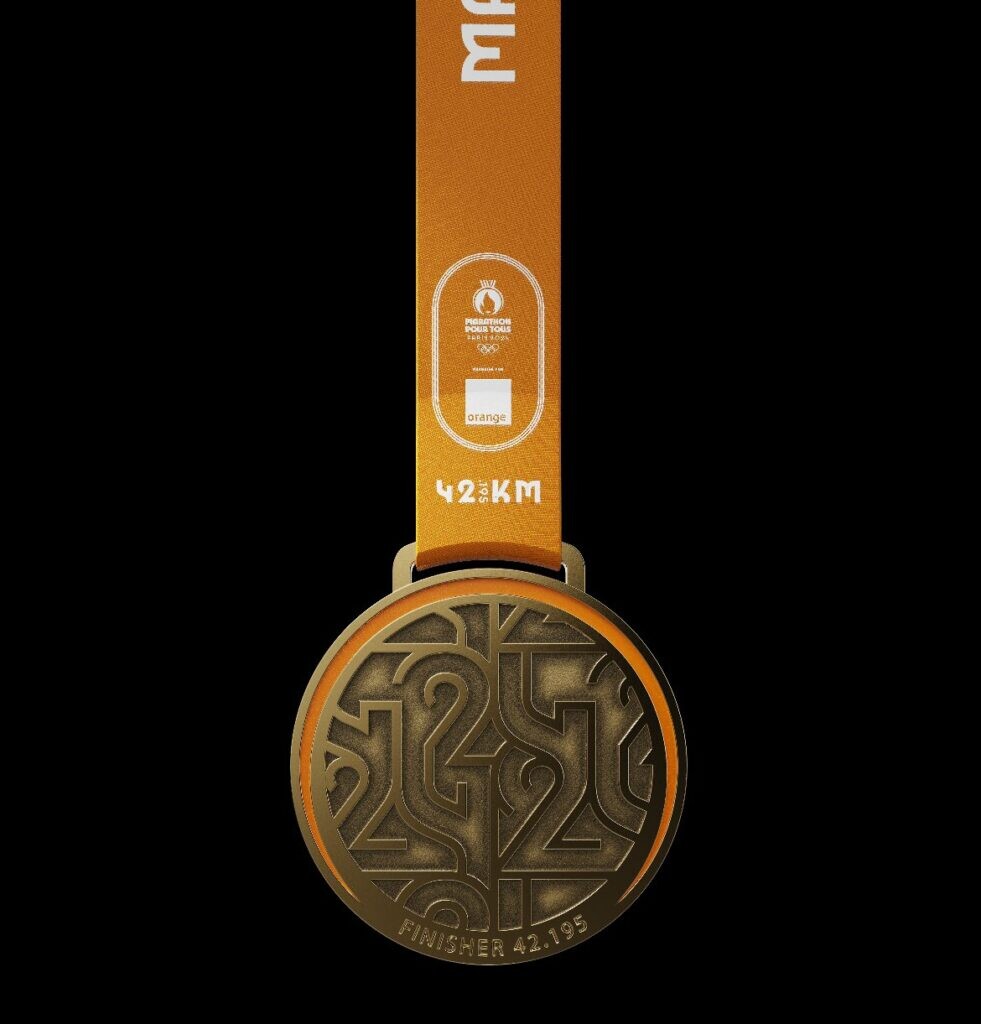
The identity of the medal designer has not been disclosed, but personally, I think the Marathon Pour Tous organizing committee hit the ball out of the park with this design. It’s elegant and thoughtful and creatively symbolic of a marathon at the Olympic Games. Runners who finish the race on Aug. 10 will get to proudly wear these medals after completing the 42.195 km race and crossing the finish line at Les Invalides.
This will be the only event in Olympic history open to the general public, offering “amateur” athletes the chance to run a marathon on the same course as the official events. Entry tickets were awarded to participants who successfully completed various challenges, including beating Eliud Kipchoge in a 5K. There are currently 20,024 runners registered for the Marathon Pour Tous.
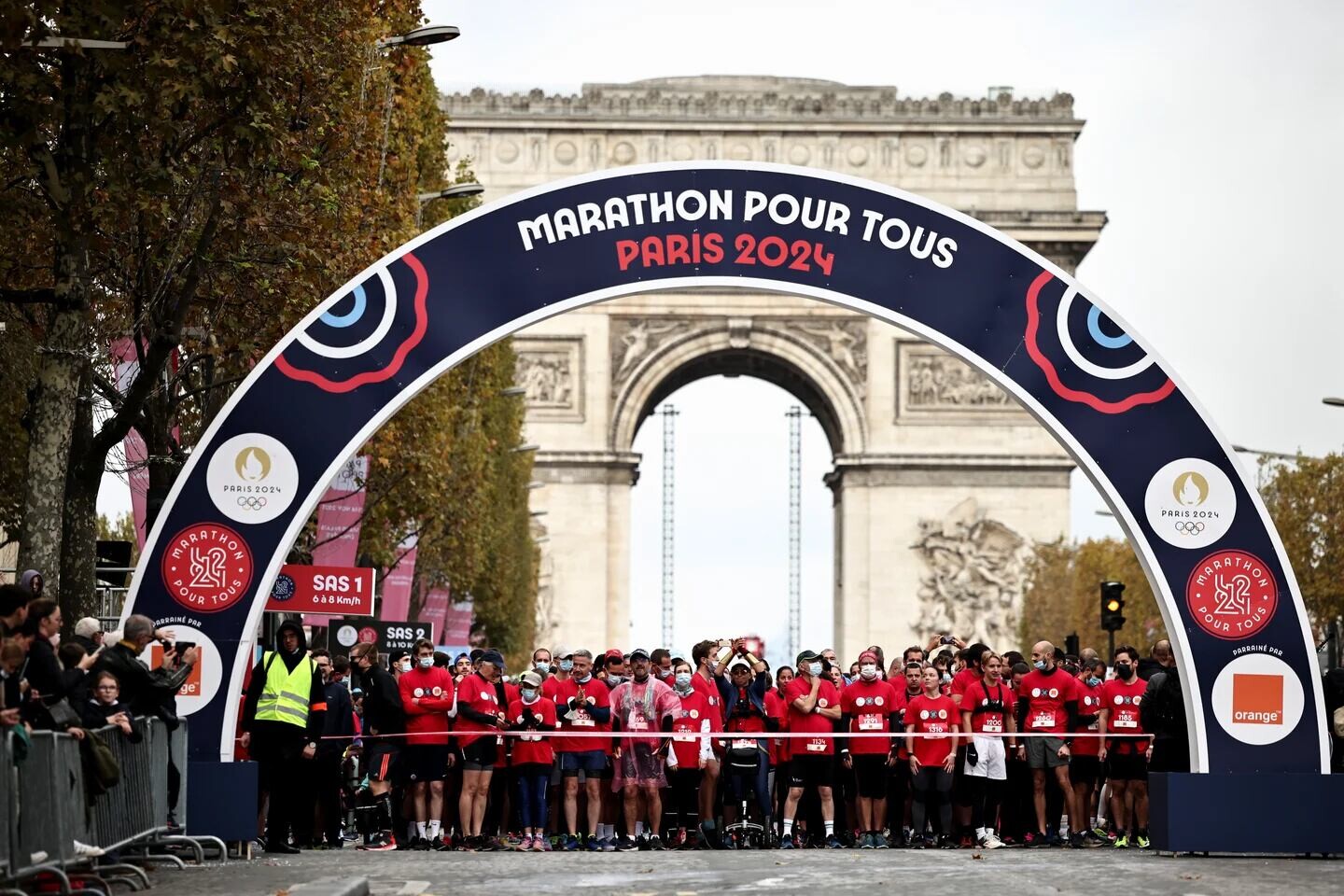
Orange Telecommunications, the official race sponsor, expressed pride when unveiling the official medals on social media. “We are proud to unveil the official medals of the #MarathonPourTous of Paris 2024. Whether it’s the 42.195 km or the 10 km format, finishers will receive one of these medals to immortalize what could well be the race of a lifetime.”
The Marathon Pour Tous will start at 9:00 p.m. at Paris City Hall and follow the same route as the men’s and women’s Olympic marathons. This nighttime race is designed to reduce the impact of summer temperatures, which have historically reached near 35 C in early August. For those fortunate enough to secure a bib, this race will be a celebration of the Olympic Games and the vibrant city of Paris, offering a once-in-a-lifetime experience to run on the same course as the world’s best.
(06/19/2024) ⚡AMPby Marley Dickinson
Paris 2024 Olympic Games
For this historic event, the City of Light is thinking big! Visitors will be able to watch events at top sporting venues in Paris and the Paris region, as well as at emblematic monuments in the capital visited by several millions of tourists each year. The promise of exceptional moments to experience in an exceptional setting! A great way to...
more...How to Find Your “Sweet Spot” Race Distance
Expert advice for focusing on your best event to maximize your running potential.Ever notice that some runs and races are more satisfying than others? These workouts aren’t necessarily the easiest runs or even the ones that are the most fun. Instead, they’re fulfilling because the distance feels challenging, but doable. You collect your medal and walk away thinking, “I bet I can do even better next time,” rather than, “thank goodness that’s over.”
If you have already clicked with a specific distance, you may have already found your running “sweet spot,” or the race length that fires up your inner athlete and gets you training for your next PR. But if you’re new to running or haven’t yet hit your racing stride, some experimentation and a little self-reflection will help you determine where to focus your time and effort when registering and training for events. To help you land on your sweet spot (and figure out what to do when you get there), we chatted with a few run coaches who have worked with athletes of all levels of experience and race preferences. Here’s what you need to know.
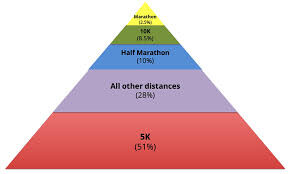
What factors determine your sweet spot race distance?
Before you declare yourself a 10K devotee or commit to running a marathon in every state, give yourself adequate time to build a personal relationship with running and experience different races.
“I don’t know if there’s really a set amount of time required to figure this out,” Matt Forsman, USATF/RRCA-certified running coach and race organizer at Sasquatch Racing, tells Runner’s World. “Some people run for years before determining what distance is their sweet spot. For others, a certain distance immediately speaks to them. If you’re new to running, I’d say give yourself at least six to nine months to build some running fitness, try a few distances, and go from there.”
As you rack up the miles and try different races on for size, it can be helpful to keep these factors in mind:
Fitness and Experience
“Your current level of running fitness should be an important part of the calculus in determining what race distance is best for you,” Forsman says, noting that shorter distances like 5K and 10K, while they present their own unique challenges, are generally more beginner-friendly than half marathons and marathons.
You may find that, even as a newbie, these shorter distances enable you to make noticeable progress that’s reflected in your race times. These wins are valuable, as they can keep you engaged and motivated.
Schedule and Lifestyle
Anyone who’s trained for a marathon or ultramarathon will tell you how all-consuming it can be. Some people have the necessary bandwidth or a flexible schedule. Others have the support and resources to fit training between competing priorities, like work, family obligations, and social events. But if you simply don’t have the time and energy to train for a specific distance, it’s probably not your sweet spot.“You should fit running in and around your life and not life in and around your running,” Todd Buckingham, Ph.D. exercise physiologist at PTSportsPRO in Grand Rapids, Michigan tells Runner’s World. “We do this because it’s fun. We do this because we want to push ourselves. But hopefully not to the extent of alienating friends and family. You need to find a distance that will work with your life.”
Location
If you train outdoors, you will always contend with temperature, climate, and terrain. Therefore, where you live will likely play a role in determining your sweet spot, Will Baldwin, USATF and VDOT-certified running coach in Flagstaff, Arizona tells Runner’s World
“If summer temperatures soar, focusing on local 5Ks instead of marathon training will be much more manageable,” Baldwin says. Of course, you can beat the heat by logging miles before or after sunrise, running on a treadmill, but workarounds often require extra planning and schedule adjustments. The same goes for training in frigid, icy temps.
In some cases, your zip code may present an advantage, as year-long temperate weather and extended daylight hours open up more opportunities for longer outdoor training runs.
“And if there’s a fantastic trail system nearby with plenty of races, it’s the perfect chance to test those trail-running skills and have some fun with it,” Baldwin adds.
Past Performance
Your race history is a clue to where your natural talents lie, which can help inform your sweet spot. “Genetics do play a role,” Buckingham says. “Some people have the diesel engine where they can just go all day long, but they can’t go any faster…other people are really good at short distances but struggle at long distances.” Buckingham and Baldwin recommend checking out online tools like the VDOT Running Calculator, which uses one race distance time to determine your estimated time for other distances. Runner’s World also has an easy-to-use race time predictor. Say, for example, your half-marathon PR is 2:10. The calculator uses this information to suggest an exhaustive list of predicted race times, including a 58:40 10K. However, if your 10K PR is actually 56:10, you may be better suited to the 10K.
“Athletes can use this tool to see which of their PRs is the most distinguished for each distance, helping them determine their ideal race distance,” Baldwin says.
You can also garner a lot of information by participating in local races and looking at race results. “See where you finish in relation to other people your age and sex because that will probably tell you just as well,” Buckingham says.
Injuries
“I think it's important to consider any aggravations and injuries you’ve incurred,” Forsman says. “Running is a high-impact sport that generates about three to seven times your bodyweight in impact force per foot strike. If you have [had] a number of injuries in your recent or distant past, shorter distances like the 5K or 10K may make the most sense. Conversely, if you’ve never had any running-related injuries and your running fitness level is high, a longer distance might work great for you.”
Your Happiness and Enjoyment
Do you notice that some races are simply more fun than others? Pay attention to those gut-level feelings, even if they contradict all of the other data you’ve collected, Baldwin says.
“When figuring out an athlete’s ideal race distance or their sweet spot, I love to start with what excites them the most,” he says. “Even if someone shines in a 10K or half marathon, their heart might be set on the full marathon. Passion is often the fuel source of consistent training, so tapping into that excitement is really important.”How do you level up in your sweet spot race distance?
Once you find your sweet spot, you may need to make some adjustments to your running routine because a training program should be tailored to your upcoming event, if you plan to race.
“If you’re currently running a few easy miles a few times a week but really want to run a fast 5K, you’re going to need to inject some ‘quality,’ like tempo, intervals, and hills, to develop strength and speed,” Forsman says. “If you want to simply tackle a longer distance like a half or full marathon, you’re going to need to gradually add some more miles into your training to build stamina and endurance.”
Focusing on one distance also allows you to fine-tune your fueling and hydration strategy, especially if you opt for longer distances. “If the event we’re training for is going to take us over 90 minutes to complete, we have to start talking about and practicing fueling. We’ll need to incorporate either some liquid fuel or energy gels to help us finish the race and utilize all of our fitness,” Baldwin says. “It’s an added expense to have fuel for all of the important long runs and races, so it’s also something to consider when choosing your ideal race distance,” he adds.
Are there downsides to sticking with one race distance?
It can be rewarding to climb the ranks in sweet spot events, but the experts caution against getting too “stuck” in your sweet spot.
“You should definitely be mixing up the types of races you do,” Baldwin says. “It’s common for a marathon runner to come to me who has been stuck at a certain level for years. When I go back through their training history, they almost always have been doing only marathons for several years in a row. They’ve neglected the shorter races, speed work, and their leg turnover.” Baldwin explains that training at different paces engages different energy systems, and temporarily focusing on shorter, faster distances can improve your speed and efficiency, even on slower endurance runs.
The same concept applies to runners with a shorter sweet spot. “If shorter distances like the 5K or 10K are your thing, there’s still utility in tackling longer distances. Training for a longer distance can help you better manage fatigue in the latter stages of your 5K or 10K,” Forsman says.
Plus, you could miss out on what got you hooked on running in the first place. “Professional athletes have to specialize and really just focus on one event because that’s how they earn their livelihood. But the average runner should have fun with it,” Buckingham says. “If you have fun doing one race distance, that’s fine. But don’t be afraid to jump in the local 5K if your friends ask you to join them.”
(06/18/2024) ⚡AMPby Runner’s World
Four super-speedy half-marathon workouts
These short but suffer-inducing sessions will have you charging to a PB with speed to spare.
Most of us would much rather bask in the sunshine with family and friends than hit the pavement for lactic-inducing, leg-burning repeats. However, to crush those speed goals, we need to squeeze in some tougher workouts. Luckily, these challenging sessions can be tweaked to fit your needs and abilities, and deliver a powerful punch without eating up all your popsicle-munching, beach volleyball-playing time.
When it comes to threshold pace, imagine the speed you’d hold for an hour-long race, or a bit faster than your half-marathon pace. If these training sessions seem too daunting or you are short on time, feel free to adjust by lengthening your recovery time and running fewer repeats.

Quick and punchy intervals
Option A

Warm up with 10 minutes of easy running.
Run 3-5 repeats of 4 x 1K at threshold pace, with 2 minutes of easy running between intervals for recovery.
Cool down with 10 minutes of easy running.
Option B
Warm up with 10 minutes of easy running.
Run 2 x 3K at threshold pace with 2 minutes of recovery between intervals.
Cool down with 10 minutes of easy running.
Speed progression
Warm up with a super easy 5-minute jog (your progression run begins at a very slow pace, so you can skip the warmup on this one, if you prefer).
Run a 10K progression run, starting with an easy pace and finishing at threshold pace. There are no hard-and-fast rules for this workout, so feel free to tweak it according to how you’re feeling and how hard you want to run. Just make sure you’re gradually getting faster as you run—you can judge this by either pace or effort.
Cool down with 10 minutes of very easy running.
Strong and steady
Slide this workout in when you want to do something challenging, but don’t want to completely drain the tank.
Warm up with 5-10 minutes of very easy running.
Run 8K steady state at marathon pace. This can be done by time or by effort, just aim to keep it consistent throughout. (If it’s a warm day, you may run more slowly than your ideal pace, and that’s OK.)
Cool down with 5-10 minutes of very easy running.
Follow any of these harder sessions with a very easy running day or a rest day, and make sure to hydrate before, during and after your workout, especially in warmer weather.
(06/18/2024) ⚡AMPby Keeley Milne
To Fight Midlife Blues, Try Mastering Something Difficult
How is it possible to become good at something when you’re already far behind and time isn’t on your side?
That was the question pressing against my brain in April 2018. I was four months shy of my 47th birthday and had just completed my first obstacle-course racing competition, something called a Spartan Race. My age put me at the rock bottom of the well-known U-shaped curve of life happiness, bracketed on either side by younger and older adults. I was content enough, but my days were clouded by sameness—the same work routine, same circle of friends, a narrowing of interests skewed to my competencies.
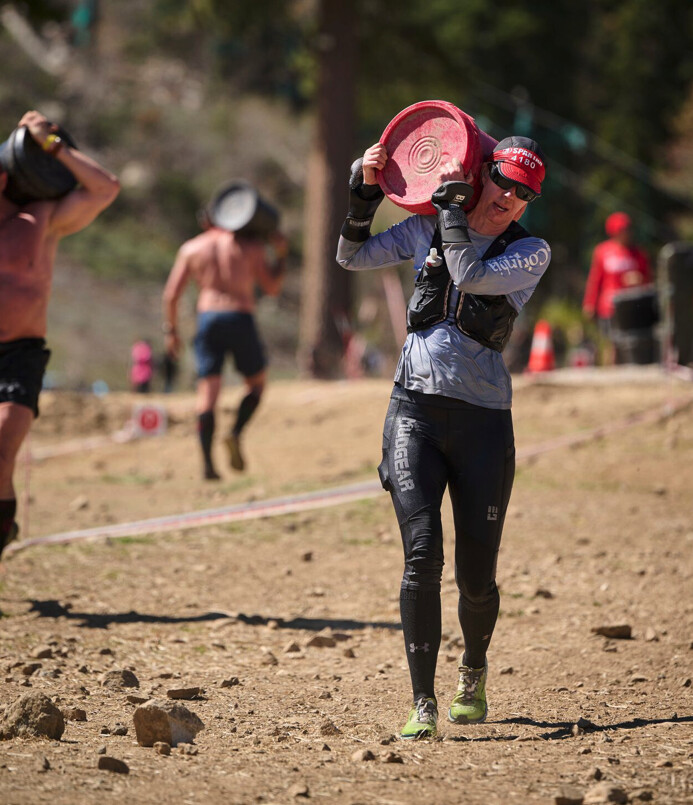
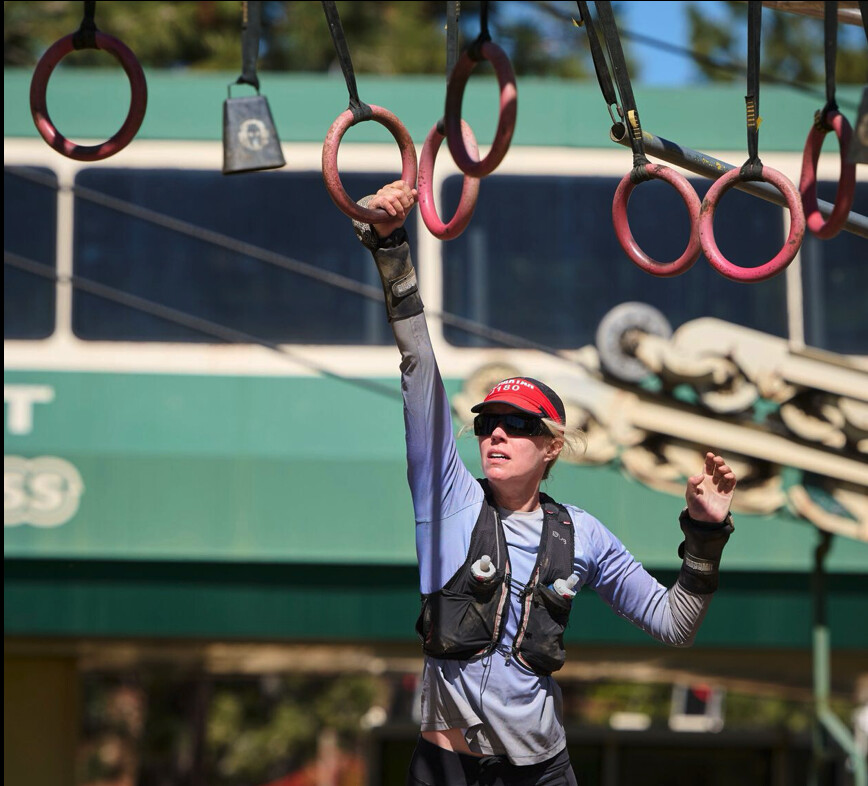
Trying to interrupt my midlife slump with this race was predictable, I suppose. What happened to me after that day was not.
As an unathletic desk jockey glued to my screens, training for the competition seemed like a way to fight back against inertia and a body heading past its prime. Obstacle-course racing combines endurance running in often difficult terrain with military- and hunter-gatherer-styled obstacles: crawling under barbed wire in mud, lugging heavy sandbags up mountains, climbing ropes, scaling walls. You even throw a spear. A version of the sport will be included in the 2028 Olympics as part of the modern pentathlon.
As someone who’d chosen bowling to fulfill my university’s physical education requirement and earned the nickname “Bones” in junior high for her physique, my goal was simple: Finish and don’t die. Then I’d go back to my sitting and screens, with my race T-shirt tucked in the drawer—a sartorial red sports car to don when midlife seemed bleak.
But in the days after crossing the finish line—a middle-aged athletic nobody who fell 10 feet off a rope during the competition into a crumpled heap of humiliation—all I could think about (apart from how much every part of me hurt) was: When can I race again? And how can I get better—a lot better?
I’d taken my first step on the road to mastery—a journey that has been profoundly humbling, and one that I’ll likely never finish.
I n today’s culture, we celebrate “life hacks” and shortcuts to good health and happiness, whether through supplements, fad diets, five-minute workouts or the short-lived dopamine hit of social media likes. In the workplace, completing goals by setting and achieving KPIs (key performance indicators) often determines our professional value. These expectations can make it difficult to start something new and hard in midlife, when we tend to gravitate toward what we’re already good at and the rewards that come with completing it.
At first, I certainly fell into this mindset. Closing in on age 50, “mastery” seemed vaguely absurd. Haunting me was the much-discussed 10,000-hour rule popularized by Malcolm Gladwell in his book “Outliers,” where he suggested that it usually takes that much specialized practice to become an expert in a discipline. Even with two hours a day of training—if I could manage that with a full-time job and loads of middle-aged responsibilities—it would take more than 13 years to hit the mastery mark. I’d be 60. Mastery, I felt, was a journey for those who start young.
But my experience and research over the past six years show that I was wrong to see the challenge in such stark, age-bound terms. As I discovered, pursuing something difficult at any age can have profound benefits for health and happiness, even if you never become a master or an expert.
Becca Levy, a professor of epidemiology at Yale, examined data from one of the country’s most detailed studies of growing older, the Ohio Longitudinal Study on Aging and Retirement, and overlaid it with mortality data. She found that older people with more positive perceptions of aging live 7.5 years longer, on average, than those who are less positive.
One factor believed to fuel this longer lifespan is a “will to live,” which can include pastimes that excite and push us. This doesn’t mean we should be occupied all the time. There’s a lot of creative and mental good to be gained from putting down our smartphones, turning off the TV and letting the mind wander. But chronic boredom and a general lack of purpose have been correlated with anxiety, depression and risk of making mistakes.
That feeling began creeping into my life before I discovered obstacle-course racing. But humbling myself among younger people in gyms, training nearly every day no matter how busy or tired, having the goal of racing in new places (like the Arabian Desert)—it has ignited in me a renewed will to live. I am constantly learning, relearning and unlearning.
I am also constantly having to be OK looking dumb.
The Greek Stoic philosopher Epictetus mused that if you want to improve at something, you need to “be content to be thought foolish and stupid.” I’ve channeled his wisdom, flailing about on playground monkey bars as impatient children commented on my technique and their amused parents (my peers) watched. Neighbors can see me crawling around my backyard like a wounded animal, performing mobility exercises with stiff middle-aged limbs.
I have felt the sting of finishing races almost dead last, and I once quit a competition midway because I was too cold. I’d never quit anything in my life until that point. Showing up at my gym the next day with everyone else clad in their finisher T-shirts felt like not getting invited to prom.
On the other hand, it’s very hard to be bored slithering under barbed wire in mud, hurling spears and learning to pull yourself up a 17-foot rope. And with improvement has come a mental shift to believe the file labeled “me” isn’t finished—that I can still add to it.
These benefits are available on a variety of fronts as we age. The Seattle Longitudinal Study, started in 1956, is one of the most comprehensive research projects on how we develop and change cognitively throughout adulthood. Among its key findings: Some abilities, such as word skills, may increase into our 60s and beyond, particularly for women, while others, such as spatial abilities—think assembling furniture or reading a map—hold up into our 80s for men. That’s a lot of opportunity for later-in-life learning and journeys of mastery.
Here’s the thing about trying to achieve mastery later in life: You may not reach your destination. And I’ve come to believe that’s a good thing. Because unlike the enjoyable activities we pursue that have definitive endings—taking a walk, eating a great meal, going on vacation—training to get good at something hard is ongoing, incomplete. And that’s the beauty of it: There’s always something to look forward to.
Regardless of what you’re trying to master—fly fishing, chess, pickleball—experts say that regular movement of some sort is critical for maintaining the physical and cognitive health you’ll need. Starting a new exercise program, particularly in midlife, when noticeable decline often begins, “can really interrupt the pace of those not-good changes, those negative changes, and turn them into positive changes,” says Steven Austad, senior scientific director for the American Federation for Aging Research. New research, he adds, shows “physical activity is one of the best ways to avoid later-life dementia.”
Six years have passed since my first race. After some 4,000 hours of practice, I’ve advanced on the five-stage “Dreyfus model” of skill acquisition from “novice” to “advanced beginner” to “competence.” I now race competitively in my age group and have under my belt 19 top-three podium finishes and two world championship competitions. Some days, when everything is clicking, I may even touch the fourth stage of proficiency.
It’s a far cry from childhood, when I cowered behind my best friend during dodgeball and warmed my school’s bench in soccer games. Longevity is never guaranteed, but I’ve made strides to keep functioning independently as I age—lifting my suitcase into the airplane’s overhead bin, hiking three miles in snow if our car breaks down. I’m also more confident off the racecourse. Not long ago, I took a job with a tech start-up where I’m one of the oldest employees. Younger workers teach me about AI; I took a crew of them on their first Spartan Race.
Admittedly, I’m still coming to peace with the idea that I’ll never reach the final stage of “expert” at this sport I now love. I’ve met people who are experts: They possess natural talent I don’t, or have spent time training that I probably can’t at this point. There remain obstacles I fail during races more than I’d like; now that I’m 52 years old, I don’t know if that will change.
These reminders of my limitations and mortality are what’s been most humbling about the experience. But “never finished” may be the best medicine when life seems to be making a turn toward endings. I interviewed a woman in her 80s nicknamed “Muddy Mildred” who ran obstacle-course races. How far can I get with the time that is left to me?
1. Intrinsic motivation gets you farther than extrinsic motivation. Motivation from external factors—money, a promotion, a medal—can be short-lived. “I can probably get someone up from the couch to run a 10K if I give them enough money,” says Chad Stecher, a behavioral health economist and assistant professor at Arizona State University. “But after that 10K, unless I provide additional incentives or support, their physical activity won’t persist.”
Instead, look for a pursuit where you are motivated to engage because of personal satisfaction or a deeper drive. One place to start: childhood. What did you want to be or do when you grew up, but it hasn’t yet happened? My experience of being a gawky kid still drives me.
2. Cultivate a “growth mindset.” Believing your success is tied more to hard work than innate talent is critical on the mastery journey. The well-known Stanford University psychologist Carol Dweck talks about one Chicago school’s unorthodox but effective grading protocol, where instead of a failing grade, students would get a “Not Yet.”
You’re not going to become a good diver without landing a lot of belly-flops, or a competent fly-fisherman without the line occasionally getting wrapped up in a tree. It doesn’t mean you won’t get there; it just means you haven’t gotten there yet.
3. Locate edges and equalizers. Crystallized intelligence—your stored-up body of wisdom—can make age a secret weapon. The older you are, the more you’ve tried, failed, succeeded and learned. Draw from that bank. I can’t rely on a 25-year-old body to perform well, so I’ve turned to information: intel on gear, clothing, weather, hydration, terrain, sleep.
“When you’re older, you can see the bigger picture more than you could when you were 17,” says Alex Hutchinson, bestselling author of the book “Endure.” “It’s really easy to get excited about big goals, but to actually achieve them takes patience to take care of details, patience to stay on track when obstacles arise.”
4. Prioritize what’s essential. You can’t hack your way to mastery. It takes time and the “disciplined pursuit of less,” as Greg McKeown explains in his book “Essentialism.”
To include obstacle-course racing in an already full life, I trimmed my Instagram feed to mainly follow accounts helping me learn about the sport. After analyzing how much of my workday was spent in inefficient, hour-long, weekly one-on-one meetings, I cut most of them back to 25 minutes and set clear agendas. I declined all social invitations that weren’t from my closest friends and stepped away from many boards I served on. With every “no,” I got back a few more hours to devote to this new journey.
5. The mastery journey can be never-ending. And that’s fine. Finishing only that first race would have given me short-lived bragging rights and an awesome social media photo. But then it would have been over—extinguishing a source of meaning in my life.
It wasn’t until I firmly entered the realm of “never finished” that I realized how electrifying it could be. Which sure feels like a far cry from being stuck at the bottom of a U curve.
(06/18/2024) ⚡AMPThis Runner Learned the Importance of Easy Days After Trying to Train Hard for Too Long
“Running has made me a better thinker—I’m able to solve problems when I’m on a run, and often find new and creative solutions to or perspectives on something that’s bothering me."
I played sports (baseball, basketball, lacrosse) growing up, but running was always used as a form of punishment. I didn’t understand the people who “enjoyed” running or would willingly run. I also didn’t want anything to do with running because I was too scared to lose any of the muscle I worked so hard to put on. (I picked up weightlifting in college.)

That’s when running became the perfect escape for me physically and mentally. Some of my best thoughts came from mid-afternoon runs around the suburbs of Irvine, California. While I realized that I wasn’t cut out for med school, I will say that my personal statement would have been a lot worse had I not gotten some creative inspiration on my runs.
When I first started running, I didn’t really know how to run—so I downloaded the first (good) app I could find—the Nike Run Club app. I really liked it because they had in-app coaches to help guide you through the run, plus tips on how to gauge my intensity proved helpful.
Prior to that, I would just run as fast as I could for three to four miles with zero periodization on a day-to-day or week-to-week basis. I didn’t do any races, but I did a self-imposed “5K every day” challenge in November 2020. The goal was to get faster by the end of November. I went out and ran a 5K every day at max effort, expecting to get faster by day three. Instead, I had a pretty big regression, so it wasn’t the best training method for me.
I think most beginners think that doing more of the same thing will get them to become better, when in reality periodization is what actually compounds progress the most. I thought I needed to be running at a high intensity daily. It took me two years until I realized that I only needed a few max effort sessions per week, and to simply focus on making my hard days hard and easy days easy.
I’ve also noticed that many former high school/college athletes get into running and their biggest Achilles’ heel is making easy days just as hard as hard days, and I totally get that. Running three miles at a 10-minute pace when I know I can be cooking some sub-seven-minute miles is not something my brain nor body were used to when I started.
In 2020, I decided to run an impromptu half marathon, which was my proudest running moment. To the Allen who had never hit double-digit mileage in one run, 13.1 miles was simply a mythological number.
For that run, I hadn’t followed any real training beforehand, nor did I have any gels or water (biggest mistake I made that day). It was just me, my phone, some AirPods, and my new bright orange Nike AlphaFlys. Needless to say, my first half marathon ended with me cramping and locking up outside of the Chipotle that was less than a mile from my house. I wouldn’t run more than 10 miles again until March 2022.
I almost entirely stopped running in April 2021 when I got back to the gym. However, running found me again when I signed up to participate in the Birthday Series’ 131-mile Relay Race from Montauk, New York to Times Square in June 2023. I ran 25 to 30 miles in the race. I went from running ten to 20 miles a week inconsistently (from March to May 2023) to 50-plus miles a week later that summer.
Most recently, this past April, I ran my first marathon—the Big Sur International Marathon. I was doing well and on target for a 3:15 marathon until my entire body started cramping at the end of mile 22 and my split went from a 7:30 pace to a 15-minute pace. I remember getting to a 1.5-mile enclave (from mile 23 to 24) and that was the longest 1.5 miles of my life.
Those miles were never ending, which was such a juxtaposition since the miles before it felt like they were just breezing by. I remember fully stopping and thinking to myself: “I might have to lie down in this bush,” because my legs were writhing in pain from the cramps.
At the peak of training for that marathon, I was running five days a week in Central Park and logging 50-plus miles on the rolling hills, but this still wasn’t enough to get me fully acclimated to the rolling hills of Big Sur!
But, I am definitely ready for more races in the future. I plan to run Big Sur in 2025, as I will be seeking some redemption, but I’d also like to do shorter races in between.
At this point in my life, I enjoy yoga, Pilates, running, powerlifting, and bodybuilding. Overall though, running has made me a better thinker—I’m able to solve problems when I’m on a run, and often find new and creative solutions to or perspectives on something that’s bothering me. For that, I’m grateful!
But then things changed when I didn’t have a chance to go to the gym in 2020, so I finally gave running a chance. I was also caught in the post-grad bubble of despair, and I wasn’t sure where my life was heading, so running seemed like a good way to pass the time.
My entire undergrad experience was defined by pre-med courses and a little more than 2,000 hours of sports medicine internship. Naturally, applying to graduate/medical schools was the obvious choice, but really I was applying because it was the only socially acceptable form of procrastination. (A pretty poor use of time considering some of the med school applications felt more like a job than the jobs I was working.)
During that time, I had lost two part-time jobs: demoing energy drinks at various gyms around Los Angeles and modeling. So, I was back living at home with no job, spending some 10 hours a day (wish I was kidding) on trying to craft the perfect personal statement for my med school application. I really just needed to do something for my body.
These tips have made my running journey a success:
1. Take it easy
I never liked running up until a few years ago, because I always equated “running” to “sprinting” because that was the punishment we had if we missed too many free throws in a game or missed a ground ball during lacrosse practice.
It was when I joined a run club a year ago that I realized running is not just sprinting, and can be an enjoyable, social activity with or without the presence of others.
2. Be okay with failure
You can do everything correctly during training and still not get the desired results. The benefit of running is that you can make mistakes without any major or lasting consequences. You can then try to apply that philosophy to other areas of your life.
3. Develop an athlete mentality
Whether or not you were an athlete growing up, the deal you make with yourself when you start running is that you become an athlete. If you want the opportunity to improve then you must start treating yourself with respect—like with good nutrition, rest, and health check-ups. Whether you want to run faster, further, more frequently, or just be able to start running at the drop of a hat, you need to give your body the respect it deserves, because running can quickly expose the holes in your health.
4. Invest in good shoes
Get a decent pair of shoes that can handle lots of mileage. Don’t get the most expensive shoe you see online thinking it will make you a better runner—because while it might feel that way, those effects are inflated.
5. Enlist support
Follow a program, an app, a coach, or find a running buddy. If none of those suit you, join a run club! Run clubs really help making running enjoyable with the added benefit of having built-in accountability. You likely know when and where the run is and all you have to do is show up. (One run club I like is Endorphins Running.)
6. Keep an open mind
If you are trying to better yourself and your health, keep an open mind when trying new things. If you think of your health more as a philosophy instead of a rigid set of rules, you will learn that you can start to take ideas from the things you enjoy and mold your own version of health that’s sustainable.
Allen’s Must-Have Gear
→ Normatec 3 Legs: I use these after every long run and occasionally before bed. It just feels really good to get your leg squeezed after a hard workout and it usually forces me to relax (which is great before bedtime).
→ Mito Red Light: I try my best to do everything I can to prevent injury. I’ll use my red light device at home on any areas that’ve been nagging me, as well as a few focus areas as a way to warm up. I typically do five minutes on each leg before a long run.
→ Hoka Mach 6: These have been my workhorse shoes the past few months (almost at 200 miles already on a pair). Love them for track workouts and long runs. They just get the job done.
(06/16/2024) ⚡AMPWhy Daniel Simiu was not selected for the men's 10,000m for Paris Olympics
The selection panel has given a candid explanation of why Daniel Simiu was left out of the men's 10,000m team at the Paris 2024 Olympics.
The selection panel, led by Athletics Kenya Nairobi Chair Barnaba Korir has explained why world 10,000m silver medallist Daniel Simiu was snubbed from the men’s 10,000m team to the Paris 2024 Olympics.
As per the International Olympic Committee, the first two athletes to cross the finish line automatically qualify for the event with the third athlete being chosen by a panel of selectors.
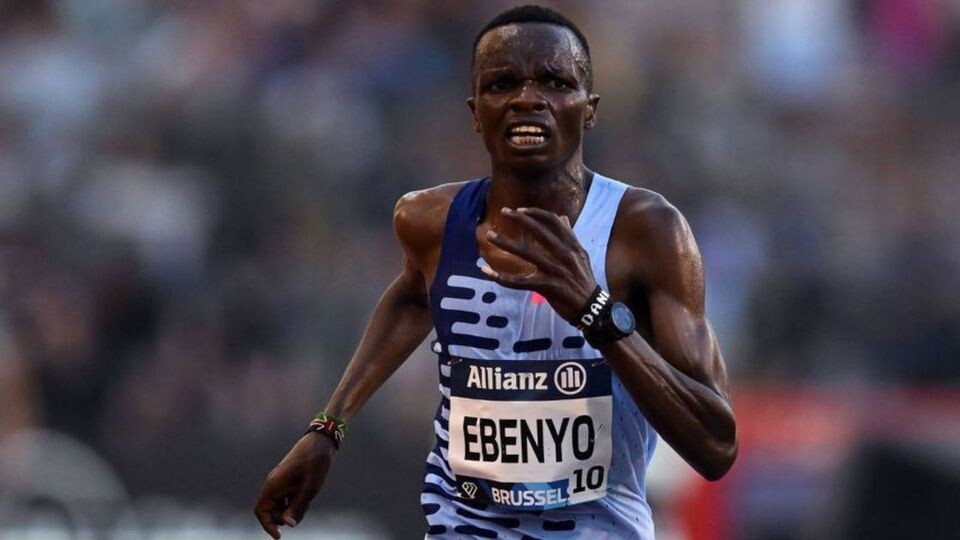
Daniel Mateiko and Nicholas Kimeli finished first and second respectively with Bernard Kibet finishing third in the race. Simiu stumbled and fell, but he had to push himself and could only afford an eighth-place finish at the event.
Athletics Kenya president Jack Tuwei weighed in and explained that all athletes had a n equal chance of qualifying and they all arrived at Oregon in good time ahead of the race.

“We had a bit of a challenge with the travel documents but made sure that all the athletes who had been selected to go to Oregon to go there for the trials, Ebenyo included. There was a challenge but we made sure they all ended up there and they came back safely,” Tuwei said.
Meanwhile, Korir explained that Simiu arrived in Oregon, two days before the race, and had enough time to rest and also prepare himself for the race.
He added that there was tough competition since most athletes had qualified and they scratched their heads to come up with that decision.
“The preparation of the team to go to Oregon was very rigorous and the team that was selection process was done by the technical bench and the coaches who have been engaging with these athletes.
“Every athlete who had the opportunity to go and compete was contacted and nobody was left out in this process. The athletes who have been selected have all qualified and the 10,000m is currently limited and they have very few races in Europe.
“The decision was that most athletes had qualified and give them an opportunity to race and give them a feel of the track before the Paris Olympics. The selection had some problems but every athlete that was supposed to go there made it.
“Ebenyo made it there two days prior to the competition and he had an opportunity to rest and he had an advantage. All of them were okay and ready and the coaches prepared the athletes very well,” Korir said.
He added the committee had to check the performance of Kibet and Simiu and they realised that the former had also been performing well and there was no way he could have been left out.
He added that they did not want to name the team in Oregon since making the decision would be tough and they had to come back to the country to sit down and come up with a team.
“The committee realised that the third athlete had been performing well in other championships and there was no way he would be dropped. Selecting the men was very tough.
“We did not name the team since we had to sit down and rigorously decide on who was going to make the team. They made the decision according to many other reasons and the 10,000m was superb and the run was amazing,” Korir said.
Meanwhile, Milcah Chemos added that Kibet has shown impressive performances in previous races and he also played a huge role in Team Kenya winning silver at the World Championships in Budapest, Hungary.
She added that at the Prefontaine Classic, he fought hard for the third place and he deserves a chance. Chemos also believes that Kibet will not disappoint at the Paris 2024 Olympics.
“I was in Oregon and I witnessed all that was going on, so for the number three, we came up with them because of their performance. All athletes had an equal chance in Oregon and we all saw how Bernard did his best especially when the light had gone, he tried so had to close the gap.
“In Budapest, he also played a huge role in ensuring Kenya won the silver medal. It was hard to give out the number three but at least we sat, almost 10 of us, and we came up with the number three and I believe he deserves the position,” Chemos said.
(06/15/2024) ⚡AMPby Abigael Wuafula
Paris 2024 Olympic Games
For this historic event, the City of Light is thinking big! Visitors will be able to watch events at top sporting venues in Paris and the Paris region, as well as at emblematic monuments in the capital visited by several millions of tourists each year. The promise of exceptional moments to experience in an exceptional setting! A great way to...
more...Dominic Ondoro and Elisha Barno will headline in the Grandma’s Marathon
Former champions and countrymen Dominic Ondoro and Elisha Barno will dominate the headlines in the Grandma’s Marathon men’s field, together having accounted for seven wins in the past nine years at this race.
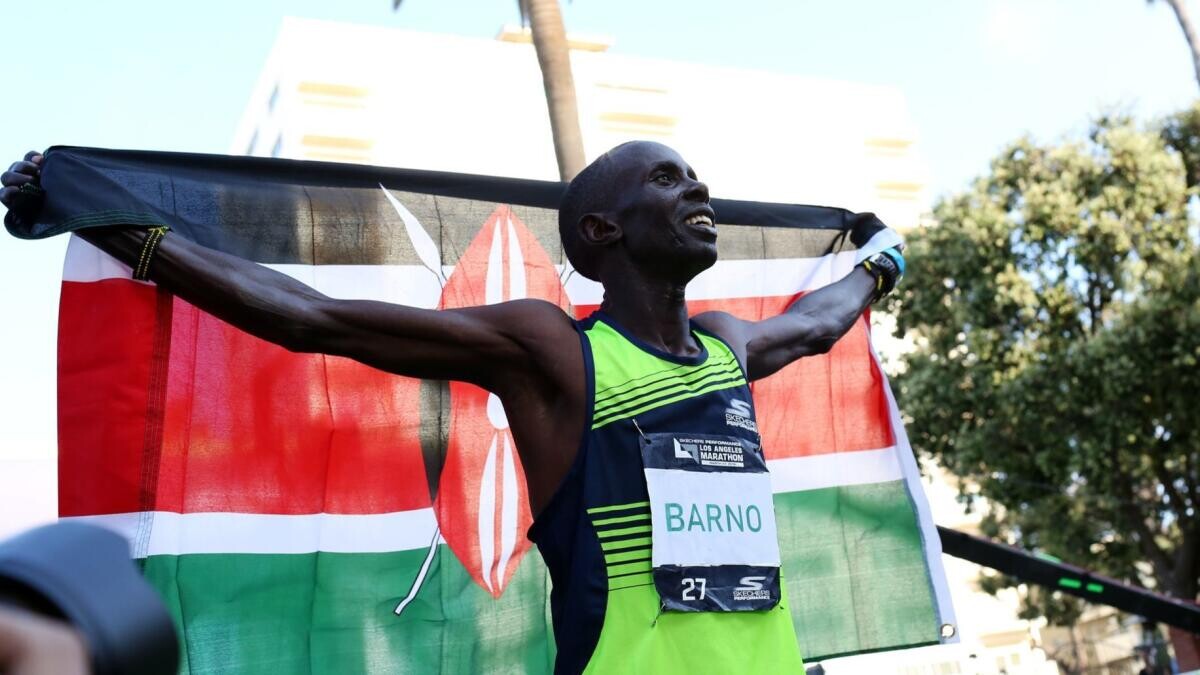
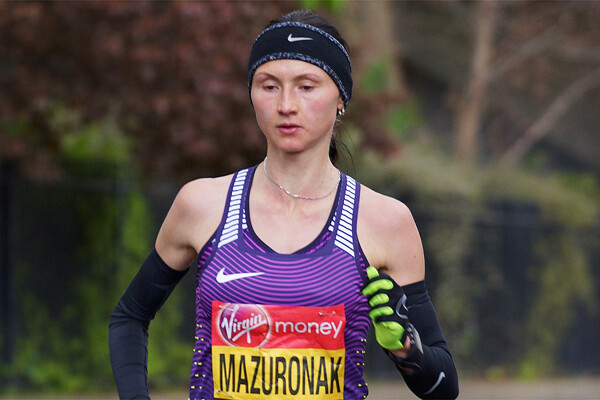
Barno won for a record fifth time in his career last year, which came just one day after he was officially inducted into the Grandma’s Marathon Hall of Fame. Ondoro, meanwhile, still owns the event record of 2:09:06, a time he ran in 2014 that broke the longstanding record of Minnesotan Dick Beardsley.
The women’s field may be the most wide open of all this year’s events, with two-time Belarus Olympian Volha Mazuronak seemingly the pre-race favorite. She has top five finishes at both the Tokyo and Rio Olympics on her resume, as well as a runner-up finish earlier this year at the Los Angeles Marathon.
(06/15/2024) ⚡AMPby Running USA
Grandmas Marathon
Grandma's Marathon began in 1977 when a group of local runners planned a scenic road race from Two Harbors to Duluth, Minnesota. There were just 150 participants that year, but organizers knew they had discovered something special. The marathon received its name from the Duluth-based group of famous Grandma's restaurants, its first major sponsor. The level of sponsorship with the...
more...Confident Faith Kipyegon ready to double at Paris Olympics after impressing on day two of Kenyan trials
Winning the 1500m at the Kenyan Olympic trials has boosted Faith Kipyegon's confidence and she has disclosed plans to double in the 1500m and 5000m at the Paris 2024 Olympics.
Three-time world 1500m champion Faith Kipyegon has impressed one more time on day two of the Kenyan Olympic trials, winning the 1500m and she has admitted it is a confidence booster for her to double in the 1500m and 5000m.
The double world champion clocked an impressive 3:53.98 to cross the finish line ahead of Nelly Chepchirchir who also qualified for the games, clocking 3:58.46 to cross the finish line.
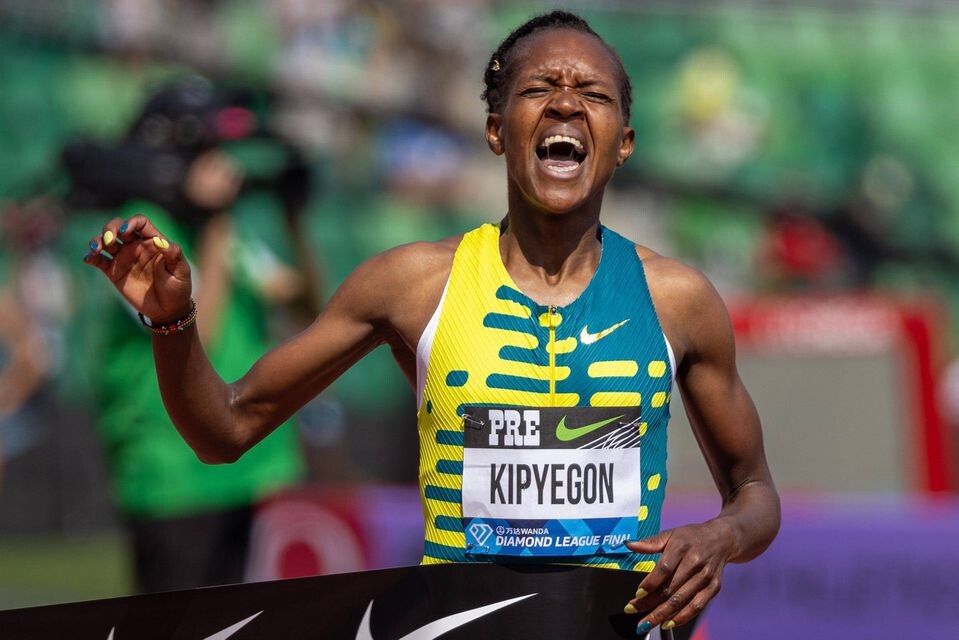
Us-based runner Susan Ejore completed the podium, clocking an astonishing 4:00.22 to also qualify for the games.
Kipyegon was proud to share that the win is a confidence booster since she has been out with an injury and opening her season with a win and clocking such a fast time has encouraged her to double at the Olympics.
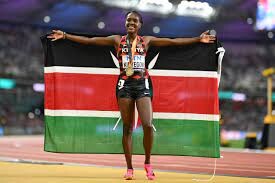
Before the race, her goal was to ensure she motivates others to join her in search for Olympic glory and she explained that her main aim was to ensure they run a faster race, something she was happy to have achieved and also pushed Chepchirchir and Ejore to hit the Olympic qualifying mark.
“I had not raced due to an injury but I thank God because I ran an incredible race today. I can declare that I’m going to double after this win because I have gained more confidence and I’m doing well. I’m ready to go and represent Kenya in the 1500m and 5000m.
“I see the team is very strong because we have worked together and we had talked before the race that we shall run a fast one. Today we wanted to run faster.
“After now, we are going to prepare for the Games and pray to God that we stay healthy and focus on the Olympics,” Kipyegon said after the race.
In her season opener at the Nyayo National Stadium on Friday, Kipyegon also outsmarted other world 10,000m record holder Beatrice Chebet to take the crown.
The two-time Olympic 1500m champion clocked 14:46.28 to cross the finish line as Chebet finished second in 14:52.55. Margaret Chelimo completed the podium, stopping the clock at 14:59.39.
(06/15/2024) ⚡AMPby Abigael Wuafula
Paris 2024 Olympic Games
For this historic event, the City of Light is thinking big! Visitors will be able to watch events at top sporting venues in Paris and the Paris region, as well as at emblematic monuments in the capital visited by several millions of tourists each year. The promise of exceptional moments to experience in an exceptional setting! A great way to...
more...Runners should lean forward a little, but not too much, new research says
Runners often practise form drills to help them master the perfect forward lean, or have had coaches that tell them to lean forward to work with gravity and hit their ideal pace. A new study, published in the journal PLOS ONE, suggests that might not be the case. Researchers at Cal Poly Humboldt and the University of Southern California have revealed an unanticipated reward to staying upright, or maintaining only a very moderate lean, while running—improved efficiency.
Finding the perfect balance
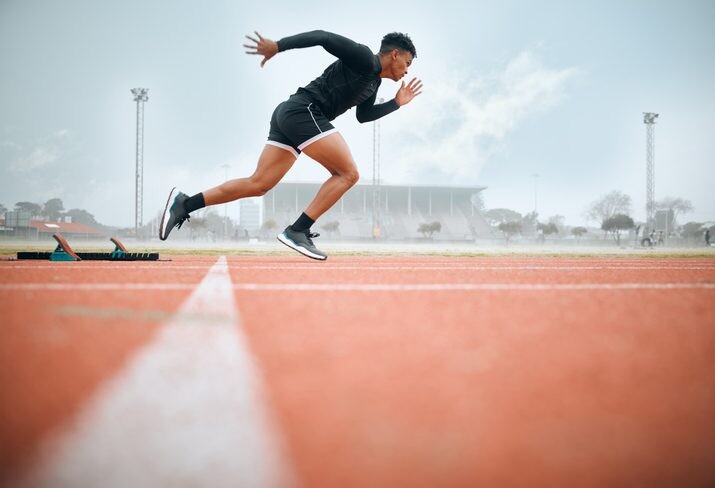
The research involved recreational runners who adjusted their forward lean from almost upright to a maximum of eight degrees. The findings? Runners who adopted a moderate forward lean—about halfway to their maximum—ran more efficiently than those with the most extreme lean. Specifically, runners with a moderate lean were eight per cent more efficient than those who leaned forward the most.
“Runners are often told to lean forward to improve efficiency, with the idea that gravity will help propel them forward, reducing the energy required from their leg muscles,” says Justus Ortega, a kinesiology professor at Cal Poly Humboldt. “Our study, however, shows that excessive forward lean increases the metabolic cost of running, similar to adding weights to your lower legs.”
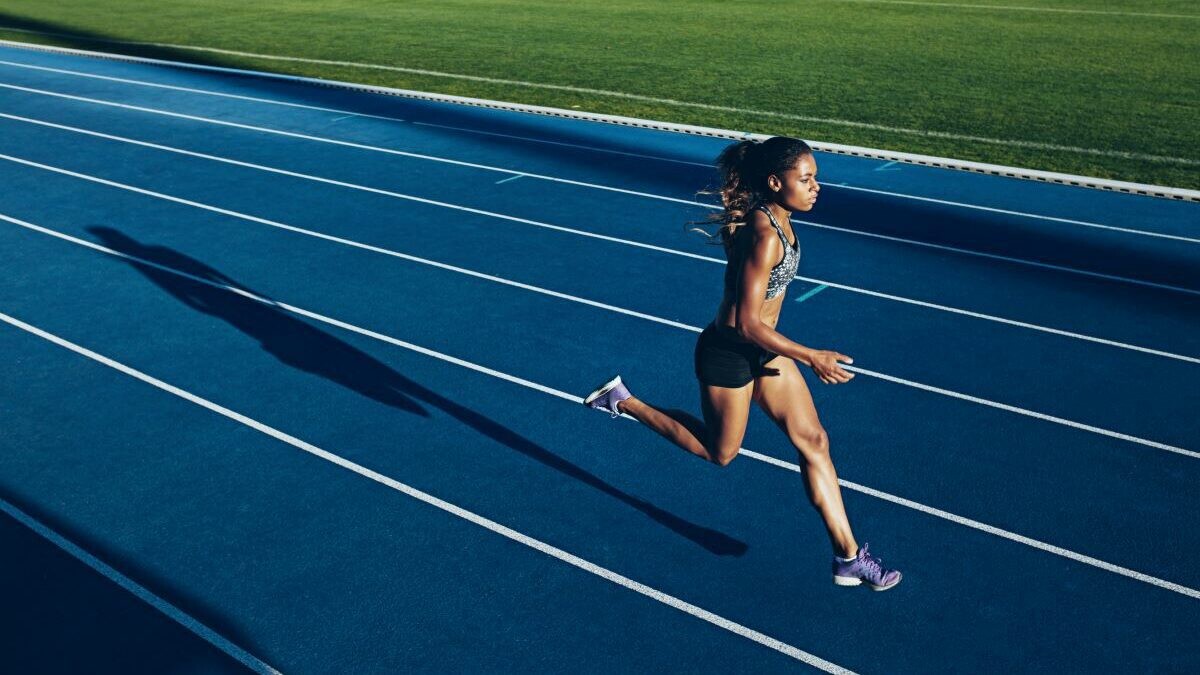
The mechanics behind the lean
Metabolic cost, or the energy needed for movement, has a significant impact on how strenuous running feels. The study looked at recreational runners aged 18-35 who ran for at least 30 minutes a day, three times a week. Participants ran on a treadmill at eight miles per hour, using three postures: upright, maximum forward lean and a moderate forward lean (50 per cent of maximum).
Researchers measured oxygen consumption and carbon dioxide production to calculate each runner’s metabolic rate. The results revealed that runners were seven to nine per cent less efficient when using a maximum forward lean compared to a moderate lean or an upright posture.
Hip muscles and running efficiency
While the exact reasons why a moderate lean is more efficient aren’t fully understood, the researchers have some ideas. Data on muscle activation suggest that the gluteus maximus, the muscle responsible for hip extension, is more engaged with a significant forward lean, likely increasing energy use.
Nina Carson, a physical therapist and doctoral student at the University of Colorado, Denver, and lead author of the study, explains: “The bottom line is that the technique of running with a moderate forward lean is better than trying to run with a large forward lean, at least in terms of efficiency.”
What’s next?
Future research aims to explore how varying levels of forward lean affect running efficiency and performance on inclined and declined slopes. For now, the message is clear: if you want to run more efficiently, an upright posture or a slight forward lean are your best bets.
(06/15/2024) ⚡AMPby Keeley Milne
JP Flavin and Erin Mawhinney Victorious at 2024 Under Armour Toronto 10K
JP Flavin rang up Under Armour Toronto 10K organizers last week and asked if there was a place in the event for him. His eleventh-hour plea came just before the race limit of 7,500 was reached. Lucky for him.
The 25 year old New Jersey native showed his gratitude by front running his way to a victory in 29:20 and in the process pulling top Canadian Andrew Davies to a new personal best of 29:25. Third place overall went to Lee Wesselius in 29:49 and the third Canadian was Rob Kanko in 30 minutes flat.
“I am very thankful they let me in the race,” said Flavin, a member of the Brooks Hanson Project based in Rochester Hills, Michigan. “I did really well. I kept 4:40 miles throughout, which was my plan. It was fun.”
Midway through the race - the lead pack of seven runners reached 5K in 14:32 - he went to the front with the objective of breaking pre-race favorite Andrew Davies.
The Sarnia native has been training in Vancouver, where he is a law student at the University of British Columbia. Earlier this year, he ran a personal best 10,000m on the track (28:34.63) and also finished 2nd in the NAIA (collegiate) national championships in that event, which caught the attention of his peers.
“I knew if I stayed with Andrew to the last two kilometres, odds are he would outkick me,” Flavin added. “So a little before 5K, I started picking it up. I wanted to use that long hill [at the Canadian Legion] to come hard off it.”
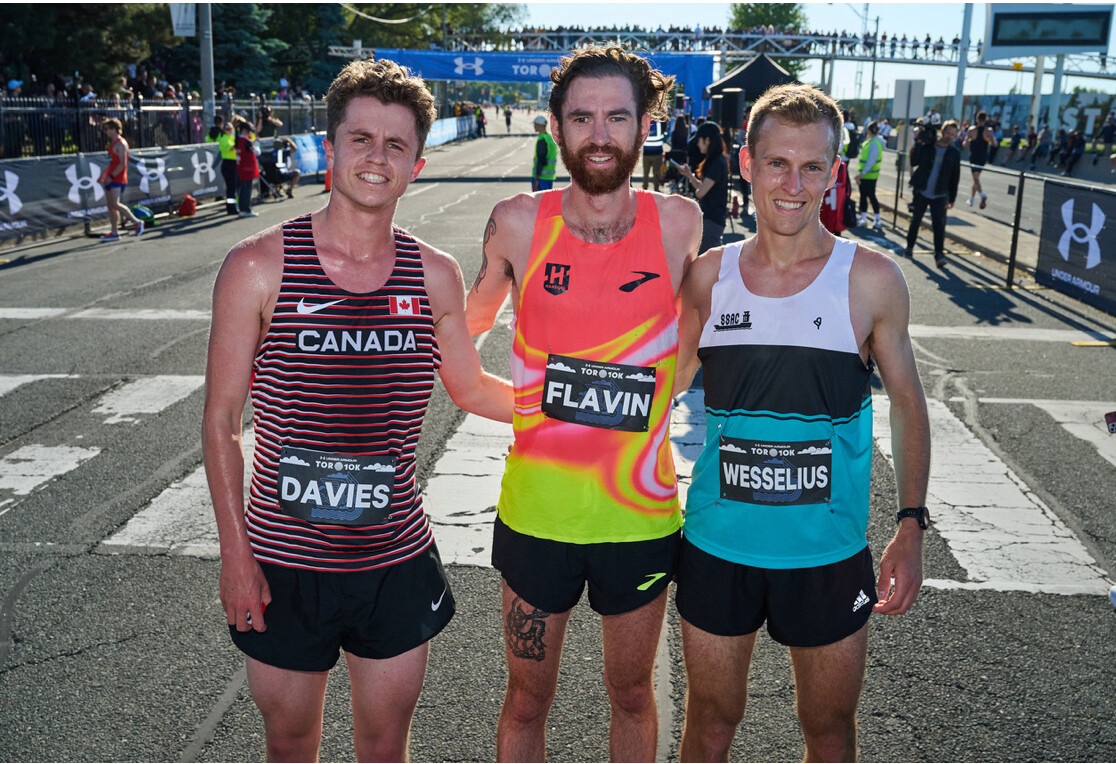
"When I made my move and started feeling bad at mile five, I could hear from the crowd; they were screaming his name a little bit. So I knew I had to pay attention, stay on it, and not let up too much. I was able to grind and finish off strong.”
Davies was satisfied with his personal best. When Flavin made his move, he made an effort to maintain contact but could never close the gap.
"I was trying to cover it as best I could without risking blowing up at the end,” he revealed. “I couldn’t quite cover it. I stayed pretty close. I couldn’t catch him over the last two kilometres. He held that gap the whole way.”
Despite his earlier 10,000m success in the spring, Davies admitted he has lately been focusing on the 5,000m, the event he will race at the Canadian Olympic trials June 26-30 in Montreal.
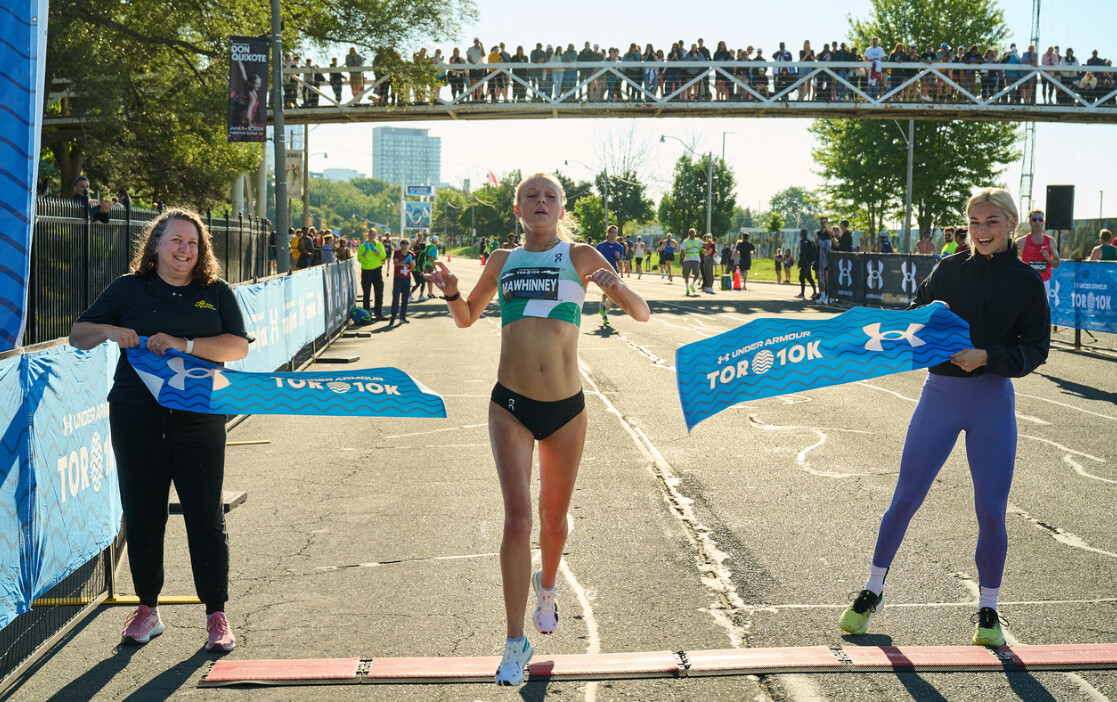
While the men’s race had its drama, the women’s race saw the same podium finishers as in 2023, although Erin Mawhinney’s title defence was emphatic. The 28-year-old Hamilton, Ontario, nursing consultant won by 25 seconds over Salome Nyirarukundo.
Mahwinney’s 33:40 time was a pleasant surprise after she learned earlier in the year she was iron deficient.
“This was the first race since February that I haven’t felt dizzy, so this is the first one in a while that has felt like that,” says Mawhinney, who was greeted at the finish by her coach, two time Canadian Olympic marathoner, Reid Coolsaet.
Respect for her competitors was evident in her further comments.
“At no point was I confident of winning,” she declared. “Salome is so talented, and I knew there was a good chance she would come flying by but someone yelled at me with a kilometre to go that I had a good gap.
To run in the 33s, especially today, it's hotter and windier than last year, to run the same time as last year off much less training is great.”
Mawhinney also credited Toronto running coach Paddy Birch for helping her through the windy stretches along Lake Shore Boulevard.
“I owe my life to Paddy Birch. He was sort of breaking some of the wind and pacing up to about 8K, so I didn’t have to think quite as hard about it,” she added. “He is much faster than me, but I think he was going for an easy run. He was (pacing me) on purpose when he was talking to me.”
Nyirarukundo, who competed for Rwanda at the 2016 Olympics, now lives in Ottawa. She complained about having an upset stomach last night and into the race morning.
“I was a little bit tired. This morning I had a problemwith stomach. Even now, I have it,” she said with a smile, “so I was struggling even to finish, but because I am a fighter, I just tried to finish. It was not bad.”
“I appreciate the organisers; they are very, very good to the elites. It is really good and I enjoy the people (on the course) who are cheering.”
Rachel Hannah, now recovered from her 3rd place finish in the Ottawa Marathon, was 3rd in today’s race. Her time of 34:10, almost a minute faster than her 2023 finish, pleased her.
Once again, the Under Armour Toronto 10K served as the Canadian Masters’ championships, with Toronto’s Allison Drynan crossing the line first in the 45-49 age bracket, recording a time of 38:46. She finished just 8 seconds ahead of Miriam Zittel (40-44).
In the men’s master’s race, Bryan Rusche earned top honours with his 33:37 performance, and Brian Byrne of London, Ontario, finished next in 33:51.
Race director Alan Brookes was delighted with the sold-out event and pointed out that runners from nine provinces, two territories (the Yukon and the Northwest Territories), eighteen American states, and twenty countries enjoyed the day.
(06/15/2024) ⚡AMPby Paul Gains
Ingebrigtsen, Cheptegei beware! Jacob Krop sets target after punching 5000m ticket to Olympic Games
Jacob Krop has sent a stark warning to Jakob Ingebrigtsen, Joshua Cheptegei, and other 5000m bound athletes after securing a ticket to the Olympic Games, following his relentless run at the Kenyan Olympic trials.
World 5000m bronze medallist Jacob Krop has promised to burn the midnight oil and ensure all the glory comes back to Kenya as he heads to the Paris 2024 Olympic Games.
Krop secured a direct ticket to the global showpiece, thanks to his relentless pursuit of greatness at the Olympic trials where he managed to finish second in the 5000m, clocking an impressive 13:27.54 to cross the finish line behind Ronald Kwemoi who won the race in 13:27.20. Edwin Kurgat completed the podium, clocking 13:27.75 to cross the finish line.
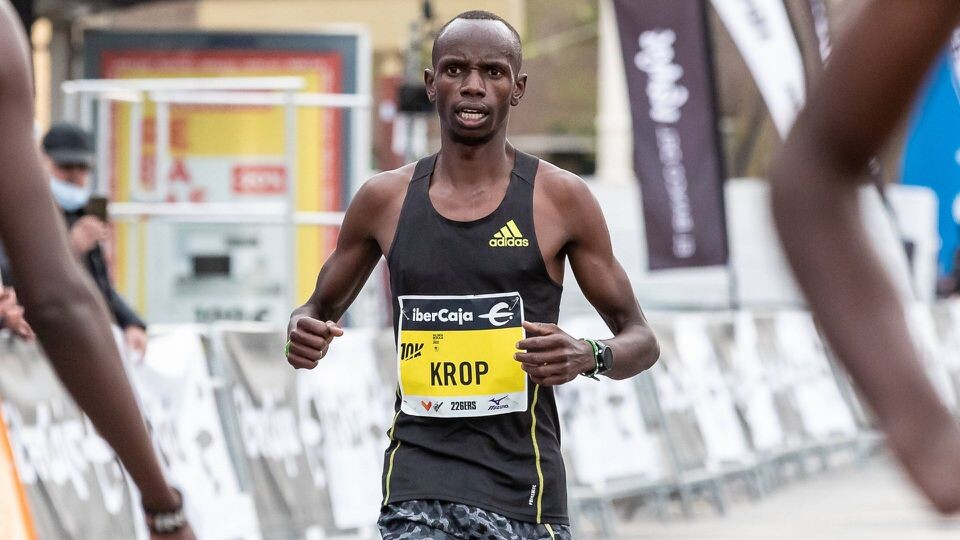
He will team up with Kwemoi and Krop believes they have the ability to silence serial winner Jakob Ingebrigtsen of Norway, defending champion Joshua Cheptegei and other opponents who have for long dominated the distance.
He disclosed that he moved to Japan and training there has been very effective since he has been able to work on certain areas of his training and he is now back.
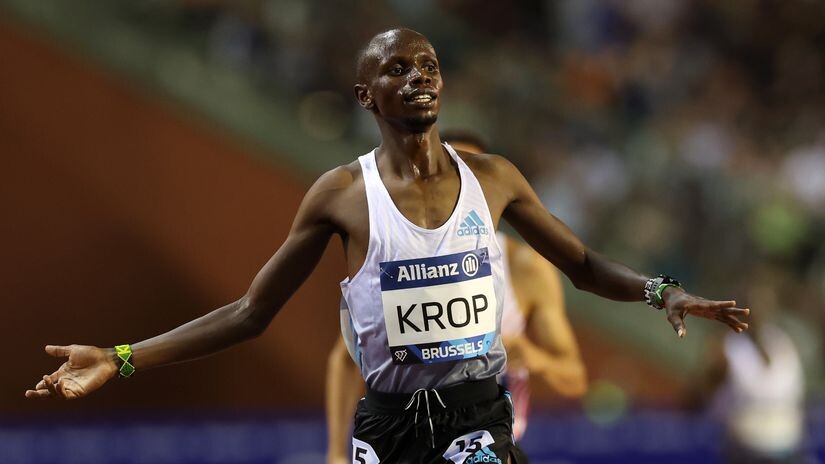
“This is my first time to make the cut to the Olympic team and I want my fans to expect something good. To bring the medals back home, we shall practice teamwork and invest more time in training.
“Everything is possible and I know it’s not easy but we shall work hard in training and see how things work out. I went to Japan and my stay there had been great since they always give me ample time to even come back to Kenya and train,” he said.
Meanwhile, Kenya last won the Olympic gold medal over the distance at the 1988 Seoul Olympics where John Ngungi beat a strong field to claim the coveted prize.
During the delayed 2020 Tokyo Olympic Games, no Kenyan made it to the podium as Cheptegei claimed the top honours with Canadian Mohammed Ahmed finishing second in the race as Kenyan-born American Paul Chelimo completed the podium.
As they head to the Olympics, Krop is aware of the tough opposition but he is sure anything is possible if they work hard and embrace team work.
(06/15/2024) ⚡AMPby Abigael Wuafula
Paris 2024 Olympic Games
For this historic event, the City of Light is thinking big! Visitors will be able to watch events at top sporting venues in Paris and the Paris region, as well as at emblematic monuments in the capital visited by several millions of tourists each year. The promise of exceptional moments to experience in an exceptional setting! A great way to...
more...What You Need to Know About the U.S. Track and Field Olympic Trials
From June 21-30, more than 900 runners, throwers, and jumpers will put it all on the line for a chance to compete for Team USA at the Paris Olympics
The U.S. Track and Field Olympic Trials is a showcase of hundreds of America’s best track and field athletes who will be battling for a chance to qualify for Team USA and compete in this summer’s Paris Olympics. For many athletes competing in Eugene, simply making it on to the start line is a life-long accomplishment. Each earned their spot by qualifying for the trials in their event(s). The athlete qualifier and declaration lists are expected to be finalized this week.
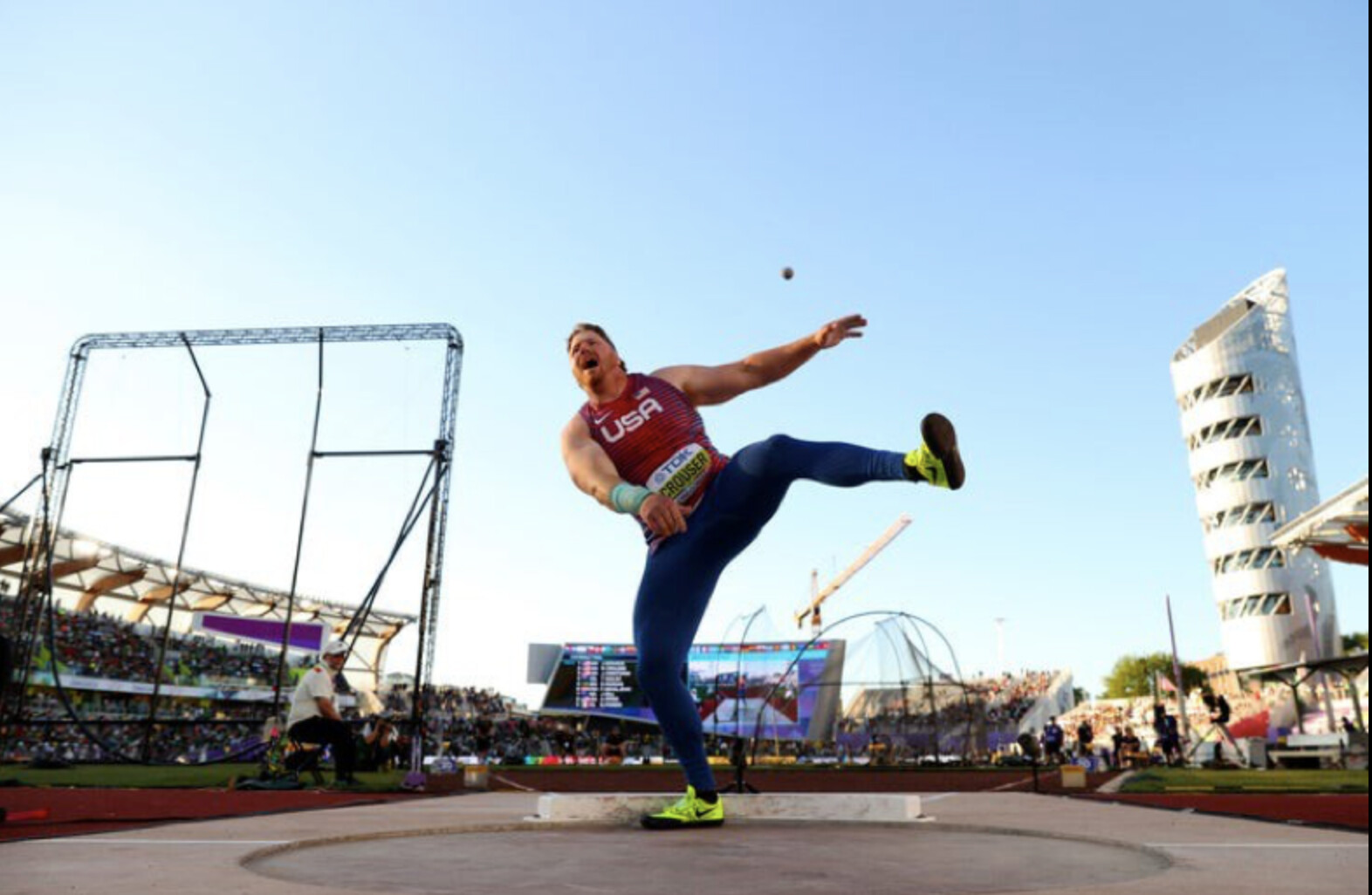
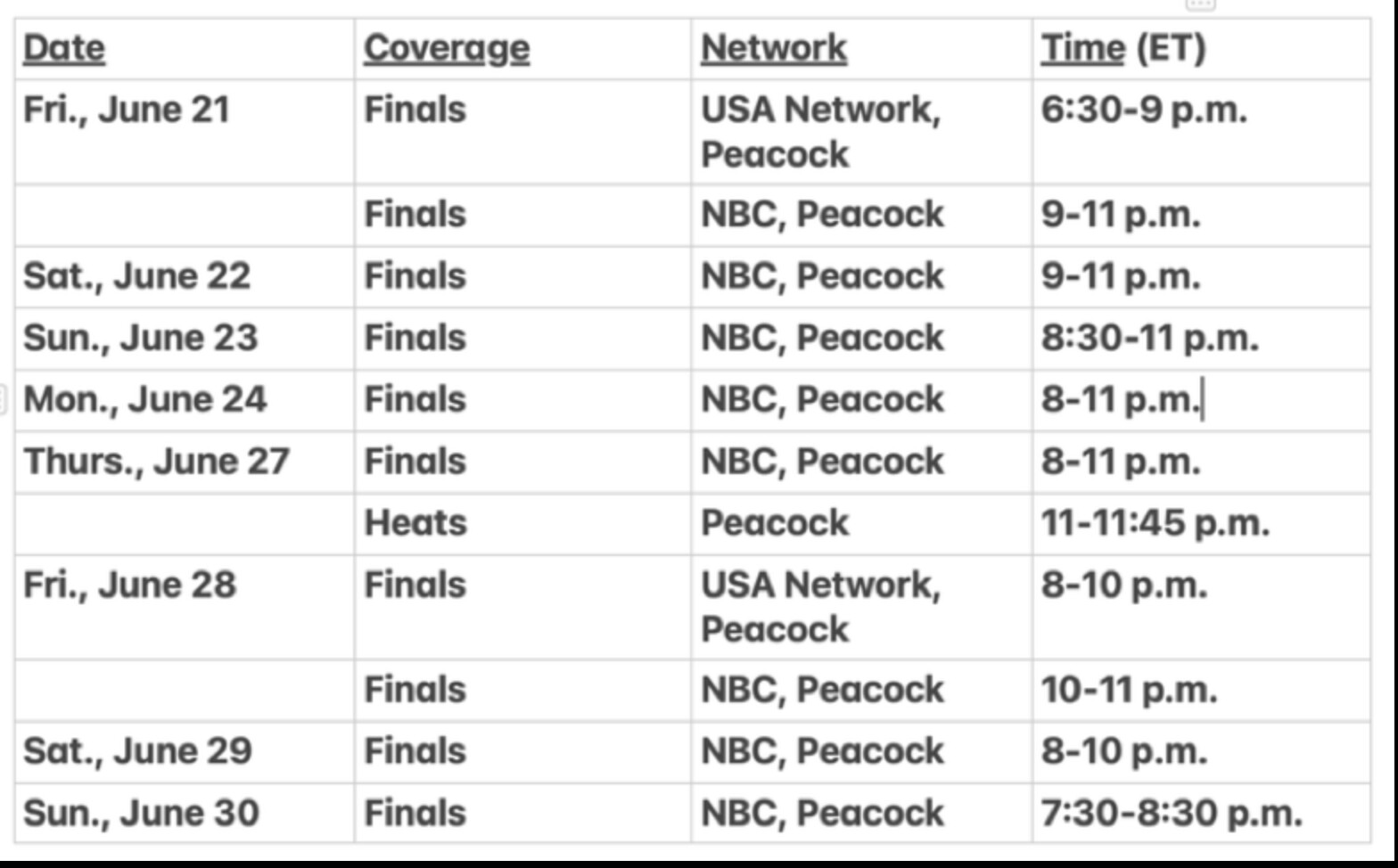
But for the highest echelon of athletes, the trials defines a make-or-break moment in their career. Only three Olympic team spots (in each gender) are available in each event, and given the U.S. depth in all facets of track and field—sprints, hurdles, throws, jumps, and distance running events—it’s considered the world’s hardest all-around team to make. How dominant is the U.S. in the world of track and field? It has led the track and field medal count at every Olympics since 1984.
At the trials, there are 20 total events for women and men—10 running events from 100 meters to 10,000 meters (including two hurdles races and the 3,000-meter steeplechase), four throwing events (discus, shot put, javelin, and hammer throw), four jumping events (long jump, triple jump, high jump, and pole vault), the quirky 20K race walking event, and, of course, the seven-event heptathlon (women) and the 10-event decathlon (men).
(At the Olympics, Team USA will also compete in men’s and women’s 4×100-meter and 4×400-meter relays, plus a mixed gender 4×400, and a mixed gender marathon race walk. The athletes competing on these teams will be drawn from those who qualify for Team USA in individual events, along with alternates who are the next-best finishers at the trials.
There’s also the Olympic marathon, but the U.S. Olympic Trials Marathon was held on February 3 in Orlando, Florida, to give the athletes enough time to recover from the demands of hammering 26.2 miles before the big dance in Paris.
Although some countries arbitrarily select their Olympic track and field teams, the U.S. system is equitable for those who show up at the Olympic Trials and compete against the country’s best athletes in each particular event. There’s just one shot for everyone, and if you finish among the top three in your event (and also have the proper Olympic qualifying marks or international rankings under your belt), you’ll earn the opportunity of a lifetime—no matter if you’re a medal contender or someone who burst onto the scene with a breakthrough performance.
The top performers in Eugene will likely be contenders for gold medals in Paris. The list of American stars is long and distinguished, but it has to start with sprinters Sha’Carri Richardson and Noah Lyles, who will be both competing in the coveted 100 and 200 meters. Each athlete won 100-meter titles at last summer’s world championships in Budapest and ran on the U.S. gold-medal 4×100 relays. (Lyles also won the 200) Each has been running fast so far this spring, but more importantly, each seems to have the speed, the skill, and swagger it takes to become an Olympic champion in the 100 and carry the title of the world’s fastest humans.
But first they have to qualify for Team USA at the Olympic Trials. Although Lyles is the top contender in the men’s 100 and second in the world with a 9.85-second season’s best, five other U.S. athletes have run sub-10-second efforts already this season. Richardson enters the meet No. 2 in the U.S. and No. 3 in the world in the women’s 100 (10.83), but eight other Americans have also broken 11 seconds. That will make the preliminary heats precariously exciting and the finals (women’s on June 22, men’s on June 23) must-see TV.
There are five returning individual Olympic gold medalists competing in the U.S. Olympic Trials with the hopes of repeating their medals in Paris—Athing Mu (800 meters), Sydney McLaughlin-Levrone (400-meter hurdles), Katie Moon (pole vault), Vallarie Allman (discus), and Ryan Crouser (shot put)—but there are more than a dozen other returning U.S. medalists from the Tokyo Olympics, as well as many more from the 2023 world championships, including gold medalists Chase Ealey (shot put), Grant Holloway (110-meter hurdles), Laulauga Tausaga (discus), and Crouser (shot put).
The most talented athlete entered in the Olympic Trials might be Anna Hall, the bronze and silver medalist in the seven-event heptathlon at the past two world championships. It’s an epic test of speed, strength, agility, and endurance. In the two-day event, Hall and about a dozen other women will compete in the 100-meter hurdles, high jump, shot put, 200 meters, long jump, javelin throw, and 800 meters, racking up points based on their performance in each event. The athletes with the top three cumulative totals will make the U.S. team. At just age 23, Hall is poised to contend for the gold in Paris, although Great Britain’s Katarina Johnson-Thompson, the world champion in 2019 and 2023, is also still in search of her first Olympic gold medal after injuries derailed her in 2016 and 2021.
If you can find your way to Eugene—and can afford the jacked-up hotel and Airbnb prices in town and nearby Springfield—you can watch it live in person at Hayward Field. Rebuilt in 2021, it’s one of the most advanced track and field facilities in the world, with an extremely fast track surface, a wind-blocking architectural design, and 12,650 seats that all offer great views and close-to-the-action ambiance. Tickets are still available for most days, ranging from $45 to $195.
If you can’t make it to Eugene, you can watch every moment of every event (including preliminary events) via TV broadcasts and livestreams. The U.S. Olympic Trials will be broadcast live and via tape delay with 11 total broadcast segments on NBC, USA Network, and Peacock. All finals will air live on NBC during primetime and the entirety of the meet will be streamed on Peacock, NBCOlympics.com, NBC.com and the NBC/NBC Sports apps.
The Olympic Trials will be replete with young, rising stars. For example, the men’s 1500 is expected to be one of the most hotly contested events and the top three contenders for the Olympic team are 25 and younger: Yared Nuguse, 25, the American record holder in the mile (3:43.97), Cole Hocker, 23, who was the 2020 Olympic Trials champion, and Hobbs Kessler, 21, who turned pro at 18 just before racing in the last Olympic Trials. Sprinter Erriyon Knighton, who turned pro at age 16 and ran in the Tokyo Olympics at age 17, is still only 20 and already has two world championships medals under his belt. Plus, the biggest track star from the last Olympics, Sydney McLaughlin-Levrone, is aiming for her third Olympics and third Olympic gold (she won the 400-meter hurdles and was on the winning 4×400 relay in Tokyo), and she’s only 24.
Several young collegiate stars could earn their place on the U.S. team heading to Paris after successful results in the just-completed NCAA championships. Leading the way are double-NCAA champions McKillenzie Long, 23, a University of Mississippi senior who enters the trials ranked sixth in the world in the 100 (10.91) and first in the 200 (21.83), and Parker Valby, a 21-year-old junior at the University of Florida, who ranks fifth in the U.S. in the 5,000 meters (14:52.18) and second in the 10,000 meters (30:50.43). Top men’s collegiate runners include 5,000-meter runner Nico Young (21, Northern Arizona University), 400-meter runner Johnnie Blockburger (21, USC), and 800-meter runners Shane Cohen (22, Virginia) and Sam Whitmarsh (21, Texas A&M).
It’s very likely. Elle St. Pierre is the top-ranked runner in both the 1500 and the 5,000, having run personal bests of 3:56.00 (the second-fastest time in U.S. history) and 14:34.12 (fifth-fastest on the U.S. list) this spring. Although she’s only 15 months postpartum after giving birth to son, Ivan, in March 2023, the 29-year-old St. Pierre is running better and faster than ever. In January, she broke the American indoor record in the mile (4:16.41) at the Millrose Games in New York City, then won the gold medal in the 3,000 meters at the indoor world championships in Glasgow in March.
St. Pierre could be joined by two world-class sprinters. Nia Ali, 35, the No. 2 ranked competitor in the 100-meter hurdles and the 2019 world champion, is a mother of 9-year-old son, Titus, and 7-year-old daughter, Yuri. Quanera Hayes, 32, the eighth-ranked runner in the 400 meters, is the mother to 5-year-old son, Demetrius. Hayes, a three-time 4×400 relay world champion, finished seventh in the 400 at the Tokyo Olympics.
Meanwhile, Kate Grace, a 2016 Olympian in the 800 meters who narrowly missed making Team USA for the Tokyo Olympics three years ago, is back running strong at age 35 after a two-year hiatus during which she suffered from a bout of long Covid and then took time off to give birth to her son, River, in March 2023.
No, unfortunately, there are a few top-tier athletes who are hurt and won’t be able to compete. That includes Courtney Frerichs (torn ACL), the silver medalist in the steeplechase at the Tokyo Olympics in 2021; Alicia Monson (torn medial meniscus), a 2020 Olympian in the 10,000 meters, the American record holder in the 5,000 and 10,000 meters, and the fifth-place finisher in the 5,000 at last year’s world championships; and Joe Klekcer (torn adductor muscle), who was 16th in the Tokyo Olympics and ninth in the 2022 world championships in the 10,000. Katelyn Tuohy, a four-time NCAA champion distance runner for North Carolina State who turned pro and signed with Adidas last winter, is also likely to miss the trials due to a lingering hamstring injury. There is also some doubt about the status of Athing Mu (hamstring), the Tokyo Olympics 800-meter champion, who has yet to race in 2024.
Meanwhile, Emma Coburn, a three-time Olympian, 2017 world champion, and 10-time U.S. champion in the 3,000-meter steeplechase, broke her ankle during her season-opening steeplechase in Shanghai on April 27. She underwent surgery a week later, and announced at the time that she would miss the trials, but has been progressing quickly through her recovery. If both she and Frerichs miss the meet, it will leave the door wide open for a new generation of steeplers—including 2020 Olympian Valerie Constein, who’s back in top form after tearing her ACL at a steeplechase in Doha and undergoing surgery last May.
The U.S. earned 41 medals in track and field at the 2020 Paralympic Games in Tokyo—including 10 gold medals—which ranked second behind China’s 51. This year’s Paralympics will follow the Olympics from August 28-September 8 in Paris.
The 2024 U.S. Paralympic Trials for track and field will be held from July 18-20 at the Ansin Sports Complex in Miramar, Florida, and Paralympic stars Nick Mayhugh, Brittni Mason, Breanna Clark, Ezra Frech, and Tatyana McFadden are all expected to compete.
In 2021 at the Tokyo Paralympics, Mayhugh set two new world records en route to winning the 100 meters (10.95) and 200 meters (21.91) in the T-37 category, and also took the silver medal in the 400 meters (50.26) and helped the U.S. win gold and set a world record in the mixed 4×100-meter relay (45.52). Clark returns to defend her Paralympic gold in the T-20 400 meters, while McFadden, a 20-time Paralympic medalist who also competed on the winning U.S. mixed relay, is expected to compete in the T-54 5,000 meters (bronze medal in 2021).
Livestream coverage of the U.S. Paralympic Trials for track and field will be available on Peacock, NBCOlympics.com, NBC.com, and the NBC/NBC Sports app, with TV coverage on CNBC on July 20 (live) and July 21 (tape-delayed).
(06/15/2024) ⚡AMPUnder Armour Diversity Series: Toronto’s Karla Del Grande
For multiple world record holder Karla Del Grande, age is just a state of mind.
Under Armour has teamed up with Canadian Running to produce the Under Armour Diversity Series—an exclusive feature content series designed to highlight and promote individuals and organizations who have demonstrated a commitment to grow the sport of running, support those who are underrepresented and help others. The series features stories and podcasts highlighting these extraordinary Canadians who are making a difference in their communities and on the national running scene.
Karla Del Grande has a few big goals: First, she wants to set another world record, and take home another medal at World Masters Athletics Championships this year. She wants to support her track team at Variety Village in Toronto. And she really, really wants masters athletes to know that the track is open to everyone.

After all, she didn’t find her way there until she was nearly 50 years old. Now, at 71, she’s become a poster-woman of the sport in Canada, thanks to her indomitable record-setting, her sheer dedication to the sport and her love of bringing new people in.
We met up on a snowy day in March at Variety Village, where she trains and runs with the Variety Village Athletics Club. I arrived late, just in time to catch the last 15 minutes of her workout class. Rather than let me stand on the sidelines, she jogged over, grabbed me by the hand, and pulled me into the group class, where athletes of all ages, shapes, sizes and abilities started doing rubber band work with a partner.
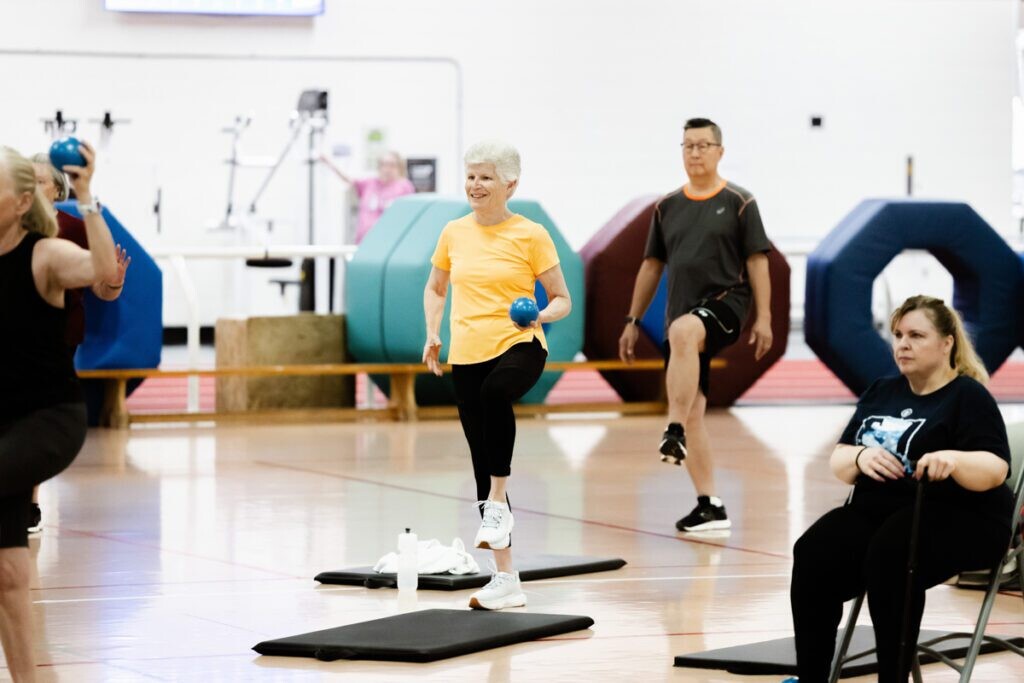
(“Everybody has the right to be part of a gym and have that social connection, no matter who you are, whether you’re a wheelchair user, or you have a mobility issue or anything else,” says Jill Ross Moreash, the class instructor, a former teacher and one of the fittest women I’ve ever seen, told me after class.)
Del Grande handed me a band after I shucked my winter coat and shoes. “You can be my partner,” she said. The workout was not easy.
This isn’t the first time Del Grande has helped bring someone into one of the workout classes. She recalls another snowy day, when she was heading into Variety Village for track practice, and she noticed an older woman standing next to her car, looking bereft. Del Grande started up a conversation, quickly learning the woman had recently been widowed and was hoping to find some conversation and community, but was overwhelmed about going into the gym. Del Grande shepherded her in, gave her a tour, helped her get signed up and brought her to class. She’s so well known as a woman who brings people into the community that she’s honoured on the wall at Variety Village.
That’s how she is on the track, as well: open and generous with her time (while still training to set world records, of course).
As a young girl, Del Grande was sporty, but she and her gym bestie (a race walker named Nicky Slovitt) both recall how, in gym class when they were in school, girls weren’t encouraged to run. That whole bit about our ovaries falling out if we sprinted or high jumped? Not a joke, if you were a gym teacher in the 60s, apparently. They believed it.
The track club at Variety Village isn’t just masters athletes; head coach Jamal Miller has created a vast community of runners ranging from pre-teens to the 70+ age group, with elite runners training alongside new track athletes. “We’re the best kept secret in Scarborough,” says assistant coach Katie Watkins. “We’re in a little bubble of what the world should be. Our track club is quite a diverse team. We cater to people of all abilities, from those living with disabilities to grassroots runners, starting off at age four, all the way up to world champions. The unique part about Jamal and how he trains is that if you’re interested, and you want to try it, he wants to work with you.”
Del Grande is at Variety Village early most days of the week. On Monday, she swims or aqua-jogs, then does weights. (“It’s a longevity thing,” she says. “You need to have balance between focusing on performance but also thinking toward longevity.”) Tuesday, she trains on the indoor track that runs around Variety VIllage’s main gym space. Wednesday is another weight session, this time in a class, and she runs again Thursday. Friday through Sunday depend on what her competition schedule looks like–when we met up on Wednesday, she was racing on Sunday, so the rest of the week was relatively easy, to prepare for that.
Del Grande found the track by accident–a work friend introduced her to running workouts on the track, and it grew from there. At the time, she did casual 5K and 10K runs and races, but she wouldn’t call herself a runner. Her friend brought her along to a track workout held by a local shop. “I really liked the short stuff,” she recalls. “We’d be doing track workouts and everybody else would be complaining that you had to go fast, and going around the track over and over was boring. But I loved it. And finally somebody said, ‘Well, why aren’t you racing it?'”
It was a lightbulb moment. “I thought adults just did road races,” she says. “It’s very hard to get out the information about the sprinting. But it exists–and there are adults doing high jump and shot put and all the other track and field sports, as well.”
She signed up, one thing led to another, and now, she’s one of the fastest female masters athletes in Canada.
“We always say that you’re never too old, you’re only too young to join Canadian Masters Athletics,” she laughs.
(06/14/2024) ⚡AMP
by Molly Hurford
Times have improved so much over the years - Just a Quick Look back on the Flying Finn
94 years ago on Jun 9, 1930 – Finland’s Paavo Nurmi runs a World Record 6-mile clocking 29:36.4. Paavo was nicknamed the 'Flying Finn' as he dominated distance running in the early 20th century. Nurmi set 22 official world records at distances between 1500 metres and 20 kilometers, and won nine gold and three silver medals in his twelve events in the Olympic Games. At his peak, Nurmi was undefeated at distances from 800 meters upwards for 121 races. Throughout his 14-year career, he remained unbeaten in cross country events and the 10,000 meters.
(06/14/2024) ⚡AMPby Gary Cohen
Jakob Ingebrigtsen sends Josh Kerr message in statement 1,500m victory at European Championships
The Norwegian completed the double in Rome after victory in the 5,000m and will resume his rivalry with world champion Kerr at the Paris Olympics in one of the sport’s most gripping rivalries
Norway's Olympic champion Jakob Ingebrigtsen won the 1,500 metres in Rome on Wednesday for a record sixth European Championship gold.
The 23-year-old charged down the final metres and was all by himself when he crossed the finish in 3:31.95, a championship record, to become the most decorated male athlete ever in the continental championship.
Belgian Jochem Vermeulen took the second spot on the podium in 3:33.30 while Italian Pietro Arese was third in 3:33.34.
"Today it's about winning. At the same time, I'm looking for answers in every single question I'm asked. Today I got a lot of good answers," he told a Norwegian broadcaster.
Ingebrigtsen is expected to form one of the most compelling rivalries of this year's Paris Olympics against Briton Josh Kerr, who denied him the gold in Budapest last year.
Ingebrigtsen hurled himself over the finish to win last month's Oslo Diamond League meet, after finishing second to Kerr over the mile race days earlier at the Prefontaine Classic.
(06/14/2024) ⚡AMPEilish McColgan posted this on FB about her DNF in Rome
Obviously I was disappointed to DNF last night in Rome, but I just didn't feel myself right from the gun and not 100% sure why that was the case. Unfortunately I've learnt from experience that when a 10k race is going wrong, it tends to go wrong very early!
I'm trying not to overthink it too much, as training the last 3 weeks in particular has gone extremely well, so I know I'm on the right trajectory. Maybe I got my days down from altitude wrong, trying to run at a different time to what's normal for me. All I know is that's not the Eilish I've seen the past few weeks in training.
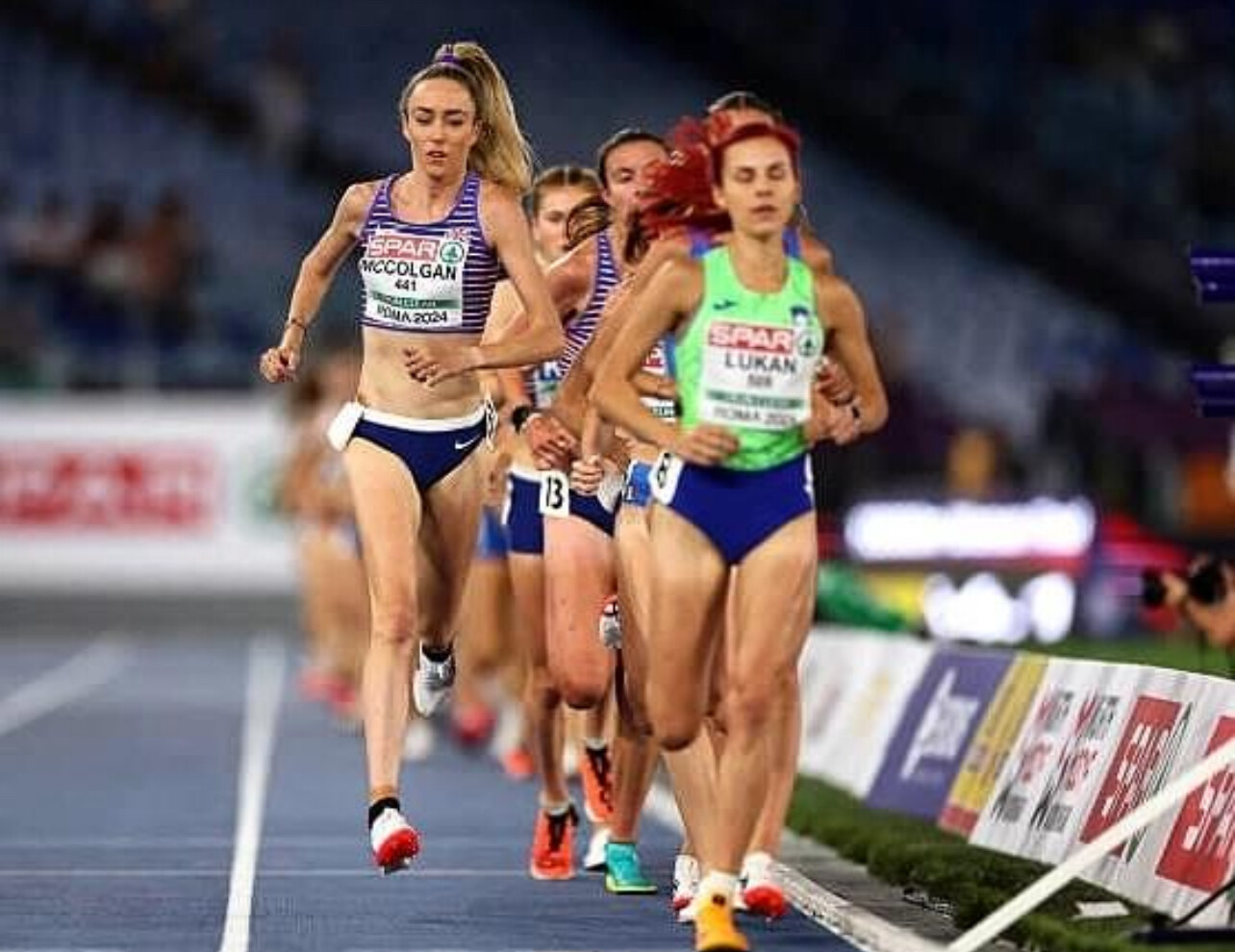
But mentally, it was a big step forward to be able to put on a pair of spikes and race on the track again after knee surgery. ? So there are still small positives from every situation.
With 8 weeks between now and Paris, I believe I can get back to my best. But I need the opportunity to get my head down and into consistent training.
We see it all coming together in training, so I know it's only a matter of time until it clicks. ?
Thanks for all the lovely messages. It's appreciated. ❤️ I'll be back sooner than a lot of people may think! Some seem to have very short term memories - like it wasn't just LAST YEAR I ran my fastest ever times...
Some Facts about this super star:
Eilish McColgan (born 25 November 1990) is a Scottish middle- and long-distance runner. She is the 2022 Commonwealth Games 10,000 Metres champion with the Games record, and 5000 Metres silver medallist. McColgan is a four-time European Championships medallist, winning silver medals for the 5000 m in 2018 and 10,000 m in 2022, bronze in the 5000 m in 2022, and a bronze for the indoor 3000 metres in 2017. She is the European record holder for the 10 km road race, and the British record holder for the 5000 m, 10,000 m, 5 km and half marathon. She also holds the European best in the 10 miles on the roads.
(06/14/2024) ⚡AMPby Eilish McColgan
Father’s Day gift ideas for your favorite running dad
Looking for the perfect gift for your run-loving Dad or partner this Father's Day? If the men in your life are notoriously tricky to buy for and you need some gift inspiration for the big day, you've come to the right place!
From the coolest running socks for speedy dads, to heartfelt race day mementoes for your formerly formidable marathoner old man, keep scrolling for the best Father's Day gift ideas for the runner in your life.
Gift ideas for running dads

In a hurry? Here are the top picks. Keep scrolling for the full list.
When is Father's Day in 2024?
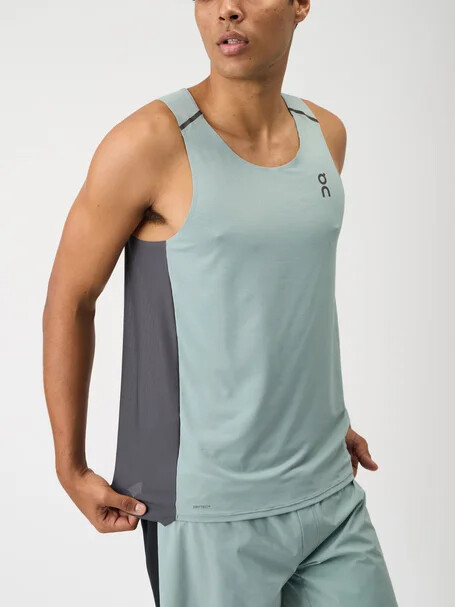
This year Father's Day is on Sunday 16th June 2024. But why wait for an excuse to treat the runners in your life? We've rounded up the best gift ideas for any and every type of runner. Keep scrolling for more tips and inspiration for him though.
The best Father's Day gifts for dads who run
From the best running shoes and socks, to keepsakes to make your run-loving dad smile all day long, we've rounded up the best gift ideas who dads who run. Nothing here for you? Check out our runner’s gift guide for more inspiration.
Personalised Metal Shoe Tag
Super proud of the running dad in your life but rarely have time to make the finish line/cheer squad? Now he can keep a little reminder with him during all of his runs, with this heartfelt personalised shoe tag. It can be moved from shoe to shoe, and will keep his spirits up and let him know you're thinking of him during every race and training run.
Danish Endurance Quarter-Length Running Socks - 3 Pack
Irrespective of your Dad/partner's running prowess, nothing says 'Happy Father's Day' like a new pair of box fresh socks! This set of three, quarter-length socks from Danish Endurance have arch compression and cushioning for comfortable, soft, blister-free runs. And if you can prevent his feet from stinking up the house, then it's win-win all round.
Whoop Whoop Strap 4.0
For dads who love to hone in on their health and fitness metrics, you can't really do better than buying them a Whoop Strap 4.0. This wearable sensors tracks everything from your sleep to your heart rate variability, recovery and daily effort to provide a holistic overview of your current health status, and the accompanying app provides insights and advice on how ready you are to train. Sound like something Dad would love? Buy him an annual Whoop membership for £229 and the band is included as part of the membership. Plus, from 10th to 24th June, that also gets you £45 off any Whoop accessory.
Brewgooder Mixed Pack (4 x 330ml)
A great tasting beer (especially post-run) with some eco-credentials (it's brewed using fonio, a grain that can grow anywhere without fertilizer), this session IPA from Brooklyn Brewery and Brewgooder is worth considering if the dad you're buying for likes beer (and some beer is proven to aid recovery).
Personalised 'Running Star' Mug
You can never have too many mugs! But this one is extra special, because it can be personalised with the heartfelt message of your choice. Use up to 20 characters on the front and 40 on the back to let your Dad/partner know he's a running superstar, record his best running times so he can bask in the glory of his marathon PB every morning, or better yet, remind him to wash his stinky socks!
Exhale Organic Ground Coffee
Old man partial to a morning brew? Exhale dubs itself ‘the ridiculously healthy organic coffee that’s backed by serious science’. While poor processing and over roasting can often knock out coffee's natural, fruity goodness, Exhale’s unique process locks in more of its healthiest compounds while keeping out the bad stuff. Don’t believe us? The product goes through nine different independent lab tests to confirm the beans are free from nasties, and as high in antioxidants and vitamins as possible (read more here). Everything is ethically sourced, too, down to the compostable packaging. We’d recommend the Dark(ish) blend — it’s rich, deliciously smooth and there’s absolutely no bitterness.
Running Events Entry
If your Dad/partner is an avid runner and you've already bought him enough socks to clothe an army, now is the time to give him the ultimate gift: race entry to the event of his dreams! Has he been babbling on about finally entering his first ultra, or that local 10K that clashes with lunch at the in-laws? Guarantee smiles all-round this Father's Day with a day pass to run his heart out.
'Runners Kit' Letterbox Gift
If you've exhausted all of the obvious gifting ideas and you just want to let your running Dad know you're thinking of him, this cute and heartfelt runner's kit will be just the ticket, and you can send it direct to his house. The pack includes stretching ideas, peanut butter and snacks, and epsom bath salts for a relaxing soak post run. Happy days!
On Performance Tank
In our opinion, you can never have enough running vests, and this one from On is a solid option. It’s noticeably light (On says it weighs 63.5g) and made from very fine, almost silk-like fabric. It’s very comfortable, featuring completely flat, taped seams, rather than stitched. The scoop of the neck is fairly wide and the upper back is covered rather than racer cut. If you know someone with plenty of races on the horizon, this would make a good race day option for them.
Inov-8 Train Lite 9" Short
Whether he's an avid trail runner or a weekend rambler, your dad will be grateful for a pair of these versatile trail shorts from off-road specialists Inov-8. They are lightweight and moisture-wicking and feature a handy stabiliser smartphone pocket – ideal for summer adventures.
Personalised Oak Photo Frame And Medal Hanger
Another super-cool race day memento idea, this one can be personalised with your dad/partner's details on the frame alongside his race day pics and map route, plus it comes with hooks to hang his medals!
(06/14/2024) ⚡AMPby Rhalou Allerhand and Jenny Bozon


